Travel Europe on a Budget
The Savvy Backpacker

City Guides .\33 a132798-3f3b-4585-954d-7e70cf863447{fill:#231f20}
The ultimate packing list | travel checklist for for wherever you travel.
Our curated travel checklist to help you pack and prepare for your next vacation.
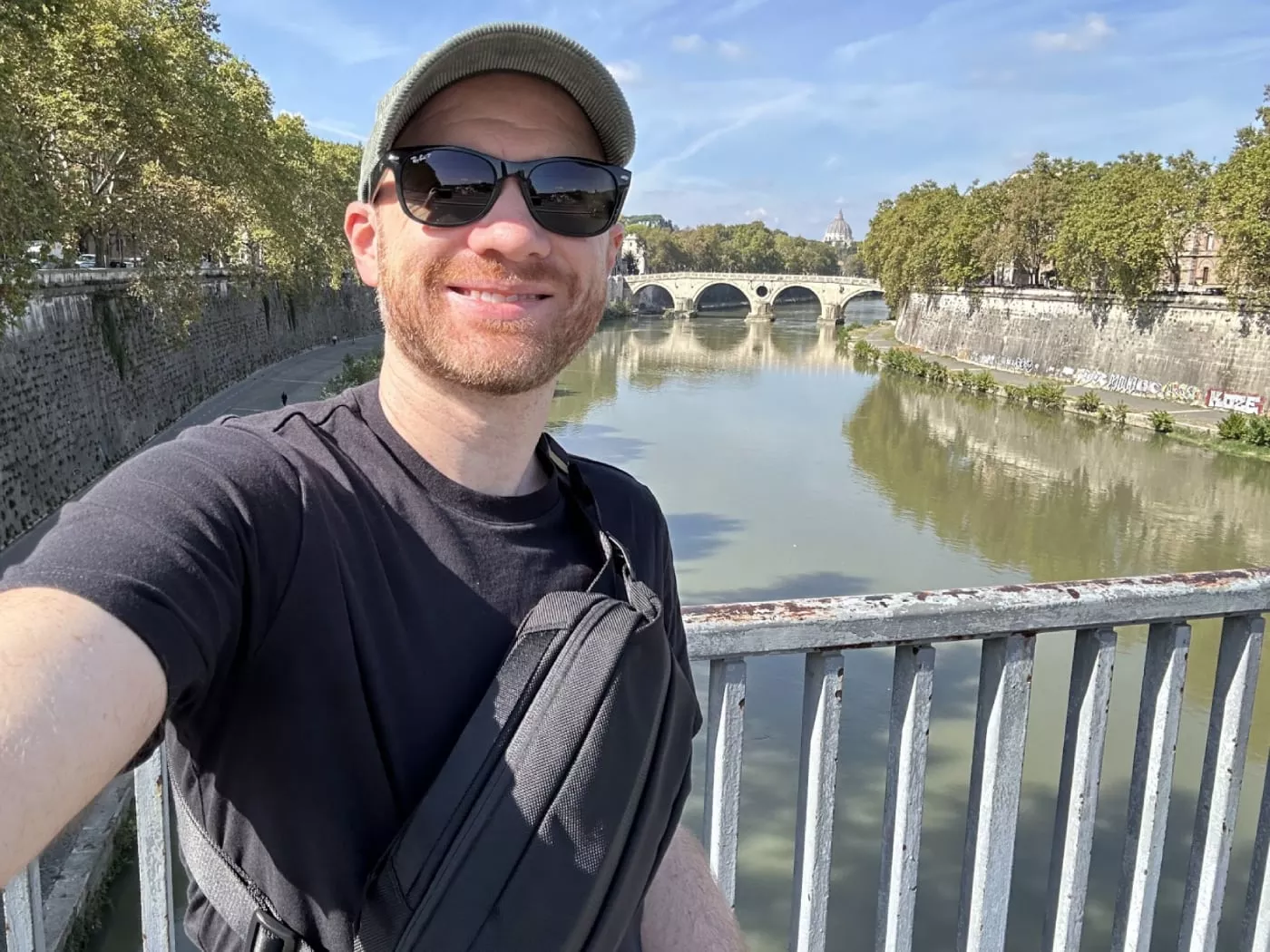
So you’ve finally booked your travel but now comes the most annoying and confusing part — packing and making sure you’ve done everything to be fully prepared. We travel thousands of miles a year so we have this packing thing down to a science. That’s why we’ve created this travel checklist (which also includes our favorite travel gear) to ensure you don’t forget anything during the pre-travel chaos.
We’ve divided this packing list into multiple sections:
Summer Clothing
Winter & off-season clothing, travel accessories, travel technology.
- Luggage & Packing Aids
Pre-Travel Checklist
More packing resources.
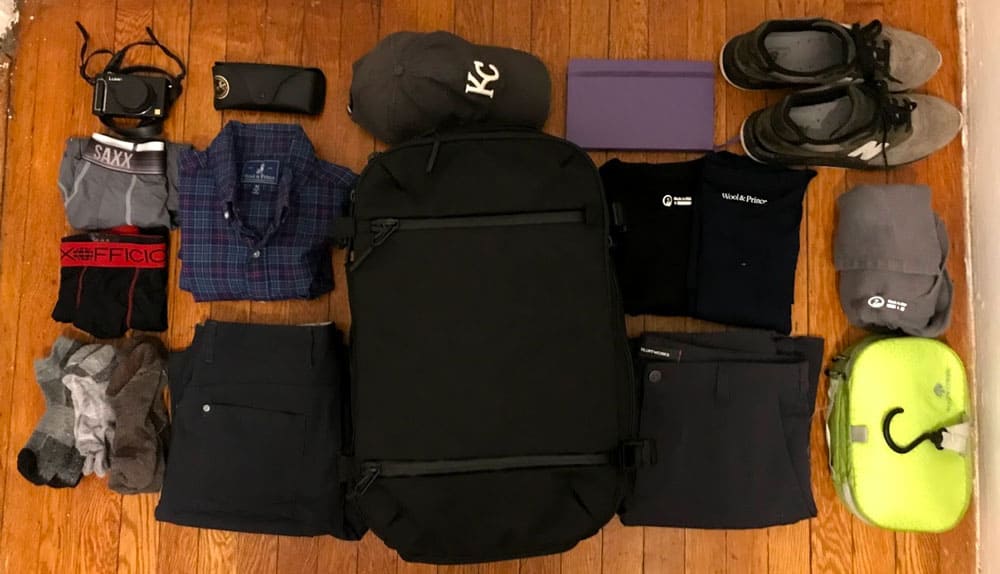
Let’s start with clothing since this is the bulk of what you’ll be packing.
- Underwear/Bras: A few quality pairs of underwear will make traveling much more comfortable — especially on an extended trip. Check out our favorite travel underwear to learn more.
- Sleepwear: Travel is exhausting so a good night’s sleep is essential. Wear whatever is comfortable.
- Athleta : Athleta has really stepped up their travel clothing and they have a lot of solid options. Some of their offerings feel like yoga clothes but there are some non-yoga choices.
- Lululemon : Lululemon has a number of good travel clothing options. Again, many of their options look a little too “athleisure” but there are some nice-looking choices.
- Prana : Prana is a company that has traditionally made outdoorsy clothing but they’ve recently started making more fashionable items.
- Anatomie : Anatomie has a bunch of higher-end, fashionable travel clothing.
- Uniqlo : Uniqlo always has a few great travel clothing options that are friendly on your bank account. Their stock is always changing so be sure to check them out.
- Shorts & Skirts: Warm weather calls for shorts and skirts — plus they take up very little space in your bags.
- T-Shirts: We always pack a couple of t-shirts for day-to-day travel and they work well for sleep. We like wool t-shirts from Wool & Prince and Unbound .
- Dress/Dress Shirt: We pack one slightly more formal outfit if we want to dress up a bit. Wool & Prince has nice wool options and Bluffworks has some nice synthetic options.
- Swimsuit: Don’t forget a swimsuit if you’re heading to somewhere with a beach or pool.
- Light Jacket: Unless you’re traveling in the middle of summer, it’s usually smart to pack a light jacket — they’re also nice for chilly plane rides. Fleece or lightweight puff jackets are our favorite options. We love our Patagonia Nanopuff and Patagonia Better Sweater but anything will do.
- Rain Jacket: A lightweight rain jacket is nice if you’re traveling during rainy times. REI has a nice selection.
- Waterproof Shoes/Boots: We highly suggest waterproof or weather-resistant footwear if you’re not traveling during the summer. We like waterproof sneakers since they’re comfortable and functional. There are also more hiking-style shoes if you want a little more support.
- Shower Sandals: If you’re staying in a hostel or other budget accommodation then we highly recommend a cheap pair of sandals.
- Belt: Keep your pants on. Worried about safety? Check out these hidden pocket travel belts .
- Hat: You’ll probably spend a lot more time outside then normally so be sure to bring a hat to protect yourself from the sun.
- Sunglasses: We also suggest bringing a protective case or bring a pair that you won’t mind losing.
- Watch: Don’t miss that train because you’re late. We like using a watch instead of looking at our phone all the time simply because we don’t have to constantly pull our phones out.

Winter is great as long as you know how to dress for the cold weather and possible rain/snow. The real key is layering a few key pieces of clothing to create maximum warmth without adding a ton of bulk.
- Good Socks: A few nice pair of socks will help keep your feet warm and dry — which is essential in the cold weather. We like to put on a fresh pair halfway through the day. Smartwool & Darn Tough are our favorite brands but there are plenty more on REI .
- Base Layer: A thin base layer will add a ton of warmth so we always throw on a pair of long underwear. Our favorite fabric is fine merino wool since it is warm and resists odors. Synthetic is a much cheaper option but it doesn’t do a very good job of resisting odors. Browse REI to find something in your price range.
- Mid-Layer: A nice fleece or lightweight puffer jacket will add a ton of warmth when worn under a larger coat — and it’s especially warm when paired with a base layer. We use the Patagonia Nanopuff and Patagonia Better Sweater .
- Long-Sleeve Shirt: A long-sleeve shirt, whether a sweater or a button-up, are both great ways to add warmth without adding bulk.
- Hat, Gloves, & Scarf: Keep your extremities warm.
- Water-Resistant Footwear: Ideally, you’ll want a pair of waterproof shoes for those rainy or snowy days. Weather-resistant footwear is also a good option because fully-waterproof shoes aren’t always easy to find — especially if you don’t want boots or if you’re concerned about fashion.
- Winter Coat: A warm waterproof coat is a must if you’re traveling in really cold climates. REI has the best selection so check them out.
- Notebook & Pens: A small notebook is a great travel accessory because you never know when you’ll need to jot something down. We like to write down addresses and confirmation numbers so we don’t have to go searching through emails. Moleskine Notebooks are the classic choice.
- Guide Books: We’re still fans of guidebooks since they’re a quick and easy way to see what to check out in each location we visit. We’re fans of Rick Steves and Lonely Planet.
- USB w/ Important Info: Honestly, these days I save all my important information (credit card info, passport copy, etc.) to my Google Docs but it’s not a bad idea to have the information saved to a USB that you can hide.
- Travel Towel: If you’re staying in a hotel or rental apartment you don’t need a travel towel but people staying in hostels should consider packing a quick-drying travel towel .
- Money Belt: While we’ve never been big fans of money belts, there are a lot of people who swear by them. Check Amazon as there are multiple options there.
- Eye Mask and Earplugs: An eye mask can be nice for sleeping on planes/trains and earplugs can be nice for noisy environments.
- Stain Remover: Washing your clothes isn’t easy while on the road so a stain remover will come in handy. Tide2Go Pens is our top pick.
- Handwashing Stuff: If you want to wash clothing in your sink then you’ll want a sink stopper , travel soap , and possibly a travel clothesline .
- Lint Roller: Be gone vile lint!
- Door Stop/Lock: If you’re staying in an unfamiliar place or traveling alone then using something like a portable doorstop or this portable door lock adds some extra security.
- Padlock: You’ll want a basic padlock if you’re staying in hostels so you can lock your lockers.
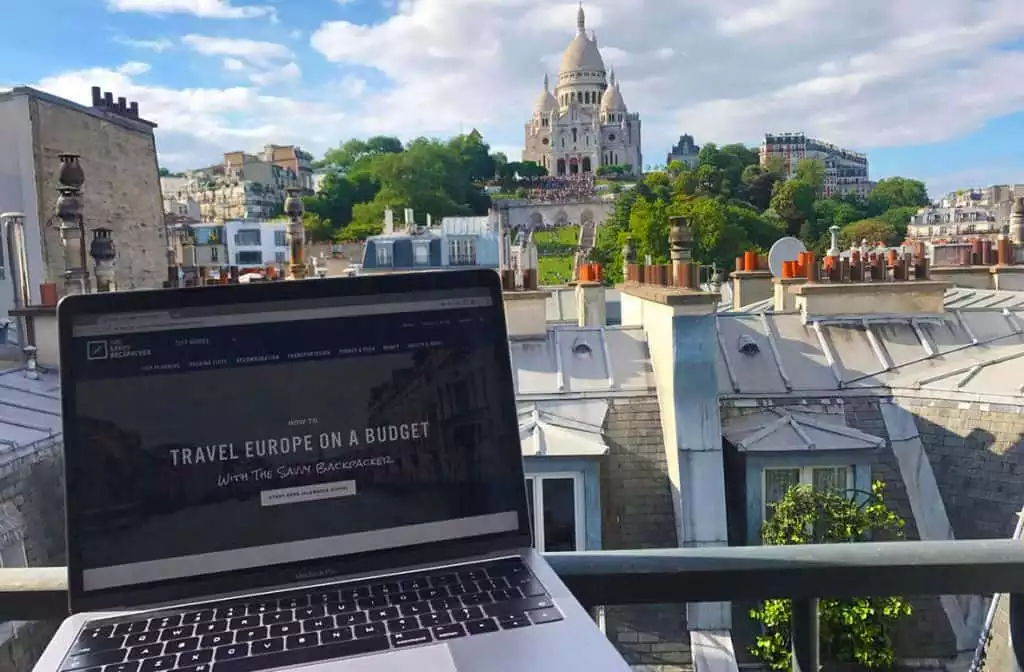
- Portable Battery Pack: Travel (especially GPS) kills your phone’s battery so a portable battery is a must these days. Amazon has multiple chargers so get whatever fits your budget.
- Plug Adaptor: If you’re traveling internationally then you’ll need a few plug adaptors for your electronics.
- Headphones: Confession, I love my Apple AirPods cause they’re amazing for travel. Not having to deal with wires or bulky headphones is a godsend — especially on flights. That said, we still pack a pair of normal earbuds just in case.
- Extra USB Cables: You can never have too many USB charger cables since I always seem to lose at least one when I travel. That’s why we throw an extra cable into your daypack so we always have one within reach.
- Portable Power Strip: Many hotels and hostels don’t have a lot of electrical outlets so a portable power strip is a nice thing to have. We use this Belkin Travel Power Strip because it also has USB ports.
- International Data Plan: Check your phone plan’s international rates because international data could cost you a fortune. While we’ve never used one, mobile hotspots have become a popular option if you need reliable data wherever you’re traveling.
- Camera w/ Extra Memory Cards: If you’re a photo geek then you’ll want to pack your digital camera. These days we mostly use our phones to take photographs but a camera is a must if you want really nice photos.
- Laptop/Tablet: We rarely travel with a laptop but we love our iPads. They’re great for travel since they’re small and powerful.
- Blowdryer/Curling Iron: Make sure your accommodation provides a blowdryer. If not, we suggest a travel hairdryer since they take up less space. Traveling abroad? Ensure you get a dual-voltage hairdryer or you’ll fry your North American dryer since Europe uses a higher voltage. The same goes for hair straighteners/curlers.
Travel Toiletries

- Pepto-Bismol Tablets: Travel can wreak havoc on your digestive system and Pepto tablets are easy to throw in your bag.
- Band-Aids: We mostly use bandaids for those pesky blisters on our heels so we always pack a few heavy-duty bandaids. There are also bandages for your heels if you’re prone to blisters.
- Body Powder: Lots of walking in hot weather can lead to chaffing — which is never any fun. Body power is a great way to help prevent some uncomfortable situations. We like Anti Monkey Butt or good ol ‘ Gold Bond powder .
- OTC Pain Medicine: Medicine is often only sold in pharmacies but many pharmacies are only open for limited hours so we always pack some so we at least have a few pills on hand.
- Basic Makeup: It’s easy to go overboard with makeup so we suggest only bringing the basics. Here are some skincare products and cosmetics .
- Toothpaste: We either start with a small tube and buy it once we arrive or throw in whatever we have at home. It also depends if we’re flying carry-on only or not.
- Toothbrush and Toothbrush Cover: We just pack our normal toothbrush and we clip on a self-sanitizing brush protector to help keep it clean.
- Floss: We’ve found floss to be expensive in some places so pack some.
- Shampoo/Bodywash: If you’re traveling with a carry-on then we highly recommend putting your liquids and gels into Go Toob travel containers because they won’t leak.
- Deodorant: Don’t stink.
- Sunscreen: We buy ours online since it’s expensive in the stores.
- Lip Balm: We pack a few tubes of lip balm because always end up losing a couple.
- Face Wipes : A pack of Resealable Face Wipes is great for freshening up after a long plane ride. Throw a pack into your carry-on.
- Moisturizer: Travel can be very dehydrating — especially flights.
- Jet Lag Pills: Arrive not feeling like a zombie. Miers Labs No Jet Lag is the most popular choice.
- Hand Sanitizer: To sanitize your hands.
- Contact Solution: Finding contact solution can be surprisingly tough in some places
- Perfume/Cologne: Scents and memory have a powerful connection so we like wearing a new fragrance when we travel somewhere new. We’re cheapos so we’ll often get some free samples from the store. But we suggest packing a Refillable Perfume Bottle Atomizer if you already have a fragrance you already own.
- Nail Clippers: Keep your nail game strong.
- Wet Wipes: These can be a lifesaver when you’re on the road.
Luggage And Packing Aids
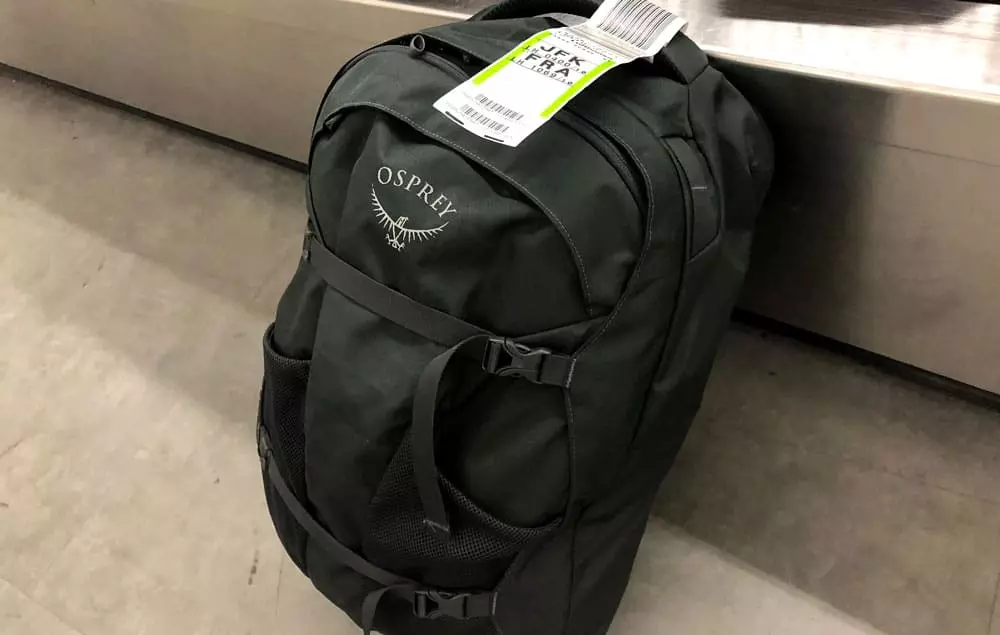
- To learn more, check out our article on the best travel backpacks & the best travel backpacks for women .
- Daypack: You’ll want a smaller bag or backpack to wear while you’re out exploring during the day. It doesn’t have to be anything fancy but we recommend something with secure zippers to deter pickpockets. Here’s a list of our favorite daypacks .
- Toiletries Bag: Keep all your toiletries organized. We prefer toiletry bags that have a hook in case you’re staying in a bathroom with little/no counter space. Amazon has multiple options.
- Packing Cubes: The best way to keep all your clothing organized and relatively wrinkle-free is by using packing cubes. We always use packing cubes these days so check out our guide to the best packing cubes to learn more.
- Travel Liquid Bottles: There is nothing worse than when your liquids leak all over your stuff so we highly recommend using the GoToob Leak-Proof Travel Bottles .
- Plastic Bags/Ziplock Bags: Throw in a few plastic bags and ziplock bags since they come in handy. We pack our important documents in a ziplock bag for protection and we’ll put extra shoes in a plastic bag to protect our clothing from dirty shoes.
- Coin Bag: If you’re traveling to Europe then we suggest packing a small change purse/pouch since you’ll get lots of coins.

Ok, so you have everything packed but there are a few more things to think about before you depart.
- Get Travel Insurance: If you’re going on a big trip then you might want to consider picking up some travel insurance to cover any unforeseen medical emergency or travel interruptions. We use World Nomads since they offer affordable insurance.
- Triple Check Your Travel Dates: You would be surprised at how many people mix up their travel dates — especially with international flights where you arrive a day later than when you left because of the time zones.
- Book Accommodation: You’ll almost always get the best deal on hotels, hostels, and rental apartments by booking early. We like Hostelworld for hostels, Booking.com for hotels, and Airbnb for rental apartments.
- Book Train Travel: Traveling Europe by train? You might save a good amount if you book your tickets early. Check out our guide on How To Travel Europe by Train . Also, if you’re traveling with a Eurail Pass then you’ll want to order it a few weeks before departure.
- Get Your Passport: Double-check your passport and make sure it is still valid since it can take a few weeks to get a new passport. Check out the State Department’s Passport page for information.
- Write Down Reservation Numbers: We like to write down all our reservation numbers in a small notebook so we don’t have to go searching through our email for those elusive numbers.
- Call Credit Card & Bank: Let your bank and credit card companies that you’ll be traveling because they might cancel your cards once you start using them overseas. We also recommend bringing an extra credit card for emergencies.
- Make Copies of Important Documents: Take a photo of your passport and credit cards and save them to your Google Drive or email them to yourself. This will help you get them replaced quickly if they get lost/stolen.
- Research Where You’re Going: You don’t have to plan out every minute of every day but spend a few hours researching things like what to see, cool restaurants, and nice bars. This way you don’t have to worry about missing something you really want to experience.
- Figure Out How To Get From Airport/Train Station: There are often a handful of ways to get from the airport to your accommodation so it’s smart to do your research before you arrive — especially if the destination is known for crooked taxi drivers.
- Download Audioguides: We’re big fans of Rick Steves’ free audioguide walking tours so we make sure to check if he’s made one for our destination.
- Check Your Phone’s Data Plan: Be sure to check your phone’s international data plan to see if you can use it abroad or see how much it will cost to use data.
- Hold Your Mail: If you’re going to be gone for a long time then you’ll want to have the post office put a hold on your mail.
- Break-In Your Shoes: Don’t make the mistake of wearing brand-new shoes as that’s a surefire way to get painful blisters. So put some miles on your shoes before you depart.
- Research The Weather: It’s impossible to predict the weather but you should take a look a few days before you depart so you can tailor your clothing choices.
- Arrange Visas: Not every country requires a visa for entry but some do so you’ll need to take that into consideration and give yourself enough time to get them.
- International Drivers License: Not every country requires an international driver’s license so do some research you plan on driving.
- Don’t forget to weigh your luggage to make sure you’re under the weight limits. We suggest picking up a luggage scale .
- Pack Some Travel Snacks: Having a stash of simple travel snacks like beef jerky, granola bars, etc. is always a good idea.
- Consider Getting Some Currency: Some people like to get a small amount of foreign currency before they depart. ATMs are easy to find these days but having a little cash on hand when you arrive gives you a nice piece of mind.
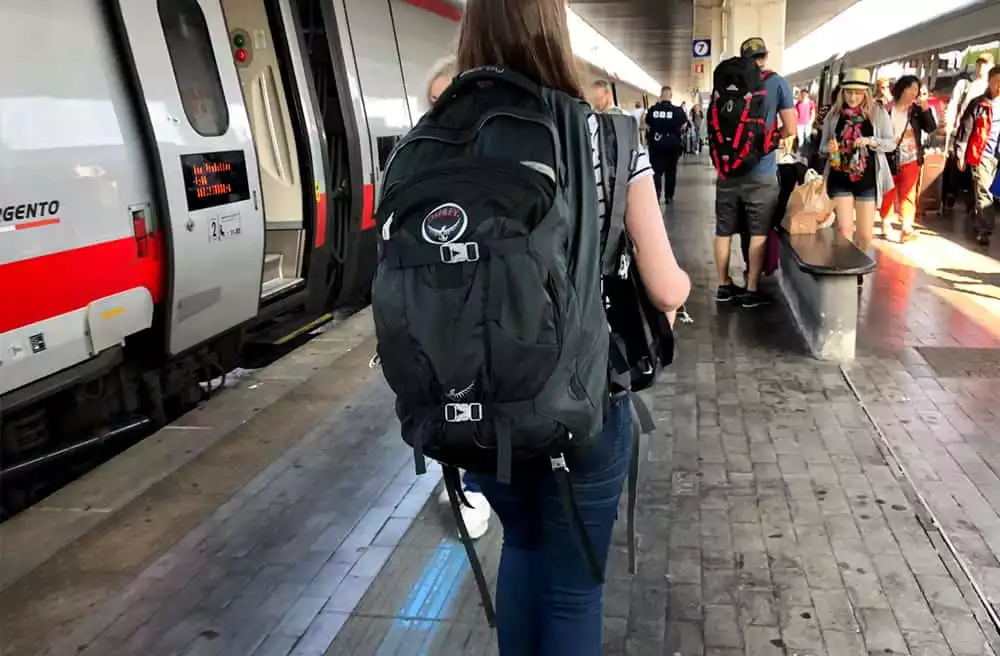
We’re always writing about the best travel gear and giving your our favorite packing tips. Here’s a list of more articles we’ve written in the past:
- Best Travel Backpacks
- Best Travel Backpacks for Women
- Best Carry-On Backpacks
- Best Travel Shoes
- Best Waterproof Boots for Men
- Best Waterproof Boots for Women
- Best Travel Pants for Men
- Best Travel Underwear (Men’s and Women’s )
- Best Hiking Socks For Backpacking Europe
- Guide to Fashionable Travel Clothes and Performance Techwear
- Best Daypacks and Day Bags for Traveling Europe
- Best Packing Cubes
- How To Properly Pack Your Backpack for Maximum Organization & Wrinkle-Free Clothing
- Guide to Ultralight Backpacking and Travel in Europe
- Tips for Choosing Between a Backpack or Wheeled Luggage
- Guide To Dressing For Winter in Europe
- How to Avoid Looking Like An American Tourist In Europe
- Women’s European Fashion — Tips for Dressing like a European
- Skincare, Makeup and Beauty Essentials For Travel
- Recent Posts
- Best Prepaid UK eSIM | Data Plan Buyer’s Guide - April 21, 2024
- How to Avoid Pickpockets in Europe — Tips for Outsmarting the Thieves - April 19, 2024
- Best Prepaid eSIM For Italy | Data Plan Buyer’s Guide - April 18, 2024

No Funny Business
The Savvy Backpacker is reader-supported. That means when you buy products/services through links on the site, I may earn an affiliate commission—it doesn’t cost you anything extra and it helps support the site.
Thanks For Reading! — James
Questions? Learn more about our Strict Advertising Policy and How To Support Us .
Related Reads
Backpacking europe packing list — my europe travel packing guide.
A comprehensive packing list and advice for budget backpacking and ultralight travel in Europe — including electronics, clothing, toiletries & accessories.
Helpful Travel Tips & Articles , Packing
Fashion Advice: How to Avoid Looking Like An American Tourist In Europe
Fashion advice to help you look like a local when visiting Europe.
The Best Travel Backpacks | In-Depth Buyer’s Guide & Backpack Reviews
A list of my favorite travel backpacks for every travel style.
Packing , Product Reviews
Best Travel Shoes — Fashionable & Comfortable Shoes for Traveling
The ultimate guide to the best travel shoes that are both stylish and comfortable.
City Guides
Choosing travel insurance, travel packing lists, budget travel newsletter.
The best budget travel tips sent straight to your inbox.
Join My Journey
Europe travel tips, advertising & privacy policies.
TheSavvyBackpacker.com is a participant in the Amazon Services LLC Associates Program, an affiliate advertising program designed to provide a means for sites to earn advertising fees by advertising and linking to amazon.com.
© 2010 - 2024 The Savvy Backpacker
Website Design by FHOKE
Get Daily Travel Tips & Deals!
By proceeding, you agree to our Privacy Policy and Terms of Use .

The Ultimate Backpacking Packing List: 18 Key Items To Take
Joseph Francis
Joseph "Rich" Francis has been a travel writer for over 10 years. His specialties include surf travel, hiking travel, and European travel, along with Italy, Poland, Thailand, and Sri Lanka. You can find him blogging over at The Surf Atlas.
Travel Smarter! Sign up for our free newsletter.
So, you’re heading off on that first adventure? You’re ready to hit the hostels and see the sights, tour the Colosseum, hike the Carpathians, and drive Route 66. Whatever bucket-list things you have on the menu, don’t even think about leaving without checking out our essential backpacking packing list.
We’ve got tips on the top backpacks for long-term budget travelers and oodles more suggestions on what to have in tow when you hit the road, from thermal fleeces to swimwear.
The Essentials
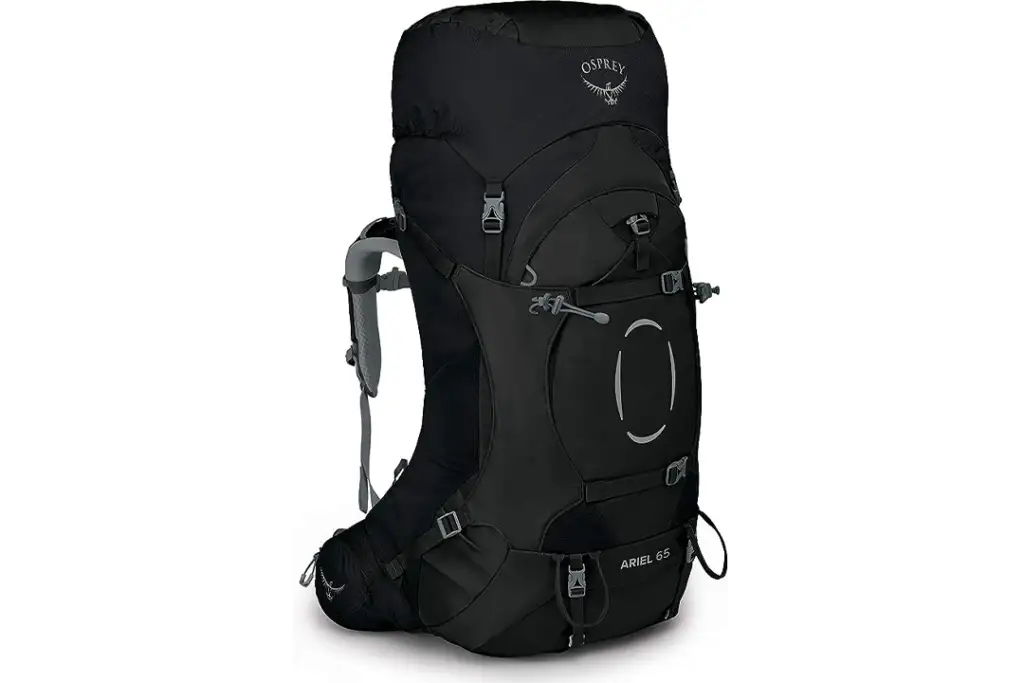
You’ll need a backpack to be a backpacker – the clue’s in the name. This will probably be the most important piece of kit you have since you’ll use it day in, day out. There’s no right or wrong backpack to go for. Different travelers like different things, though the most popular choice is one with 55-70 liters of space.
The Osprey Ariel 65 is a great choice for female travelers. It’s large enough to cover all but the longest trips, has easy front access, and has a handy rain outer for wetter destinations. The Osprey Aether 65 is the men’s version. It is roughly the same as the Ariel but has a slightly larger frame, plus a sleeping bag pouch below.
Osprey Ariel 65
Osprey Aether 65
Small Backpack
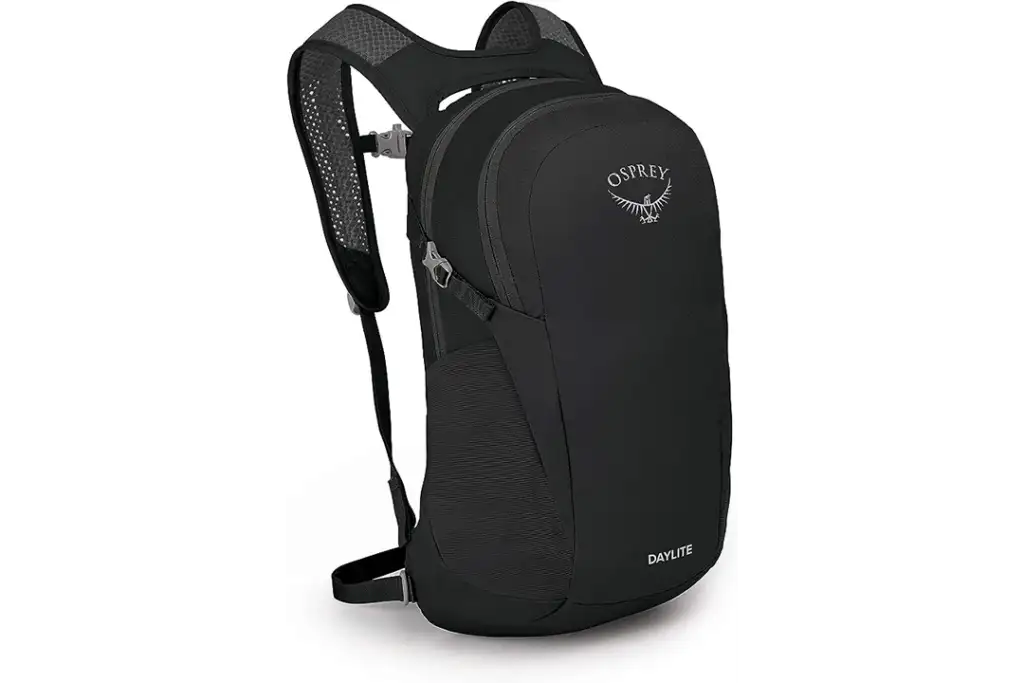
Most backpackers use the dual approach: One bag for clothes, another for electronics and important stuff. Doing that means you can keep your valuables close on trains and planes, and buses and not worry all that much about what happens to your main pack. It’s also a versatile option because you have a daypack for exploring towns and cities at hand whenever needed.
Again, it’s backpacker maestro Osprey that we recommend here. Their Daylite Everyday Backpack is great if you’re not bringing the laptop in tow; the Osprey Talon 22 Men’s Hiking Backpack is better if you are.
Daylite Everyday Backpack
Osprey Talon 22 Men’s Hiking Backpack
Water Bottle
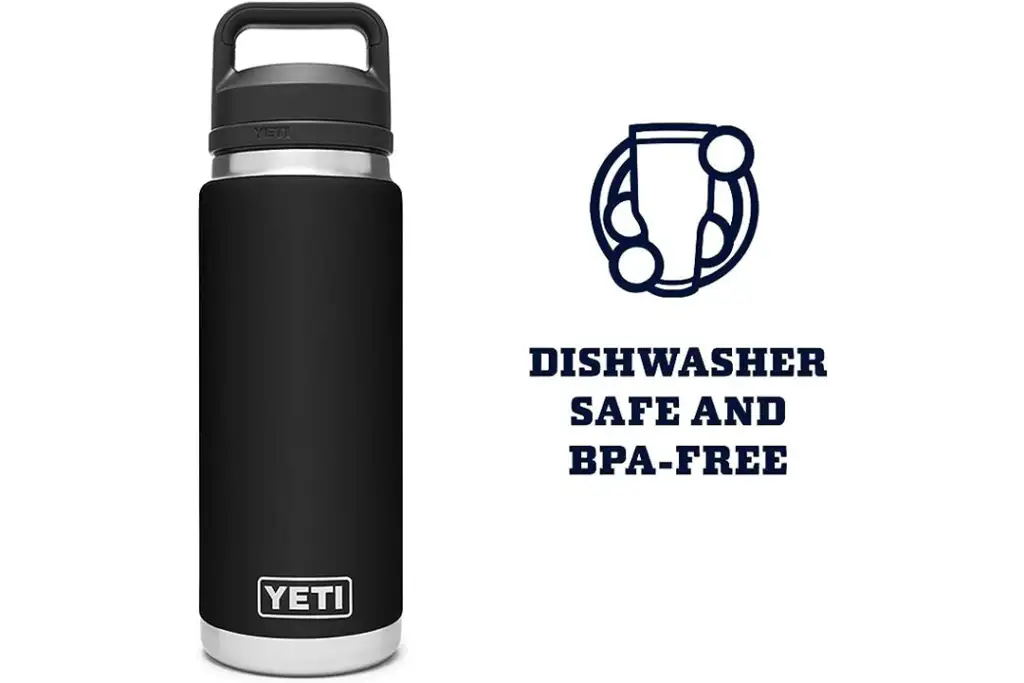
A backpacker’s water bottle should be two things: Hearty (for taking all those knocks on the cobbled piazzas of Italian hill towns and whatnot) and relatively large (for keeping you hydrated on long train journeys from A to B). The YETI Rambler ticks both those boxes, and we love the glug-friendly top. It’ll keep water cool for up to 12 hours, too.
Walking Shoes
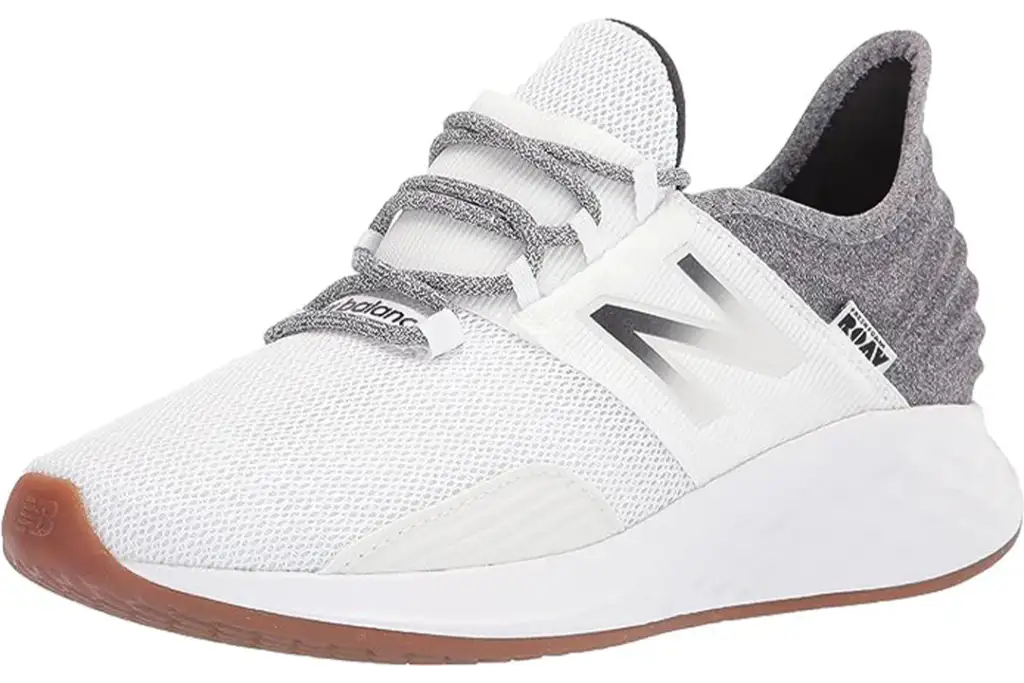
Whether it’s from the train station to the underground beer halls in Prague or between the food courts of Bangkok’s Chinatown, you’ll be doing a lot of walking as a backpacker. Comfy day shoes are a must.
The New Balance Women’s Fresh Foam Roav V1 Sneakers are a solid choice for women, with their heavily buffered souls tailored to long walks. The classic Nike Men’s Air Max Shoes are uber-light and come with good arch support, and are a good choice for men.
New Balance Women’s Fresh Foam Roav V1 Sneakers
Nike Men’s Air Max Shoes
Trail Runners
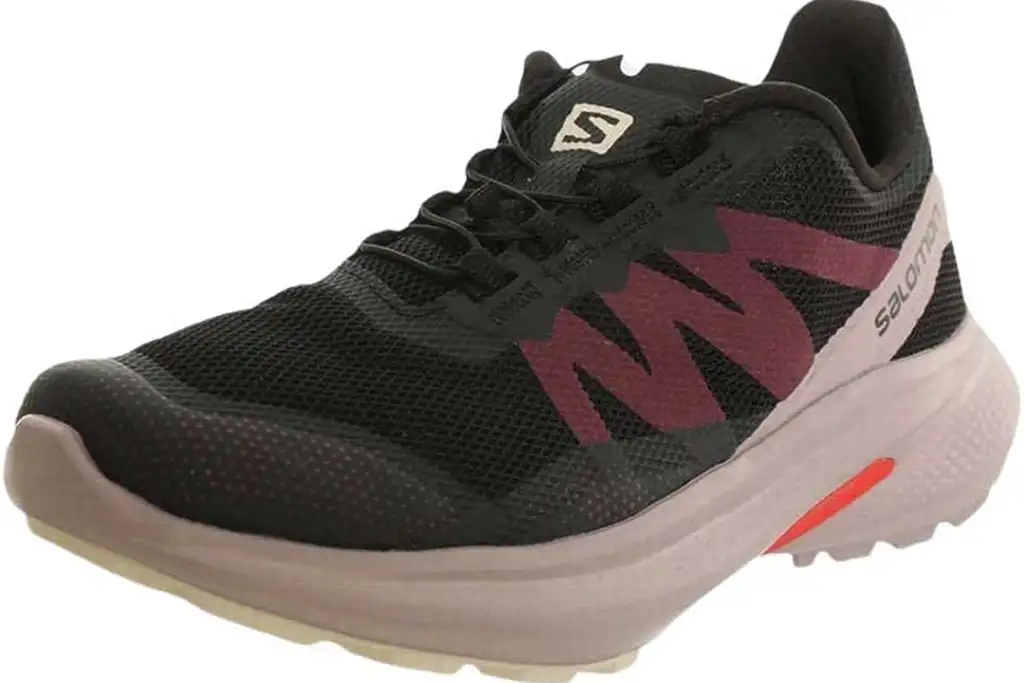
For backpacking, trail runners are a better choice over hiking boots. These hybrid shoes strike a fantastic balance between size, weight, and versatility. Some of them weigh in at just 300g per pair, which is a whole load less than the 700-900g found on bigger boot models. On top of that, they’ll double up as hiking shoes, runners, and sports shoes.
The Salomon Women’s Hypulse Trail Running Shoes are a cracking choice for keeping it easy on the luggage allowance. They weigh just a quarter of a kilo and can be wedged into small gaps in the backpack. The Salomon Men’s X Ultra Pioneer is a more heavy-duty version that brings waterproof outers into the mix, making them better for travels in rain-prone destinations.
Salomon Women’s Hypulse Trail Running Shoes
Salomon Men’s X Ultra Pioneer
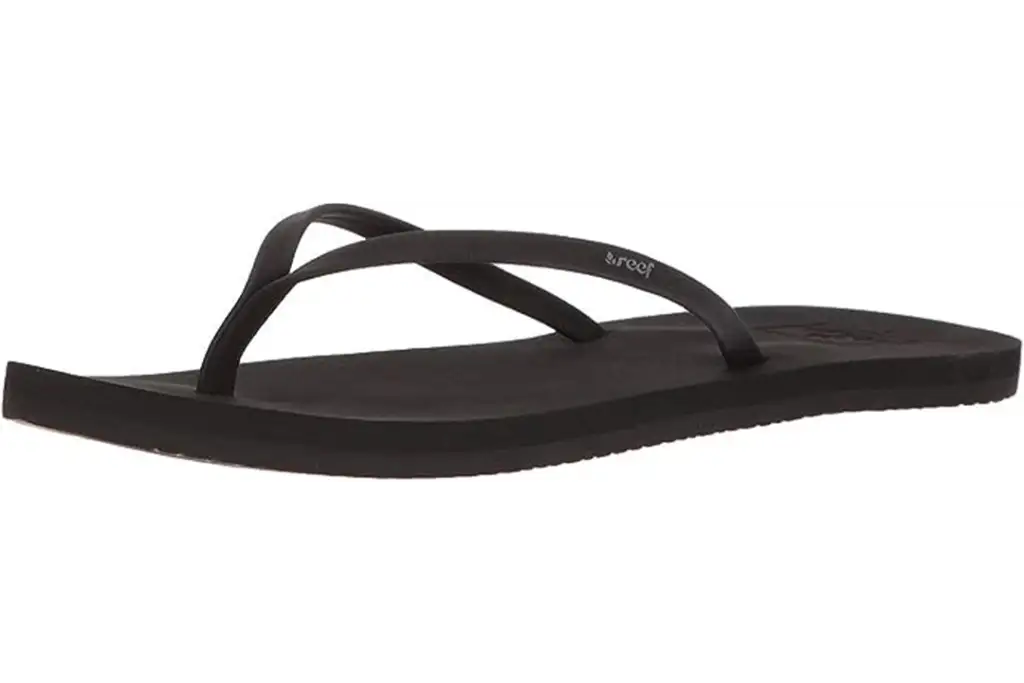
Heading to the beach? Booked yourself accommodations with a pool? Flip-flops are a must for backpacking in hotter destinations. What’s more, they’re cheap. You can drop $30 on a pair of these that will be with you for years. I’ve had the Reef Men’s Fanning Flip-Flops for about three years, and they’re still going strong. The Reef Women’s Bliss Nights Flip-Flop is a better choice for the ladies, complete with narrow straps and vegan leather.
Reef Women’s Bliss Nights Flip-Flop
Reef Men’s Fanning Flip-Flops
Travel Towel
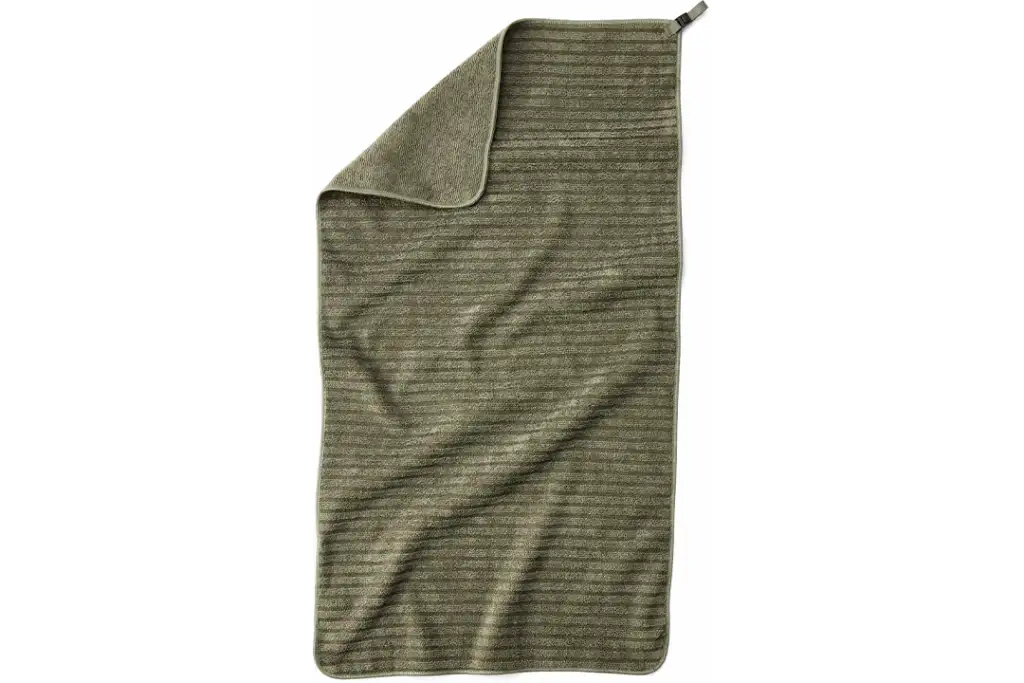
Unfortunately, big, fluffy cotton towels are a home comfort. On the road, you want something small and packable. The newest microfiber tech on the REI Co-Op Deluxe edition is pretty incredible, which can absorb more than 6.5 times its weight in H2O. The medium one is enough for most people.
Packing Cubes
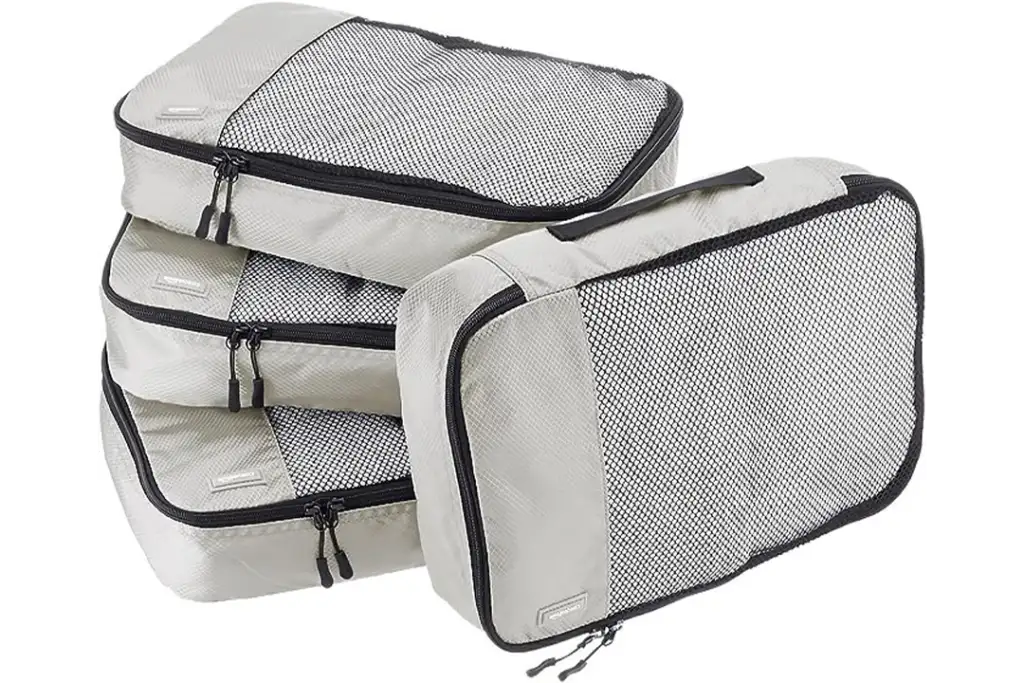
Packing cubes ? In the essential column? You bet! These handy clothes organizers and compressors will be your best friend. Keeping your items organized and compressed will give you more room for everything you need on your backpacking journey.
Toiletries bag
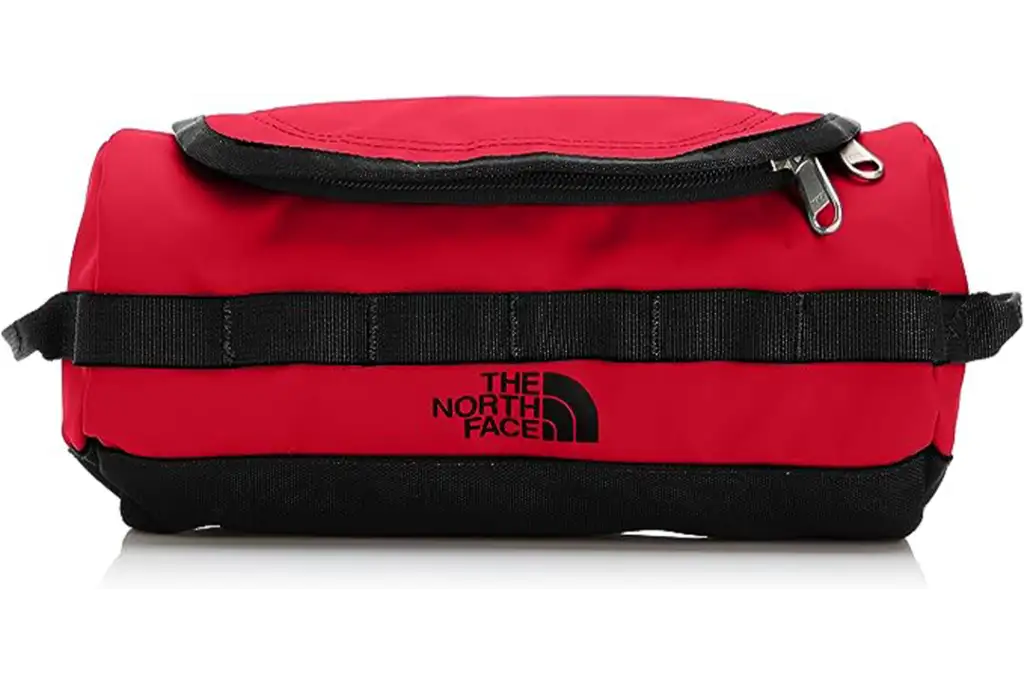
Whether you’re staying in hostel dorms with shared bathrooms or private villas as a flashpacker, having a dedicated toiletries bag will make trips to the showers a whole load easier. The North Face Travel Canister is highly durable, has sturdy zips, and is the perfect size for your backpack.
Soap Holder
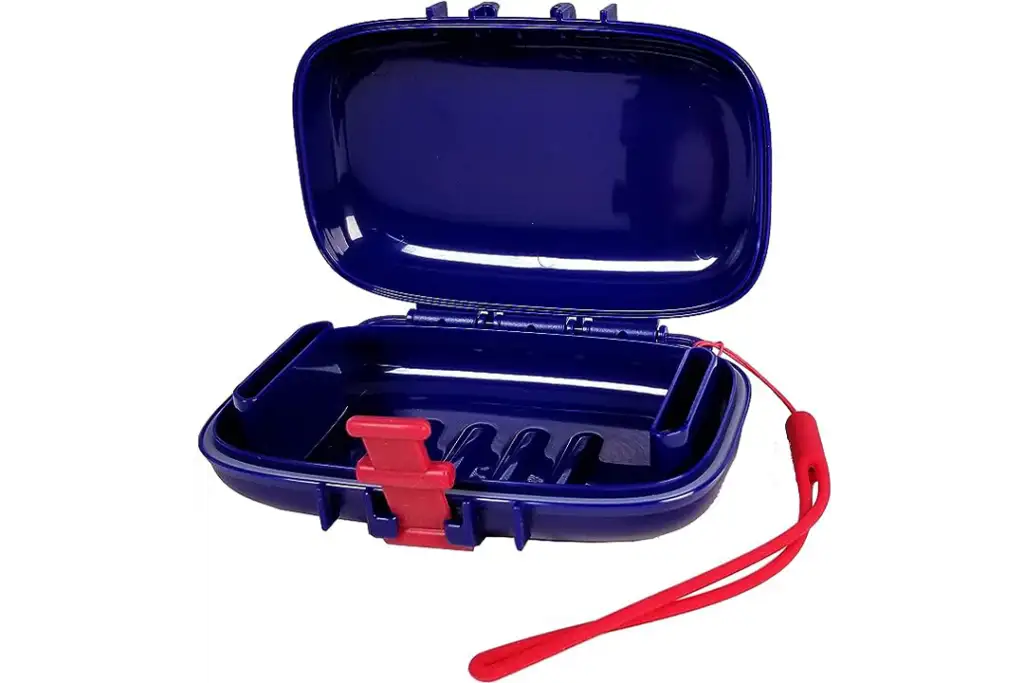
When you’re hopping from bargain hostels as a backpacker, you can’t rely too much on in-house cosmetics. The best solution is to get a travel soap holder and buy bars to carry with you. Not only does a bar of soap go further than a bottle of shower gel, but it’s an eco-friendly option to boot.
The Best Travel Backpacks
T-Shirts/Tops
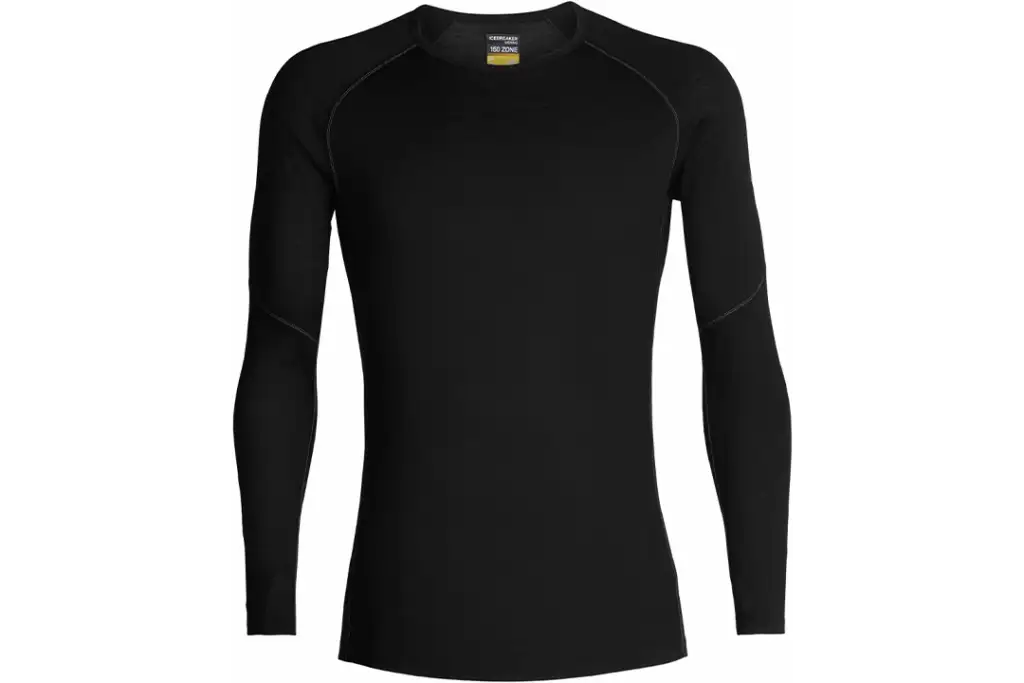
Depending on the length of your trip, most folks pack 5-8 tops for an adventure. When traveling to South Asia or South America, you can go with fewer and rely on washing more often. In Europe and North America, launderettes can be a chore to find, you should go with an extra tee or two. For colder climates, couple a top with a good merino thermal underlayer. The Icebreaker BodyfitZone is our favorite for women and men .
Icebreaker BodyfitZone – Woman’s
Icebreaker BodyfitZone – Men’s
Shorts/Pants
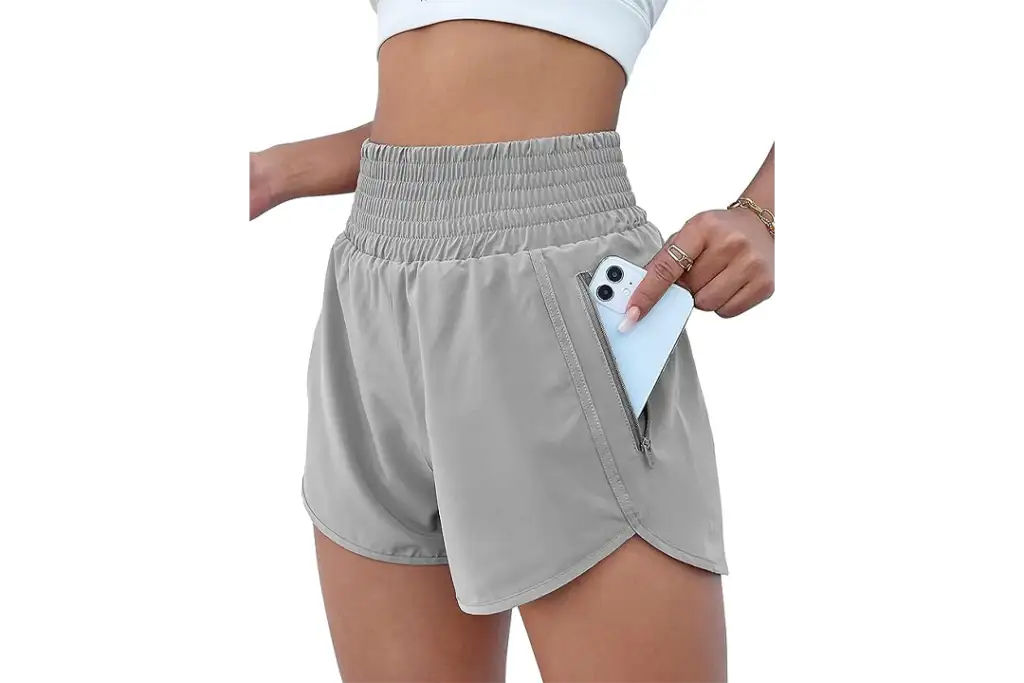
The length of your bottoms will be determined by the season you’re backpacking in. Winter calls for longer, thicker wear on the legs, plus good underlayer thermals if it’s going to be snowy or sub-zero. For summer travels, wear 2-4 pairs of comfortable shorts , preferably in light, heat-dissipating cotton or linen.
Swim Shorts/Beach Wear
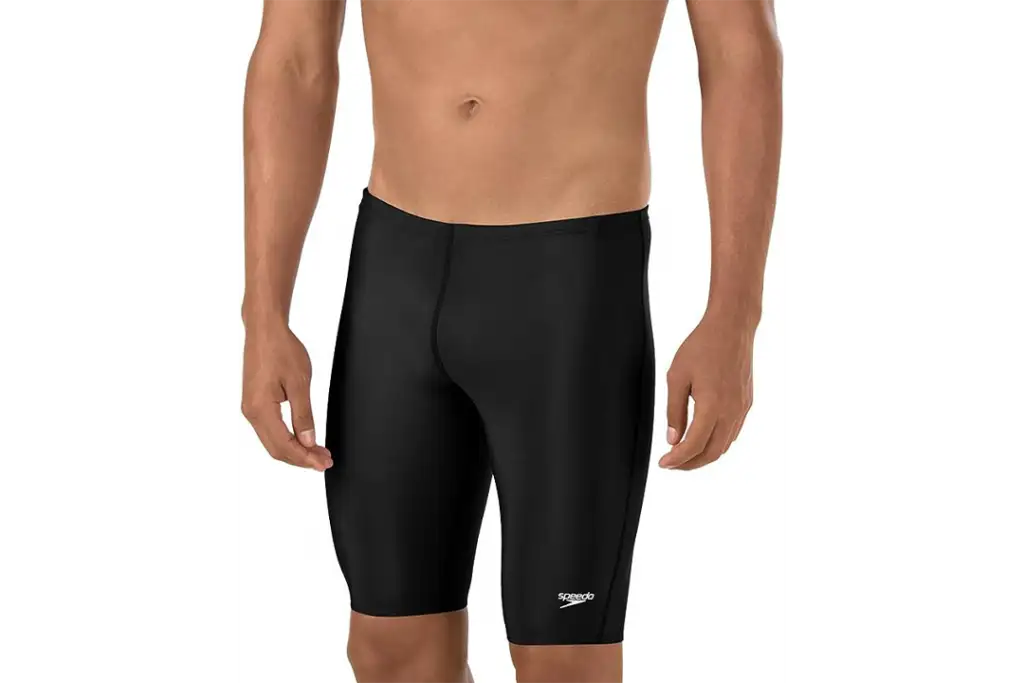
Never forget your swimwear . No matter if you plan on touring the snow-capped Alps during the height of the ski season, there’s no telling when you’ll get the chance to take a dip. Serious swimmers who see themselves diving into the Scandinavian lakes for long-distance romps should go for something more performance-based, such as these Speedos for men and these swimsuits for women .
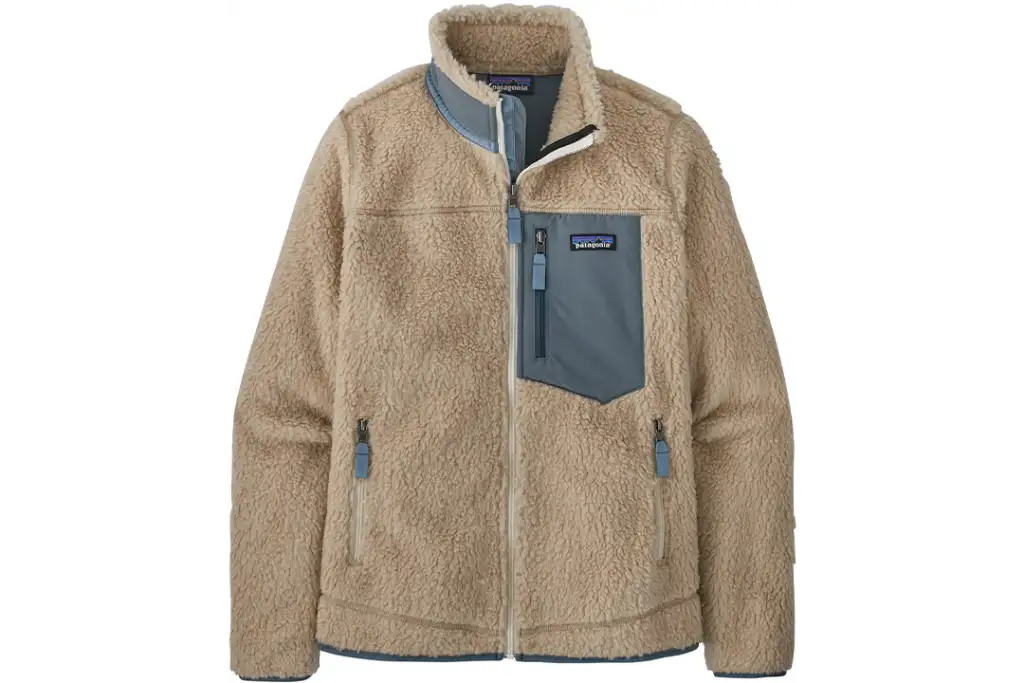
A fleece ticks all sorts of boxes. It’s great for chilly evenings in the autumn and crisp mornings in the mountains. We’ve never owned a finer one than the classic Patagonia Retro X .
Waterproof Layer
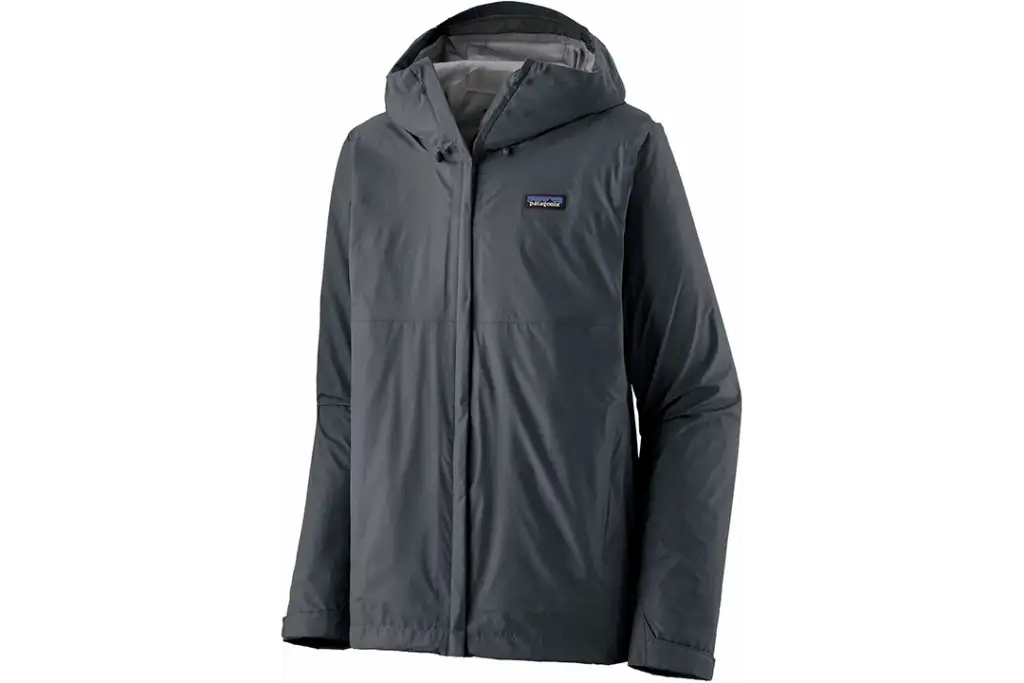
Don’t think about hitting the road on that backpacking adventure without a waterproof layer. Yes, there’s a decent chance that you’ll carry it and never use it in certain parts of the world. But there’s no telling when the rains can hit. A 30-day storm over Europe caught me in the wet, and I pined for nothing more than a solid outer layer. The Torrentshell from Patagonia is a top choice for men , women , and the little ones .
The 8 Best White Sneakers for Travel
Electronics
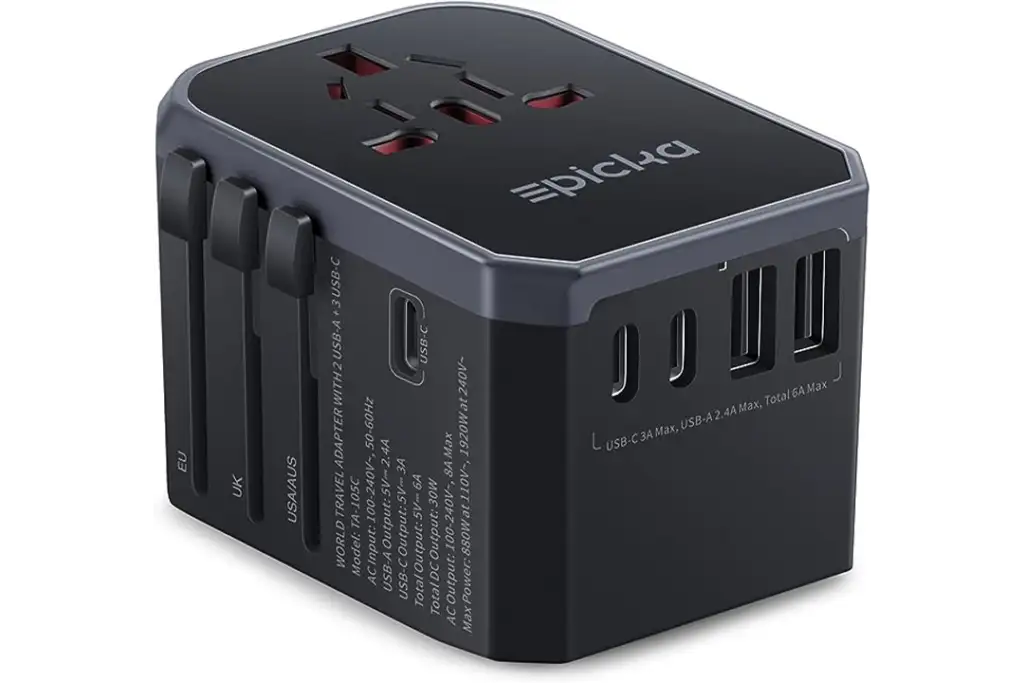
Perhaps there will come a day when we can all agree on the best plug shape. But we haven’t yet, so the reality of traveling with convertors and adapters is still very much the status quo. A multi-country plug adapter can solve that, and this means you can carry less on trips that include more than one destination (as all the best backpacking jaunts do!).
Portable battery
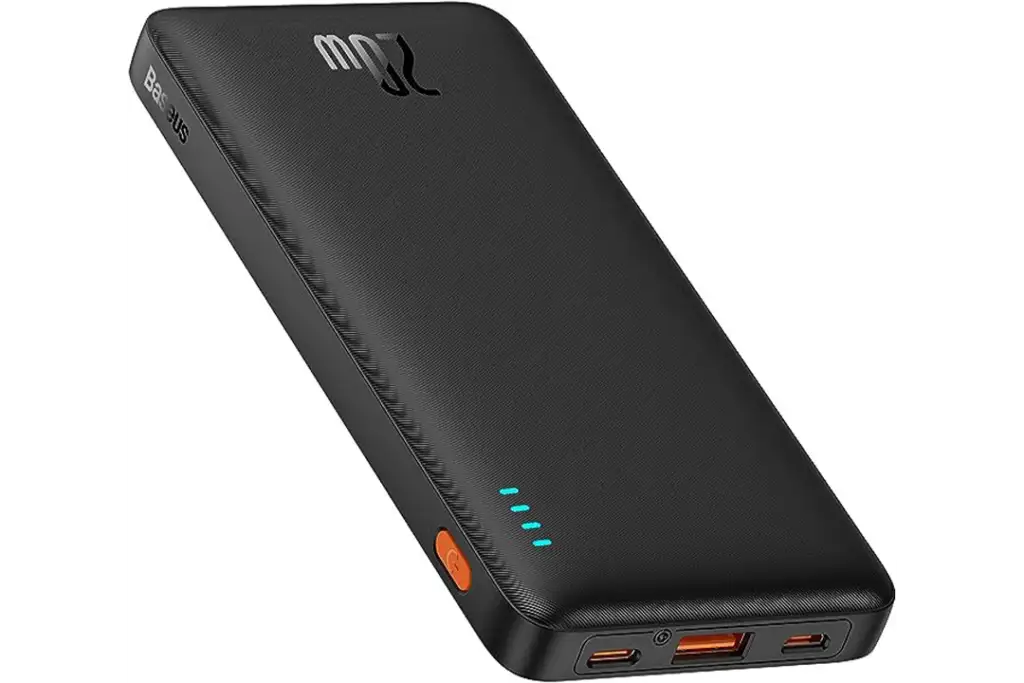
Imagine it: You’re looking for directions to the Taj Mahal, but your phone just died. You need to find the train schedules for departures to Amsterdam from Paris, but there’s zero battery in the bank. Not good. A portable charger has become as essential as smartphones in the modern travel era. You can’t do anything without juice!
SSD hard drive
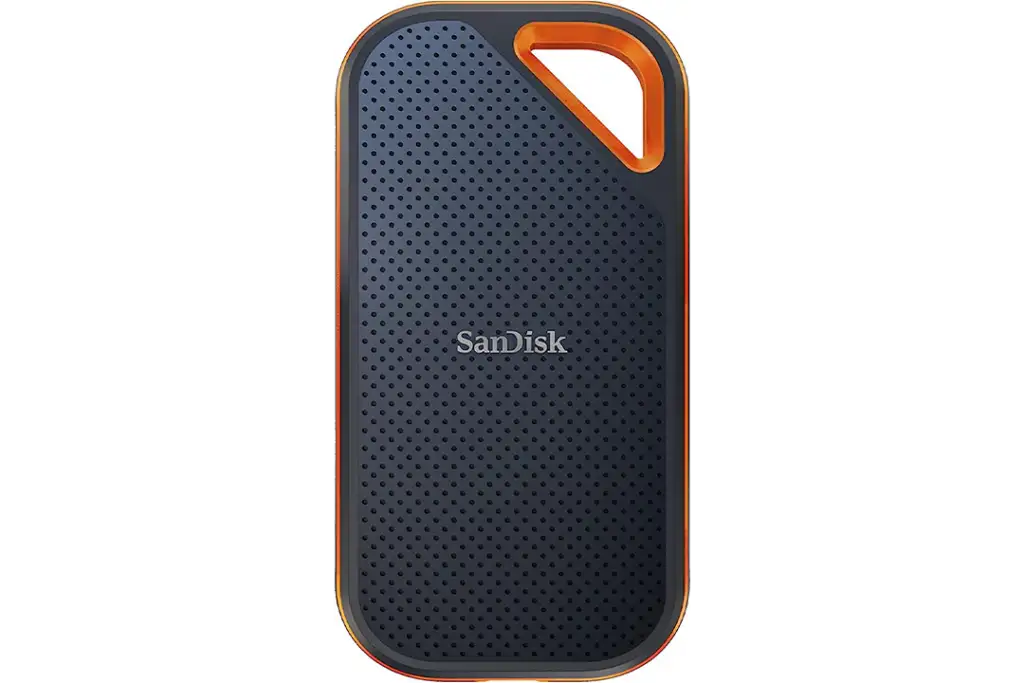
There was a time when digital nomad backpackers would have to handle their portable hard drives like uncracked eggs. No longer. The advent of SSD tech means you don’t have to worry too much about dropping these critical pieces. The SanDisk 2TB Extreme PRO Portable SSD remains the leader of the pack thanks to its durability and dust/water resistance.
You Might Also Like:
We hand-pick everything we recommend and select items through testing and reviews. Some products are sent to us free of charge with no incentive to offer a favorable review. We offer our unbiased opinions and do not accept compensation to review products. All items are in stock and prices are accurate at the time of publication. If you buy something through our links, we may earn a commission.
Top Fares From

Don't see a fare you like? View all flight deals from your city.
Today's top travel deals.
Brought to you by ShermansTravel
Australia: Upscale, 8-Night Cairns, the Gold...
Down Under Answers

Greenland: Luxe, All-Incl. 11-Nt Exploration Small-Ship...
Swan Hellenic

Ohio: Daily Car Rentals from Cincinnati

Trending on SmarterTravel
Table of contents
Ultimate Backpacking Checklist & Gear Essentials

Some of the links on this page are affiliate links
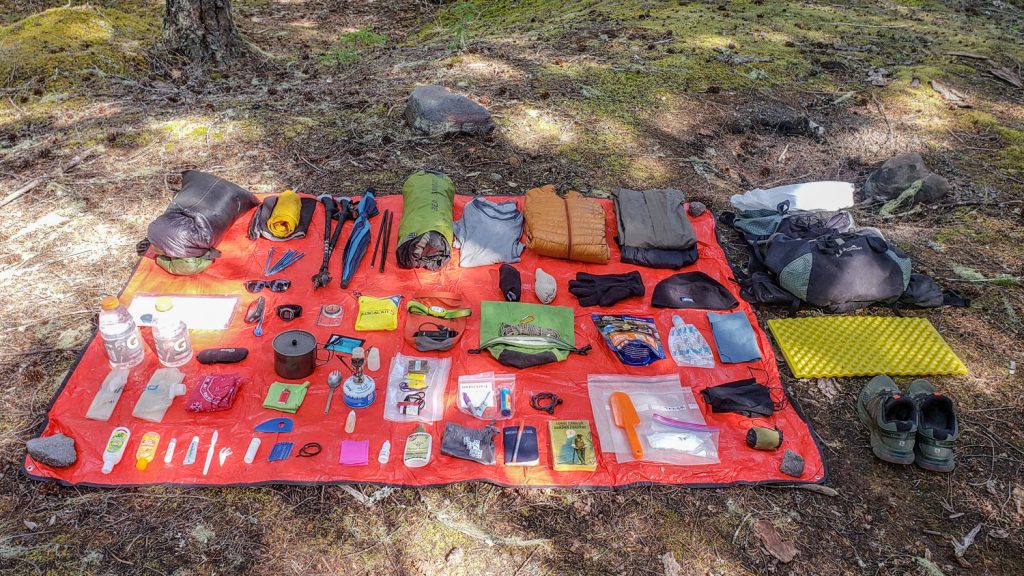
We’ve spent decades honing our backpacking gear to (our) perfect balance of weight and creature comforts. After 20,000 miles and 1,000 nights on trail, we’re pretty dialed in to what we want and need for any adventure, and we love helping people find their perfect kit as well.
We’ve organized the Ultimate Backpacking Checklist into categories to make it easier for you to gather your backpacking gear for your next trip. We also have adownloadable checklist. Print it out and have a hard copy with you as you organize your gear.
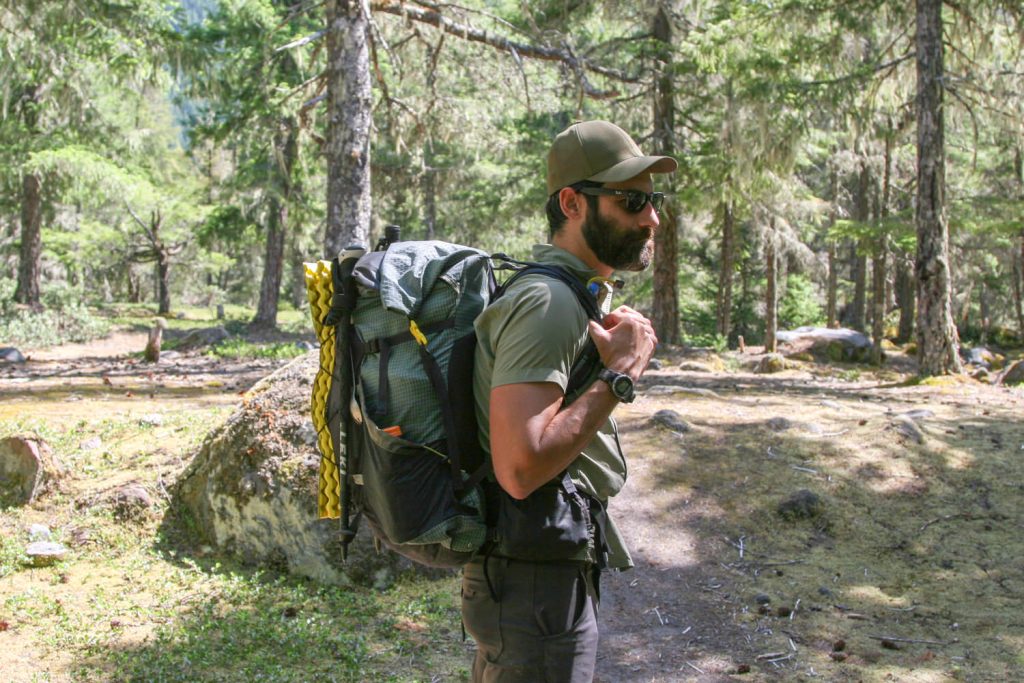
Ultimate Backpacking Checklist
DOWNLOAD OUR PRINTABLE CHECKLIST
*We consider items in italics to be optional
- Tent poles or trekking poles
- Groundsheet for tent floor durability
BACKPACK & STORAGE
- Trash compactor bag or waterproof stuff sacks for interior rain protection
- Large Ziploc for garbage
- Shoulder strap camera pocket
- Summit pack
ENTERTAINMENT
- Book or Kindle
- Crossword puzzles
- Cribbage or dice
- Notebook + pen
NAVIGATION EQUIPMENT
Always be prepared and know how to use your map and compass, even if you plan to use a GPS or GPS app.
- Topo map(s)
- Waterproof map bag / Ziploc
- GPS or GPS phone app with maps downloaded for offline use
- Satellite Messenger/PLB for remote locations
- Download driving directions for offline use
- Photos of guidebook pages
- Check current weather before trip
- Call ranger station pre-trip for trail conditions + regulations
- 2 copies of itinerary: 1 left with friend + 1 under car seat
- Backpacking permits
- Band-aids of various sizes
- Antibiotic ointment
- Medical tape
- Latex gloves
- Safety pins
- Antihistamines
- Antidiarrheal
- Check out our Best First Aid Kits list for more suggestions
PERSONAL TOILETRIES
- Sunscreen + lip balm
- Bug repellant
- Toiletries (biodegradable shampoo, etc.)
- Prescription Rx
- OTC meds + vitamins
- Contact lenses + supplies/glasses
- Toilet paper/wipes + sealable bag to pack it out
- Digging trowel
- Menstrual products
- Hand sanitizer
- Toothbrush, paste + floss
- Earplugs + eye mask
- Nail clipper
- Pre-trip: Clip nails, cut hair, shave, etc.
- Provisions – commonly between 2,500-3,500 calories per day
- Extra day’s supply of food for emergencies
- Food bag / Ursack
- 50’ nylon cord + small carabiner for bear bag hanging or bear canister where required
OPTIONAL EQUIPMENT FOR SNOWY & ICY TRIPS
- Ice axe – learn + practice proper self-arrest technique
- Traction devices
SLEEP SYSTEM
- Sleeping bag / backpacking quilt
- Pad attachment straps (optional)
- Sleeping pad
- Pump sack (optional)
TOOLS & ACCESSORIES
- Trekking poles
- Lightweight hammock
- Backpacking chair / sit pad
- Light pocket knife or multitool
- Phone (turn on low power/airplane mode)
- Waterproof phone case
- Bear spray for grizzly country
- Camera + waterproof case/Ziploc
- Extra camera battery
- Headlamp (check batteries pre-trip)
- Extra batteries for long trips
- Power bank + charging cords
- Wall plug for thru-hikes
- Assorted Ziploc bags
- Cash, ID, credit card, insurance card
EMERGENCY KIT
- Duct / Tenacious Tape for repairs
- Sleeping pad patch kit
- Needle + thread
- Small Sharpie
- Stormproof matches + small fire starters
- Small backup lighter
- Backup water treatment pills ( Chlorine Dioxide )
- 2-4 water bottles (ability to carry 2-6 liters depending on climate) or a hydration pack & bladder
- Collapsible water containers for carrying lots of water in dry locations
- Water treatment
- Pre-filter for water treatment, ex: pantyhose
All clothing items should be lightweight, moisture-wicking and quick-drying (synthetic or wool, no cotton).
- Hiking pants ( Men’s / Women’s ) & shorts ( Men’s / Women’s )
- Wicking shirt/tank & long-sleeve sun shirt ( Men’s / Women’s )
- 1-2 pairs quick-dry underwear
- Down jacket and/or fleece jacket
- Rain jacket
- Rain pants for wet trips
- Windbreaker depending on forecast
- Base layers
- 2-4 Pair socks
PACK IN CAR
- Parking pass for car
- Clean clothes + shoes to change into
- Gallon of water for trailhead shower
- Camp towel to dry off
- Water + snacks
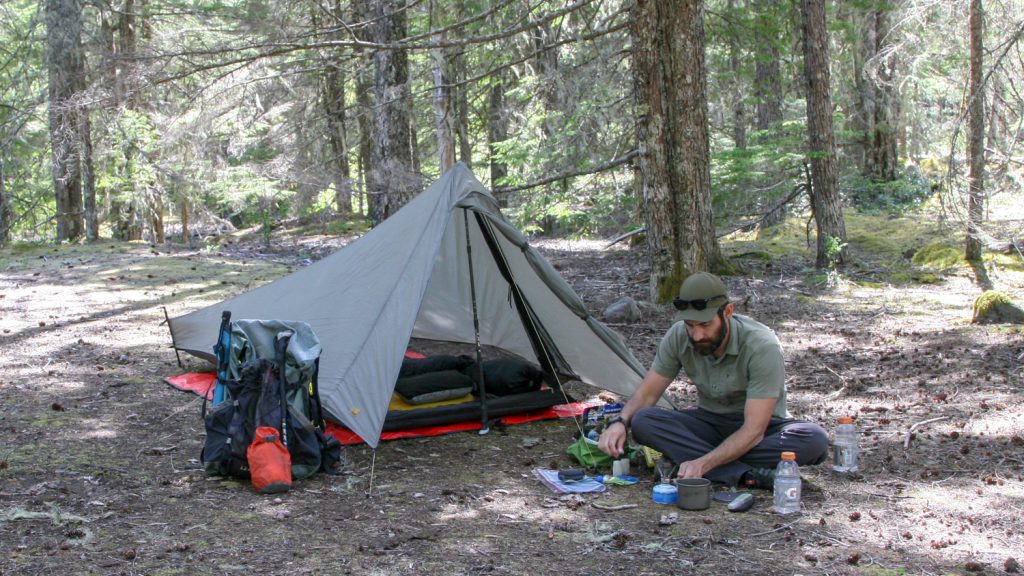
Backpacking Tips
LIGHTEN YOUR LOAD – Start by weeding out things you don’t need. Be careful with every choice you make, a few ounces here and there can add a lot of weight in the end. A lightweight backpacking checklist, like the one here, will help you to focus on essential items. Next, focus on lightening your heaviest gear: shelter, backpack, and sleeping bag. Switching your traditional big three out for lightweight options is the best opportunity for weight savings, especially when you’re starting out. If you invest in a lightweight shelter, backpack, and sleeping bag, you can easily cut 10 or more pounds and be well on your way to having an ultralight backpacking setup.
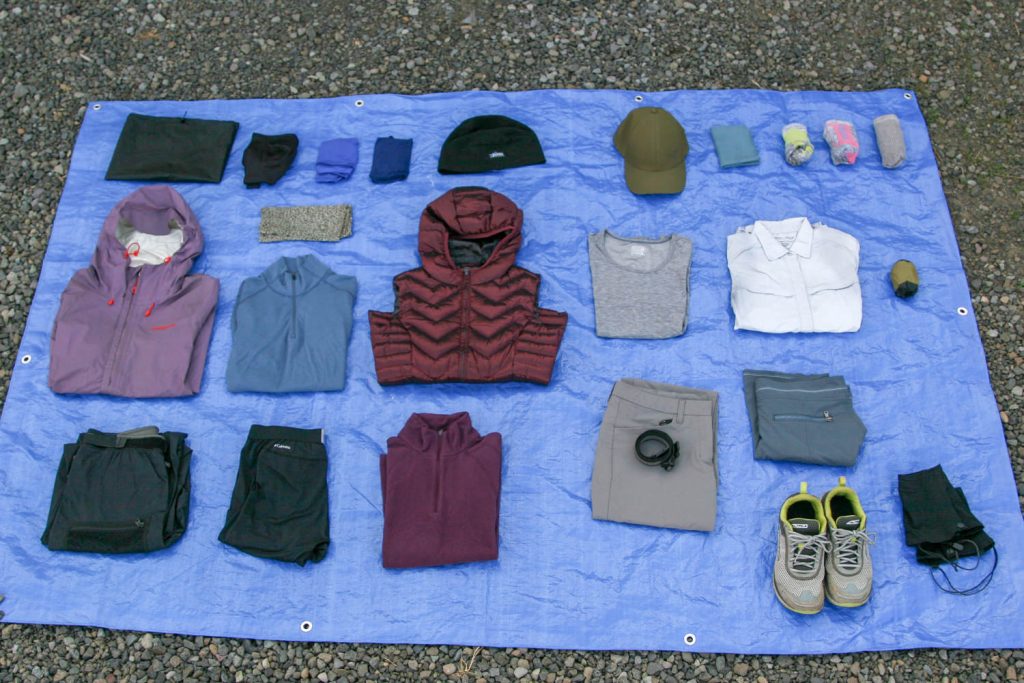
CLOTHING FOR BACKPACKING – The clothing you pack will change slightly depending on the conditions you expect to encounter on specific trips, but the fundamentals remain the same. Clothing made with quick-drying fabrics that wick moisture away from your skin are best to help your body thermoregulate and stay comfortable in both hot and cold environments. Nylon, polyester, wool, bamboo, silk, and synthetic blends are all good options. Avoid cotton – it absorbs moisture and takes a long time to dry, which can cause a variety of problems including blisters and chafing. Choose items that can be worn together in layers. Fleece and goose-down have the best warmth-to-weight ratio and make the best insulation materials for backpackers. Rain gear should be lightweight, breathable, and waterproof.
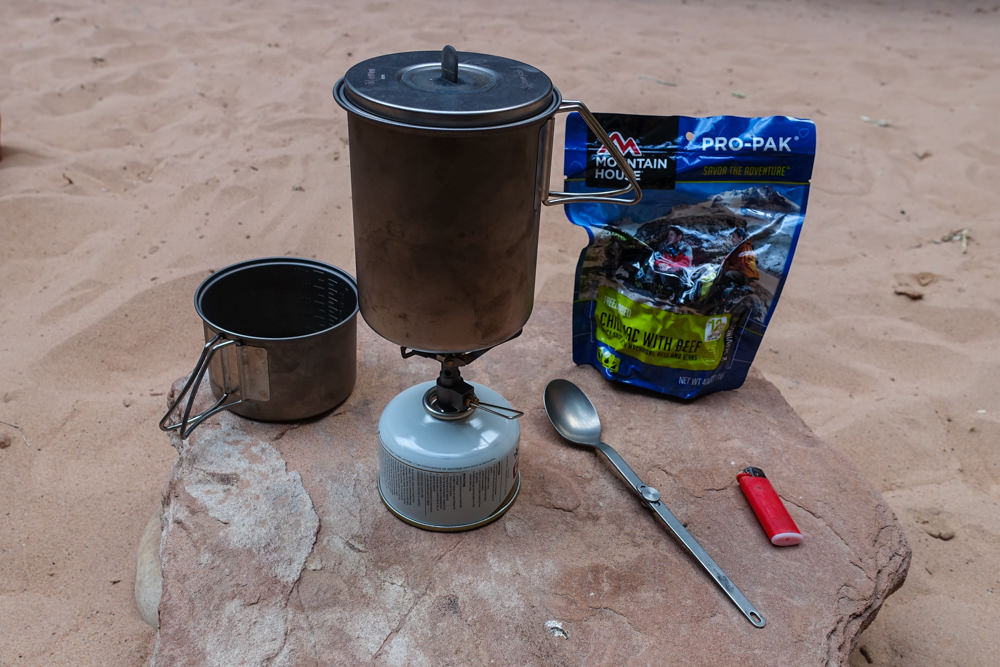
BACKPACKING FOOD – Good food is really important for any backpacking trip, so it’s well worth the effort to put together a simple meal plan before your trip. Keeping food weight down is a critical backpacking skill that usually takes experience to master. A good place to start is our Guide to Lightweight Backpacking Food . Most seasoned backpackers opt for lightweight, calorically-dense foods that are very easy to prepare. Packaged freeze-dried meals and snack foods can be great, but keep in mind, they tend to be very high in sodium/sugar, which can take their toll, if eaten in excess.
Another approach is to prepare your own backpacking meals , using a food dehydrator to dry meats, fruits, veggies, and sauces. Combining them with spices and quick-cooking or easily rehydrated dried goods such as pasta, couscous, instant potatoes, instant refried beans, and minute rice is a great way to customize your own highly-nutritious meals. This method takes more time and effort, and you must be more willing to carry more weight, but making your meals can be more cost-effective and healthier for long trips. Our approach is usually a mix of both methods. For more specifics about food, check out our Best Lightweight Backpacking Food guide , where we outline our general backpacking food strategy and suggest some of our favorite meals .
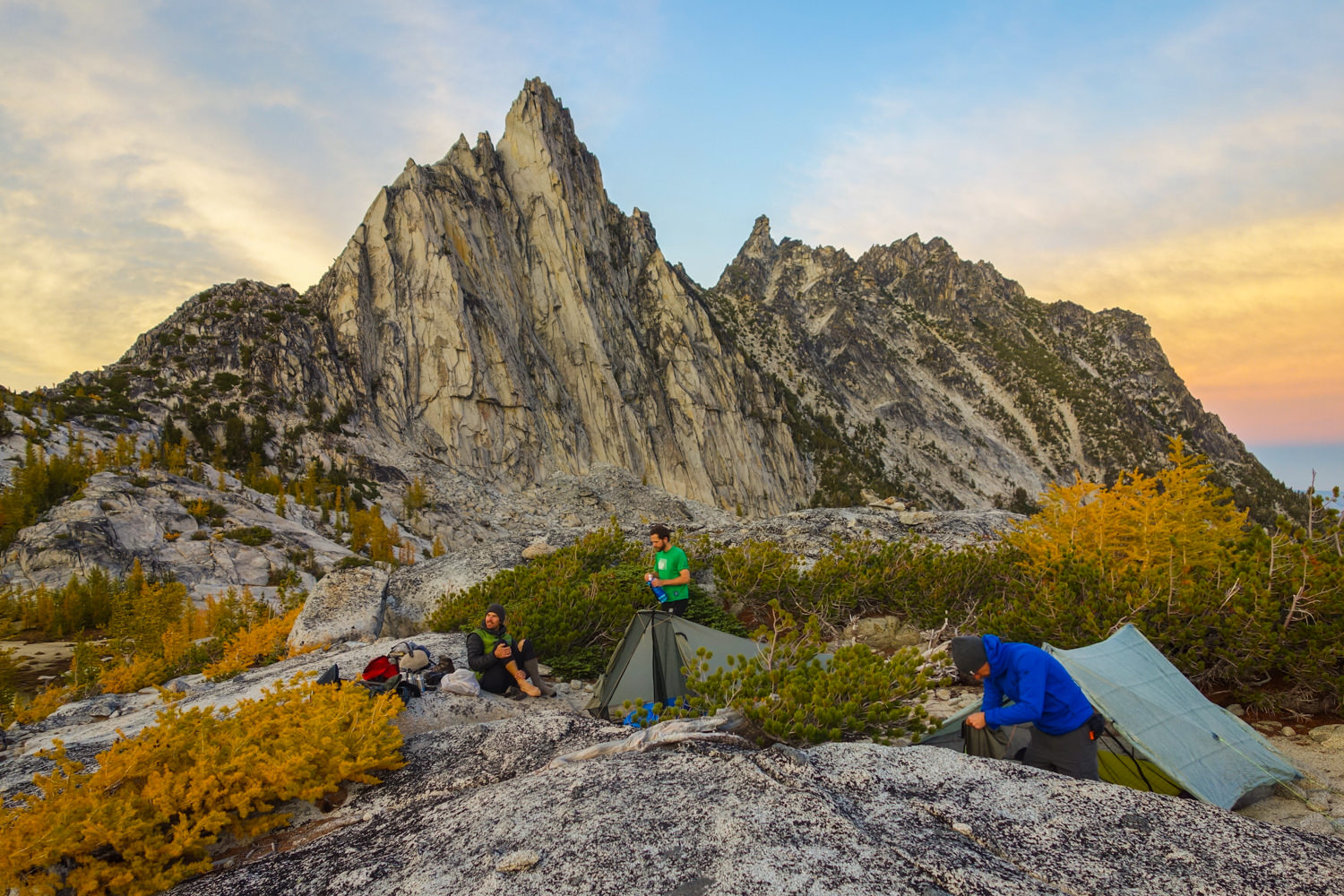
CleverHiker Backpacking Video Series
If you’re new to backpacking, or have been hiking with outdated equipment, we highly recommend watching our two professionally-filmed video series (below), where we’ll teach you everything you need to know to start backpacking -the skills and the gear.
- Essential Trail Skills – 20 HD tutorial videos to teach the most critical skills for backpackers of all levels, such as: Leave No Trace, Backpacking Trip Planning, How to Find and Fit the Right Backpack, How to Pack a Lightweight Backpack, and much more.
- Lightweight Backpacking Basics – One of the main reasons to minimize your pack weight is to maximum your freedom on the trail. Backpacking with a lighter pack will reduce stress on your body, give you more free time on the trail, and allow you to hike farther with less effort. In this 10-episode series, you’ll learn all about the gear that will allow you to hike lighter to make the hiking the most enjoyable part of your trip.
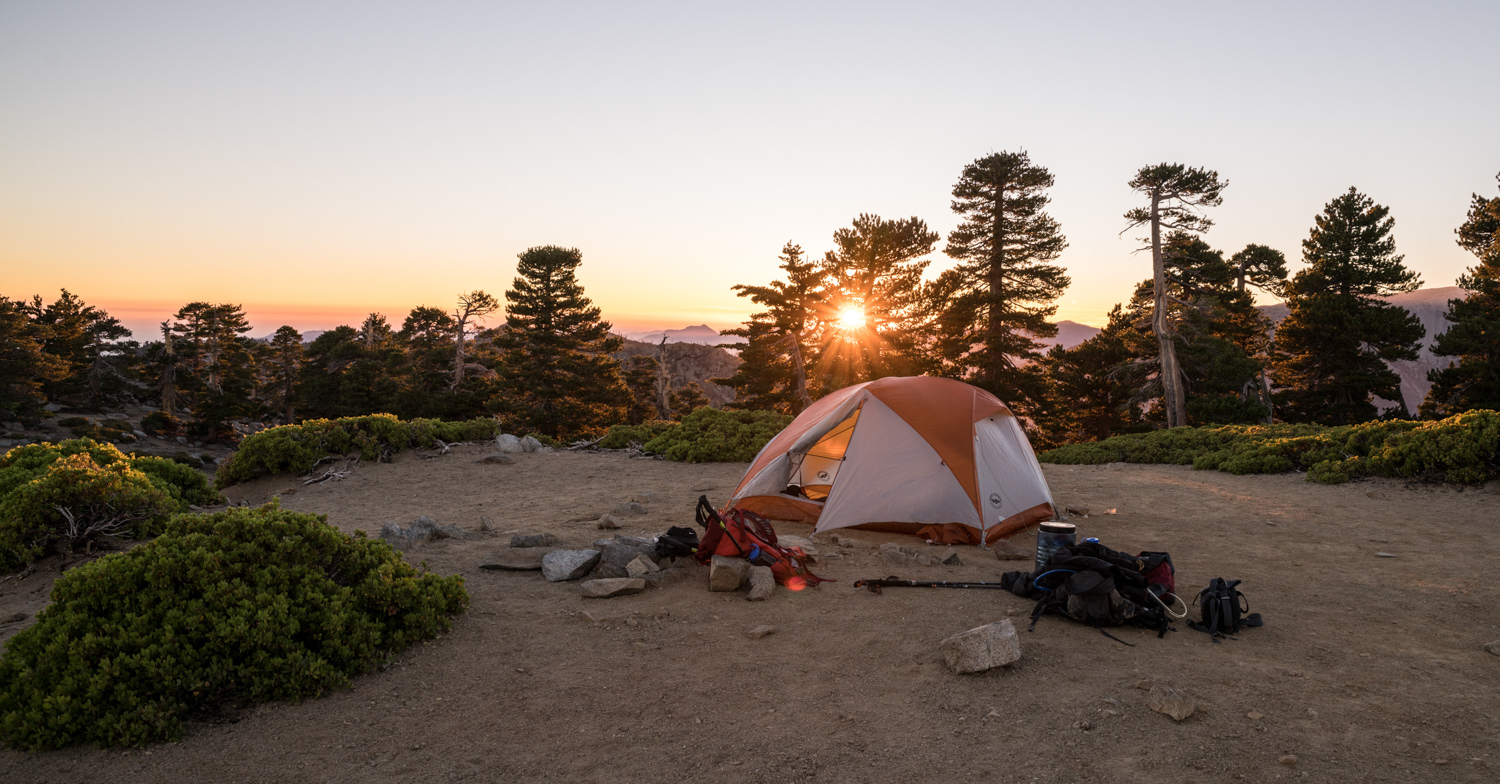
Why trust us?
We understand how tough it is to find trustworthy gear advice, and that’s one of the main reasons we built CleverHiker. We live for outdoor adventure, and we take these guides very seriously.
- Our recommendations are completely independent and based on hands-on experience.
- We test outdoor gear for a living – we’ve logged over 20,000 trail miles and 1,000 nights in the wilderness.
- Our team has thru-hiked some of the most iconic long trails, including the Continental Divide Trail, Pacific Crest Trail, Appalachian Trail, Colorado Trail, Long Trail, Oregon Coast Trail, Arizona Trail, Pinhoti Trail, Superior Hiking Trail, as well as extensive peak bagging, and international treks.
- We field test every product we recommend, which is sadly not the norm.
- We travel to industry trade shows to stay up-to-date on product innovations.
- We continuously update our guides throughout the year and when new products launch.
- We treat recommendations to our readers as if they were for our family and friends.
- We’re lifelong learners and we’re always open to feedback. If you think we’ve missed a worthy product or got something wrong, we’d love to know about it.
Need More Backpacking Advice?
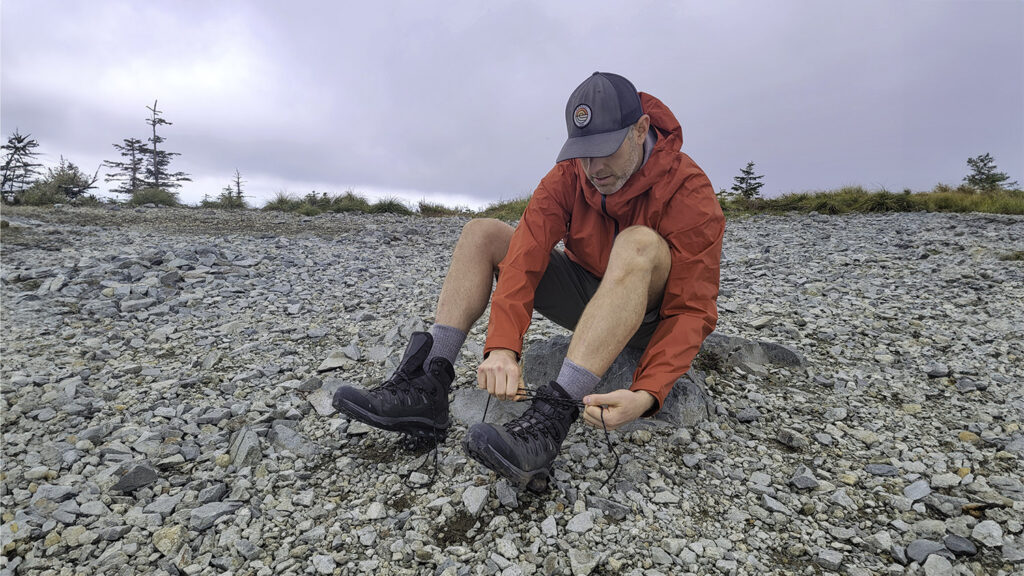
How to Lace Hiking Boots & Shoes
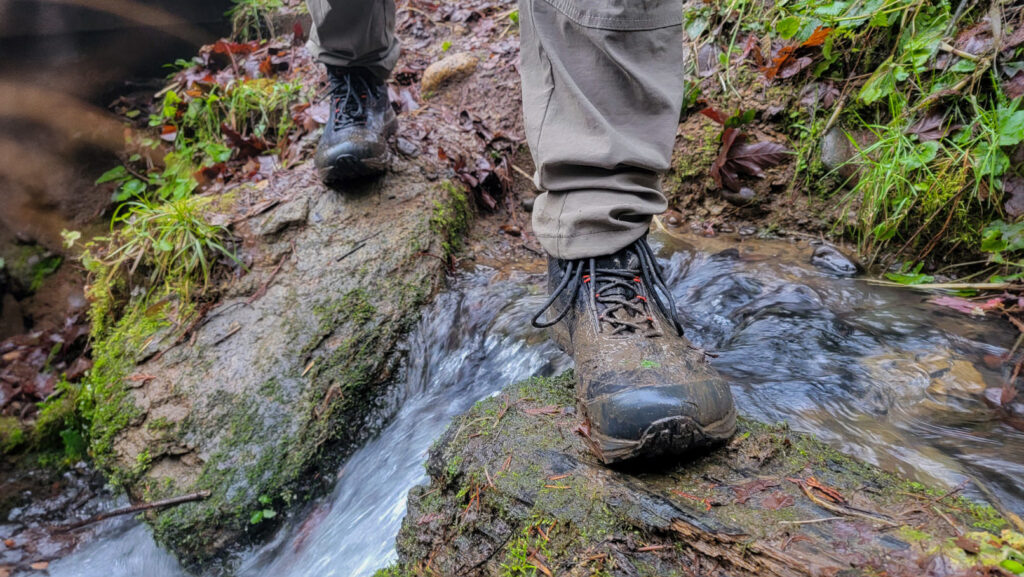
How to Clean Hiking Shoes & Boots
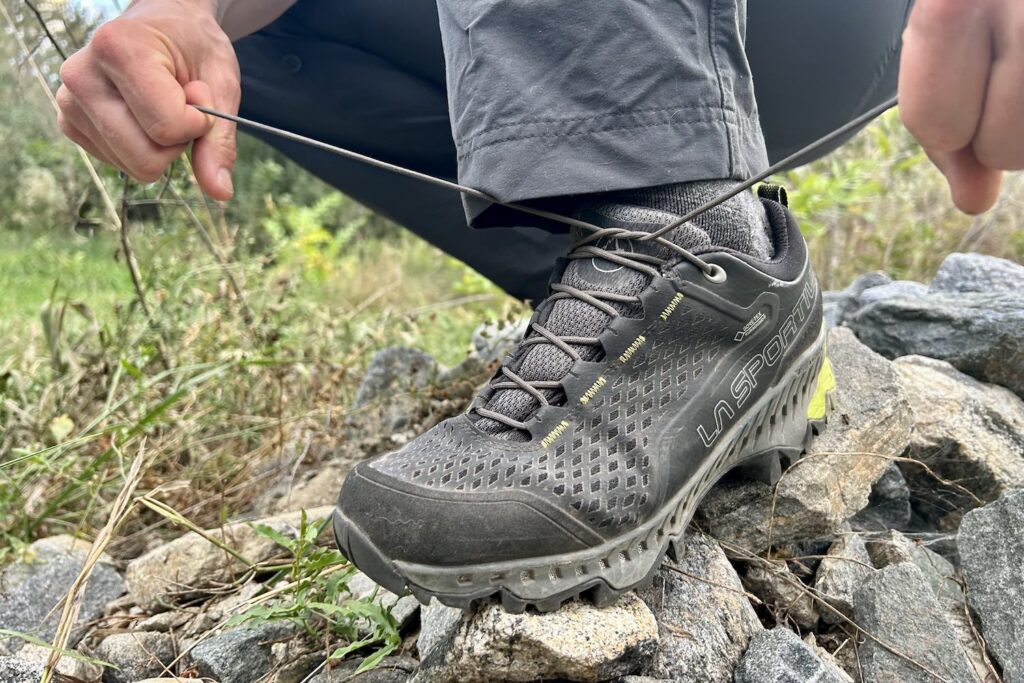
La Sportiva Spire GTX Hiking Shoes Review
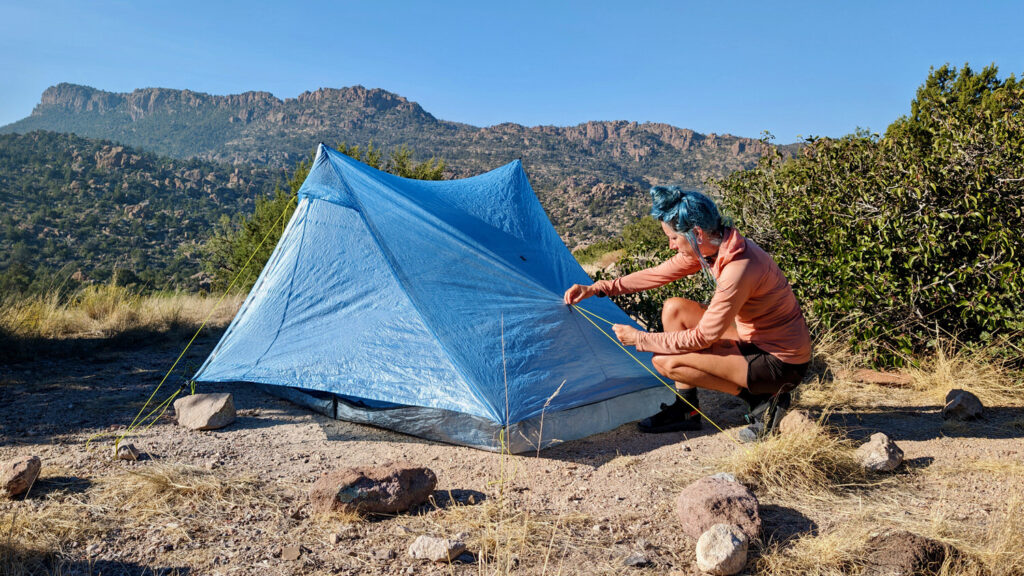
Zpacks Duplex Zip Tent Review
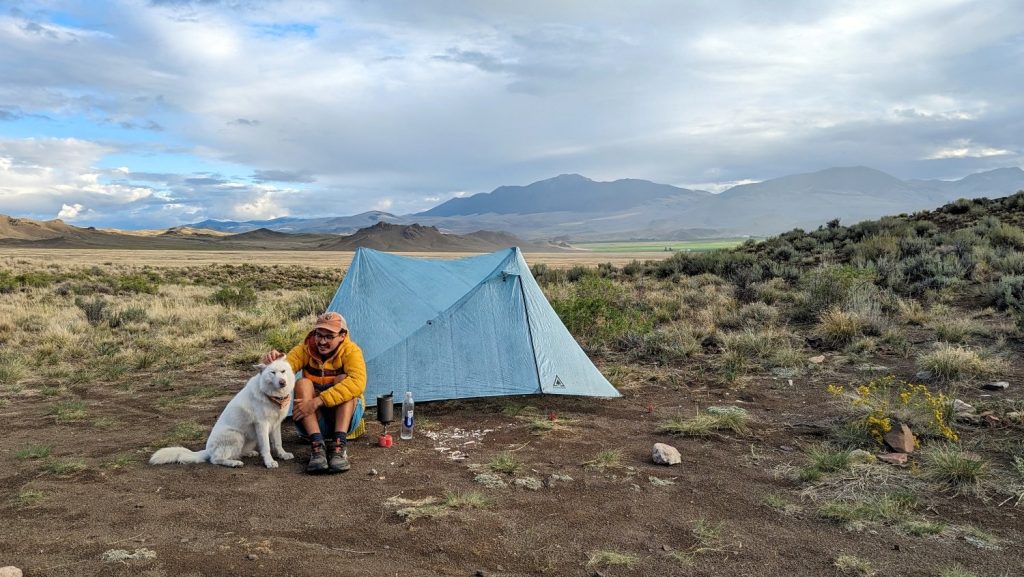
Durston X-Mid Pro 2 Tent Review
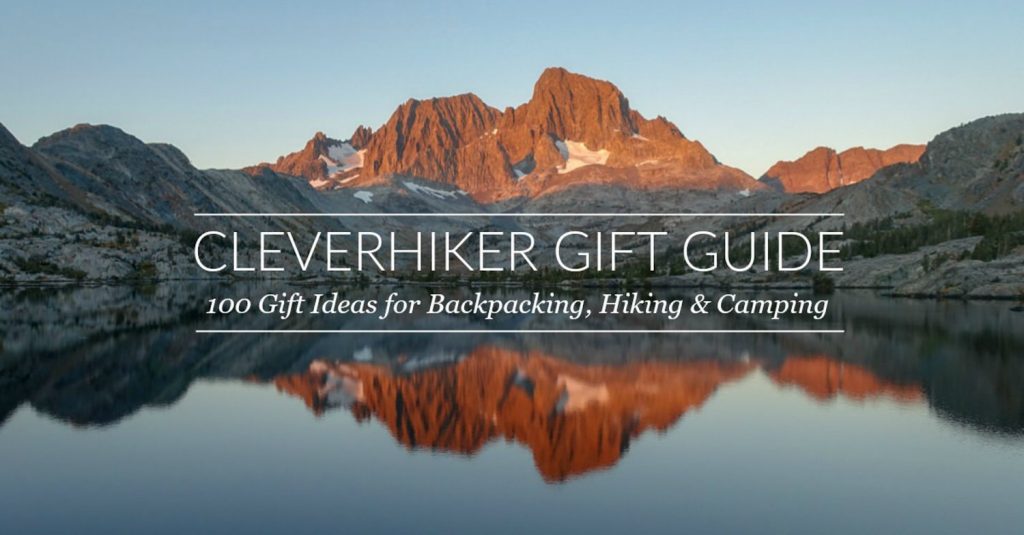
100 Best Gifts For Hikers, Backpackers & Campers 2024
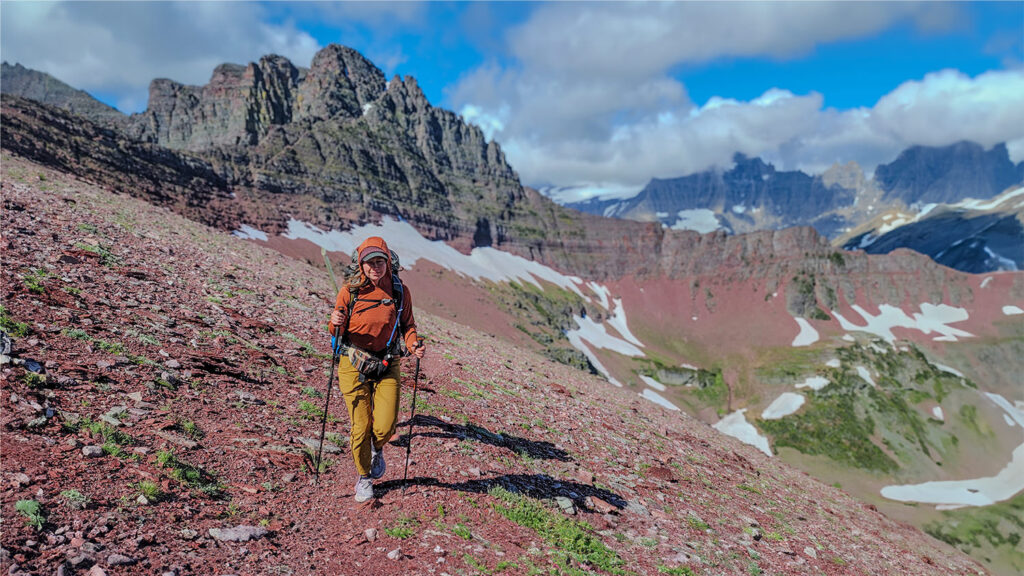
7 Best Trekking Poles of 2024
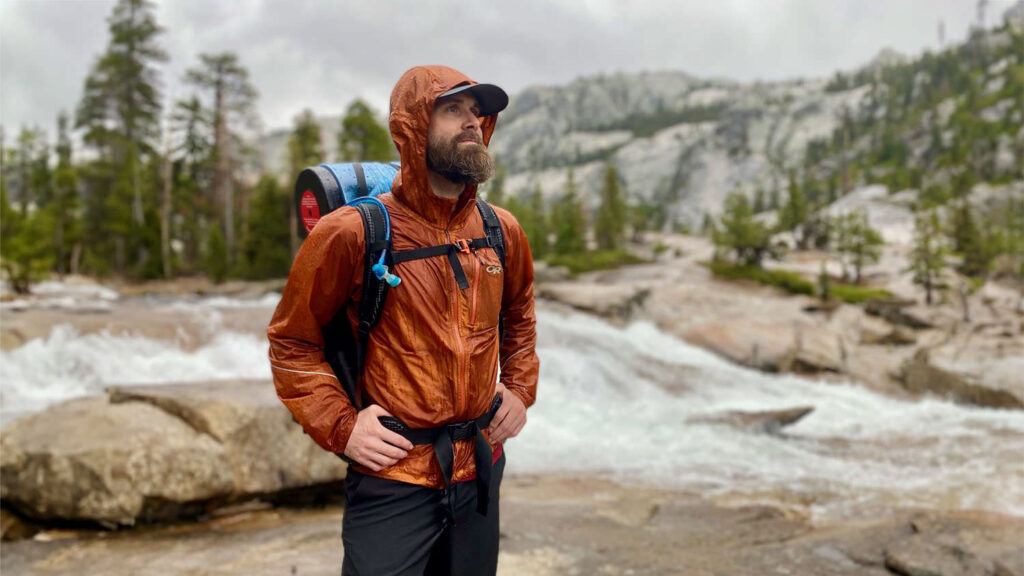
10 Best Rain Jackets of 2024
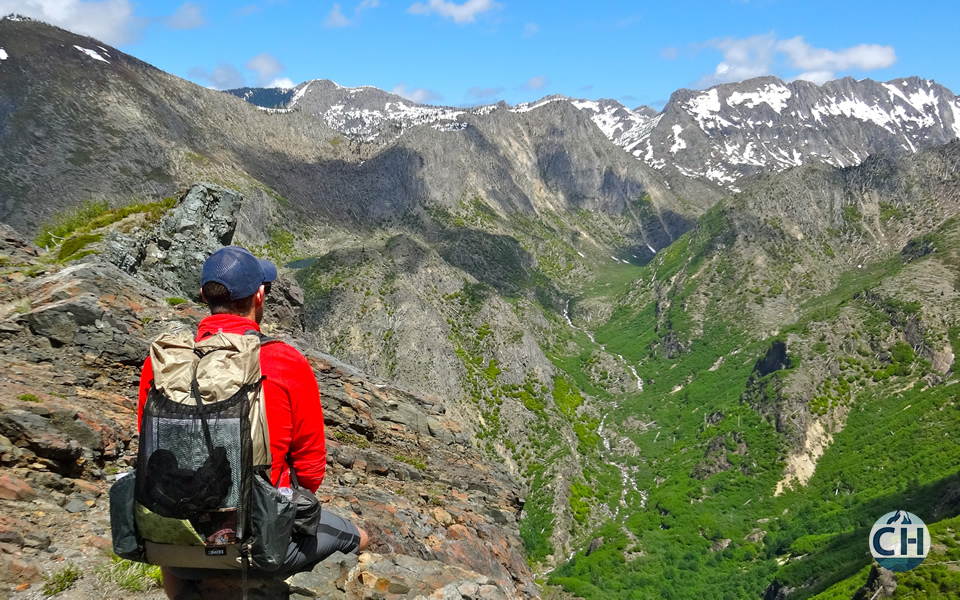
ZPacks Arc Blast Backpack Review
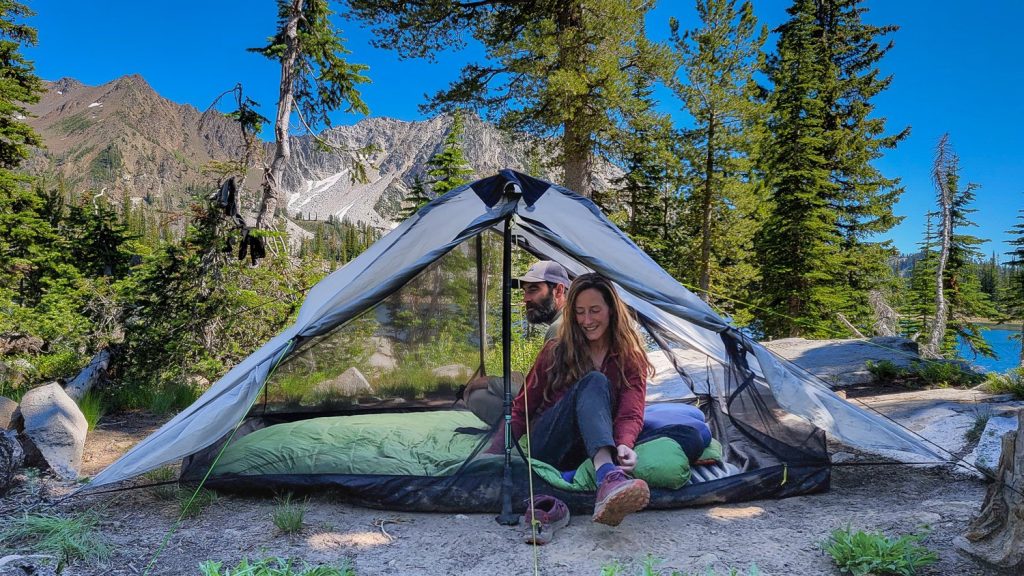
Six Moon Designs Lunar Duo Tent Review
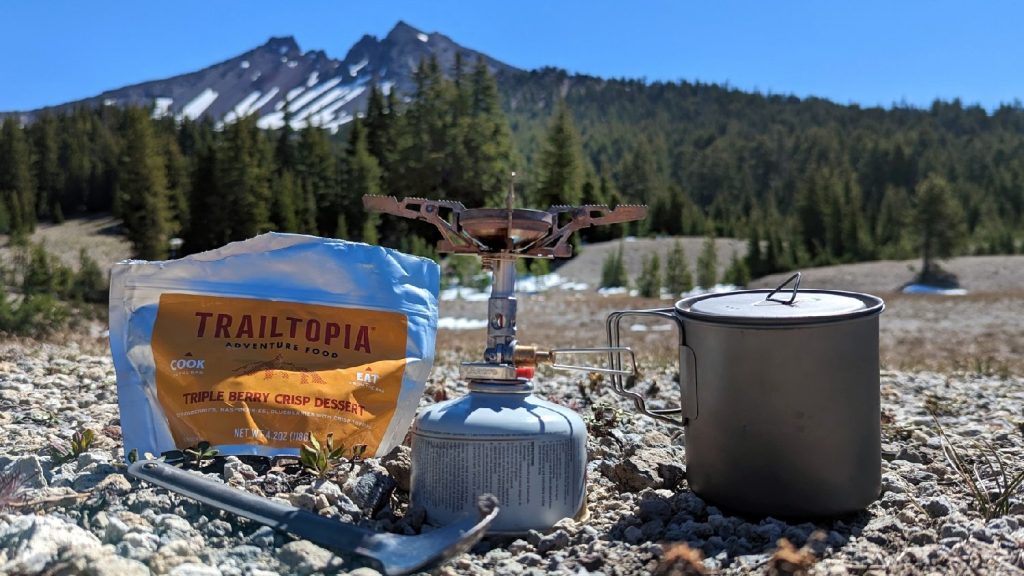
SOTO Windmaster Backpacking Stove Review
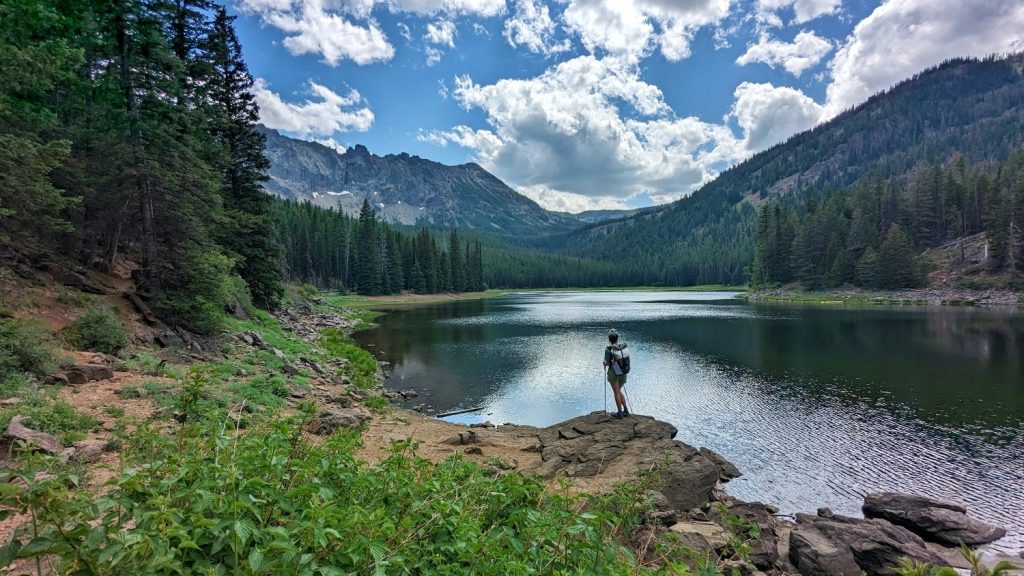
Strawberry Mountain Wilderness Loop Backpacking Guide
Get the best content from cleverhiker & around the backpacking world.
Social media is great, but our bi-weekly newsletter is a much better way to stay in the know.
Sign up to get our curated emails with the best content from CleverHiker and around the backpacking world. You’ll be turned on to new videos, trip reports, gear reviews, inspiring outdoor stories and much more. So get in the mix!

Item added to your cart
Gear guides.
- Ultralight Backpacking Gear
- Best Ultralight Backpacks
- Best Ultralight Sleeping Bags
- Best Ultralight Tents
- Best Camp Shoes
- Best Down Jackets
- Best Rain Jackets
- Best Minimalist Sandals
Tips and How-To's
- Ultralight Backpacking Tips
- Animal Tracks ID Guide
- Contour Lines and Topo Maps
- How to Read Trail Signs
Food and Water
- Backpacking Food Ideas
- Backpacking Meal Recipes
- Best Meal Replacement Powders
- How Many Calories Do I Burn Backpacking?
- The Triple Crown of Hiking
- Appalachian Trail Map
- Gifts for Hikers
- What is Naked Hiking?
THE Ultimate Backpacking Checklist

Photo by @kaylinb1231
The following backpacking checklist pinpoints all the things you need to think about before and after your trip, as well as essential gear items to have in your pack. We start off with the list and continue with a description of each individual item. If you want to download the list a PDF, click here.
Backpacking Checklist
Click here to download this backpacking checklist as a PDF.
Trip Planning and Preparation
Sleep system, first aid kit, accessories, optional extras, once you're back, before you head out, 📅 figure out the logistics.
First, pick the hike you want to do and the direction you want to go, the season and month you’re beginning your hike in may influence this decision. Then, check trail conditions and do some research into the parking and logistics of getting to the trailhead ahead of time.
How are the roads? Are there any current closures? Are there shuttles in the area? What's the parking situation like? Can you park your car overnight, and what passes and permits are required for the area?
Since you might lose cell reception on the drive to the trailhead, it’s also not a bad idea to have a print-out of the directions and a map of the area.
Our free trail guides contain all the information you need to know.
⛈️ Check the Weather Forecast
Temperatures won’t be the same at ground level vs. 3,000 ft. up a mountain. Even in the desert , temperatures can range reaching into the 100’s during the day and down below freezing at night, which means you’ll need a variety of clothing for your hike.
Moisture-wicking, quick-dry fabrics are a good place to start and packing extra socks, liners and layers are valuable to change into for avoiding hypothermia in wet or sweaty conditions.
Checking weather predictions and average yearly temps ahead of time will give you some ideas into what to expect, and from there you can zero in on footwear and any extras you’ll need (sunglasses, sunblock, gaiters, etc.) by looking into the climate and terrain of where you’ll be hiking.
📞 Alert an Emergency Contact
Whether going on a day hike, an overnight backpacking trip or beginning the first leg of a thru-hike, informing someone about your plans ahead of time is always a good strategy. Nature can throw some curveballs your way, and in case you do get injured, lost, or don’t return on the day you originally planned for, it’s reassuring to know there’ll be someone to send out the search parties.
Here are three things you should share with a family/friend prior to beginning your hike:
- A detailed trip plan
- A map with the exact location of where you’ll be hiking
- When you think you'll be back
To avoid having search parties sent out looking for you, be sure to let your family, loved ones or whoever you designated to be your contact person know that you’ve made it home safe and sound following your trip.
Hiking Hack: Cairn App is a great new real-life tracking app that allows you to select a “safety circle” you can share your hiking progress and location with in case of an emergency. It also automatically alerts your circle in case you’re overdue from your trip.
🚰 Map Out Water Sources
One of the most important things to locate on a trail is available water sources, especially if you're hiking in dry desert climates where water is especially sparse.
Knowing how many miles lie between water stations will help you determine how much water you’ll need to carry on you between re-fills. It’s also important to consider your water purification system , whether that be drops, a filter, boiling, etc.

📦 Plan Your Resupplies
Food resupply can either take a little or a lot of planning, depending on how you go about it. Since you only have so much room available for food at a time, you’ll need to come up with a system for restocking your food supply along the way. Whether you stick with one method or combine a few, here are some of the most popular food resupply options:
- Buy food at towns, gas stations and resupply points along the trail.
- Set-up a “bounce box” where you take what you need and put the rest back in the box and keep mailing it ahead from point to point.
- Have food boxes arranged ahead of time to get shipped and held at post offices.
- Have someone drop food off at certain locations for you to pick up.
- Rely on hiker boxes and eat whatever’s available (not necessarily the most reliable plan.)
- “Cache” your food: stash food at certain points along the trail ahead of time for pickup.
🤝 Distribute Your Gear
If you’re hiking with a few mates, then why not disperse the weight? Chances are there are a few heavy items you’ll all want to use, and hiking is definitely the time to adopt the sharing is caring mentality. Plan ahead with your group on who’s bringing what.
You can even trade off on carrying things like the stove, the bulk of the water or food supply or any other items that could be mutually used among the group.
📝 Get Insurance (Optional)
Planning an exciting excursion abroad? Trip insurance could be one of the most important purchases you make prior to your backpacking trip. There are several different plans you can choose from, and it can be worth the peace of mind knowing you’re protected against accidentally racking up a whopping $50,000 medical bill overseas. Here’s a further look into why trip insurance may be right for you: The 5 Best Travel Insurances .
💲 Make a Budget (Optional)
Living in the great outdoors should be cheap, right? Not necessarily. Buying the proper gear, supplies, and food ahead of time can add up quickly, and if you’re planning to be gone for an extended period, you’ll also have bills back home to account for months in advance. Creating a budget can help lay out a plan and manage your finances. Some key things to consider when planning your budget include trip length, transportation and travel costs, bills, food, lodging, misc. expenses on the trail, your emergency cash stash and costs of buying gear.

Backpacking Essentials
Your backpack is one of your most important pieces of gear. Make sure to choose a pack that weighs less than 2 lbs, rests comfortably on your pack and is made of a breathable material like Dyneema or nylon. As for capacity, we recommend 40L to 65L, depending on the length and duration of your trip. And remember, the bigger the pack, the more stuff people tend to shove in it and the heavier their pack ends up being.
A liner helps protect your backpack and its content from the rain. If you don't own a liner, you can use a trash compactor bag instead. It is just a effective.
Trail shelters, tents, tarps and hammocks all can work for shelter. However, depending on the environment you’ll be spending your nights in one option may certainly be preferable over the other. Bugs, weather, and terrain can influence shelter selection.
Relying on camp shelters can be hit or miss in availability.
Hammocks are great on saving weight—as long as you’ve got somewhere you can hang them.
Tarps can work, but the no walls thing can be a bummer.
For harsher climates ultralight tents can come in handy and are surprisingly durable, however, they can cost a pretty penny.
🛏️ Sleep System
Sleep systems consist of a sleeping pad, sleeping bag, a liner and a pillow (if you want one).
The sleeping pad is your comfort and protection from the ground. It’s advised to test it out ahead of time in a few different settings to ensure it's comfortable and has enough insulation. Sleeping pads come in a variety of lengths, thicknesses, and they can be inflatable or foam.
Sleeping bags should fall between 1-3 pounds. Depending on the environment and temperature range you’ll be in, you can choose between down or synthetic insulation, a summer, three-season or winter bag, and the style (mummy, quilt, rectangular, etc.).
Liners are a good way to keep the inside of your sleeping bag clean and provide some extra insulation, although not indispensable.
Cooking equipment is all about ease and multi-purpose use. Take a spork, for example. The little utensil is light, practical, and gives the best of both worlds. On the note of utensils, plastic silverware can be tempting over steel or titanium because of its weight and cost, but it’s not durable.
You’ll also want to pack a good cutting knife, dishware (a steel cup or bowl should do) and plan on bringing something to boil water with like either a pot or jet boil with fuel .
Lastly, you can choose your clean up method: hot water and scrubbing or a biodegradable soap option .
🥑 Food and Water
As a rule of thumb, plan to carry 2 lbs of food for each day of hiking. For example, if your next resupply point is 5 days away, you should have about 10 lbs of food in your pack. A great way to optimize your food load is to stick with options that have a high calorie-per-ounce ratio. Here are some great candidates .
As for water, it highly depends on how far water sources are from another. If water is abundant on the trail, you might get away with not carrying any water at all—simply drink at the source. If water sources are scarce however, you'll want to fill up one or two 1-L bottles and take those with you on the trail. More on this topic here .

👕 Clothes (Worn and Packed)
Climate and weather will be the biggest determinants here. This is also where layering comes in handy.
You want to pack at least one set of clothes for hiking and another set for camp (including shoes). Your hiking clothes are unavoidably going to get wet from either sweat or rain. So when you'll be done hiking for the day, you'll be glad to to have dry, warm clothes to change into.
Hiking in cold weather? You'll have to pack a few extra items to stay warm—down jacket, rain shell, wool beanie, gloves, etc.
📍 Navigation
There are many GPS, Satellite or downloadable app options to choose from for navigation. Many apps even allow you to pre-load trail maps on your phone so you can use them both on and offline.
But, how you plan your trail navigation is all about preference—and how linked into technology you want to be. If you do decide to go the tech route, it’s not a bad idea to have a backup navigation plan… just in case.
Having a compass , a map or a guidebook of the trail that marks campsites, water sources and other notable features can be a great resource.
Headlamps are the most popular lighting option since they allow hikers to go hands-free and are multipurpose (many have floodlights, red beams, distress signals, adjustable lighting). There are even rechargeable headlamps you can choose from.
But, there are still hikers out there that prefer the good old flashlight, lantern or tent light instead. Since lighting options come in all different shapes and sizes, some starting steps to help decide what’s right for you is to consider the desired light output level and time estimate (lumen count), beam distance, battery type, water-resistance rating and activity you’ll be using the light for.
🧼 Toiletries
Just because you’re hiking for days on end with no shower, doesn’t mean you need to forgo all of your personal hygiene rituals. Toothpaste, a toothbrush, soap, washcloths and hand sanitizer can go a long way. Biodegradable wipes can also be great for a quick wipe-down when there’s no water around. Toilet paper is always an option too.
🚑 First Aid Kit
You never know what can happen on the trail. From cuts and blisters to fever, a complete first aid kit can take the worry out of your outdoor adventures. No need to overdo it though. A pair of tweezers, some gauze pads, antiseptic, band-aids and a handful of pain killers can go long way. To avoid excessive weight, repackage everything and stick to about a week's worth of supplies. If you find yourself running low, stock up at the next trail town.

🔥 Backpacking Accessories
Going hiking near a lake, or during the peak of mosquito season? Might want to bring along some bug spray . Does your hike lead into bear territory? Many parks require bear bags or canisters for overnight stays.
Ever heard how duck-tape can fix everything? It’s true, a roll can repair tears and rips and also be used as protection against an oncoming blister. A pocket knife or waterproof matches are a few other items you might want to consider packing.
☂️ Optional Extras
Depending on where you’ll be hiking, it may be valuable to pack gaiters, an ice ax, sunglasses, a sun hat, lip balm or a hiking umbrella . Some hikers even bring things like whistles, earplugs and trekking poles.
Then, there’s always the fun stuff you could bring along like a deck of cards, a journal to record your backpacking trip or a book for those evenings by the fire. What’s important to have on your thru-hike is up to you. Everyone’s experience is uniquely theirs, and after some time out on the trail you’ll pinpoint what extras you don’t want to go without.
✂️ Optimize Your Gear
Anything you can do to cut weight in your pack, do it! This could include re-packaging items, cutting off extra straps or tags on your pack or losing your toothbrush handle (who really needs that, anyway?) Whatever isn’t a necessity should get the boot, and there are tons of ways you can do this. Ultralight packing and living with the bare minimum is key here. Your back and legs will thank you.
After Your Trip
🧺 wash and store your gear.
You made it! You accomplished your trip and have had the experience of a lifetime. Congrats! Now before you start celebrating there are a few things you need to do first—like properly clean, dry out and store all your backpacking gear.
When washing clothes, shoes, sleeping bag, tent, jackets, etc. stick with specifically formulated washes rather than regular detergents, and always make sure you store your supplies when they’re fully dry.
Products like Nikwax (a DWR re-waterproofing agent) and Active Wash (a wash that removes odors) work well on a variety of items. Cleaning your gear will help it last and it also gives you a good opportunity to go through and inspect it for repairs (busted seams, tears, etc.)
📖 Record Your Memories
Like anything in life, practice will make you better at it. Backpacking is the same way. After a few trips, you’ll take note of the things you can and cannot go without. After each backpacking trip, take a moment to go back to your original packing list and make notes. Add things that were vital to you and cross out others you didn’t need, and do this while the experience is still fresh in your mind so you’ll already be setting yourself up for success next time around.

About Katie Licavoli
About greenbelly.
After thru-hiking the Appalachian Trail, Chris Cage created Greenbelly to provide fast, filling and balanced meals to backpackers. Chris also wrote How to Hike the Appalachian Trail .

Related Posts

- Choosing a selection results in a full page refresh.

Backpacking Checklist for 2023
We cover everything you need for a successful backpacking trip, from essentials like shelter and insulation to extras like matches and sunscreen.
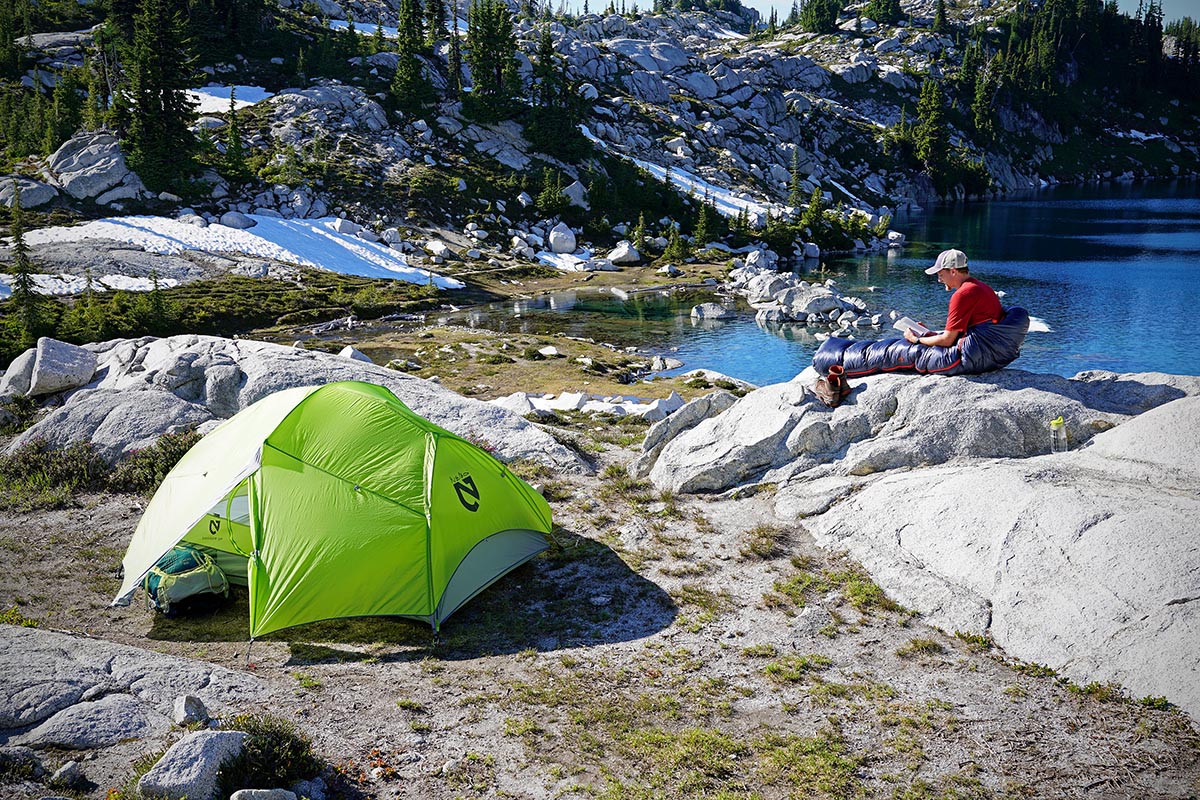
Switchback Travel
We use affiliate links and may receive a small commission on purchases. Read more about us .
Whether you’re a first-time backpacker or a seasoned veteran, everyone could use a good list to make sure they’re prepared when they head out on the trail. Our detailed checklist below covers everything from critical backpacking equipment (tent, pack, sleeping bag, etc.) to kitchen gear , footwear and clothing , health and hygiene products , and personal items and extras . For more information on each product category, many of the headings link to our detailed product round-ups, which are the result of years of testing and opinions (we do love backpacking). And for all our product recommendations in one place, see the landing page for our backpacking gear reviews .
Editor's note: The table above provides a brief overview of what you'll need to get outside, but our full PDF version is printable and offers a more comprehensive breakdown of the necessities and nice-to-haves. See Our Backpacking Checklist PDF
Backpacking Equipment
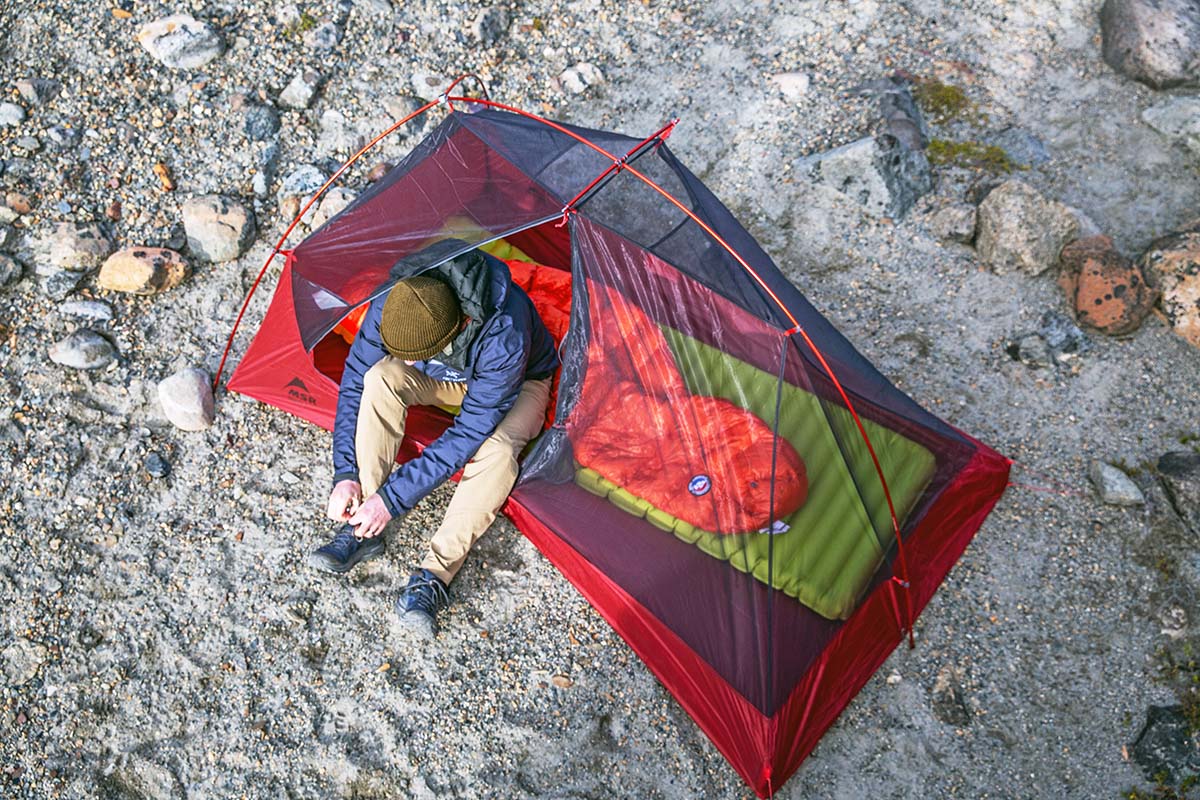
Backpacking Tent
Our top pick: Big Agnes Copper Spur HV UL2 ($550) What we like: Highly competitive combination of weight, livability, and ease of use. What we don’t: Expensive; thin floor is susceptible to tears (we advise using a footprint).
Backpacking Pack
Our top pick: Osprey Atmos AG 65 ($340) What we like: Great carrying comfort, thoughtful organization, and class-leading breathability. What we don’t: On the pricey end and far from the lightest design available.
Sleeping Bag
Our top pick: Feathered Friends Hummingbird YF 20 ($509) What we like: Very warm for the weight and built by a very reputable down specialist. What we don’t: Feathered Friends bags don’t come cheap; lacking some modern features.
Sleeping Pad
Our top pick: Therm-a-Rest NeoAir XLite NXT ($210) What we like: Three-season warmth and great comfort at a competitively low weight. What we don’t: Warm-weather backpackers can save with a lower R-value pad.
Water Filter or Purifier
Our top pick: Sawyer Squeeze ($41) What we like: Impressively light, fast flow rate, and covered by Sawyer’s lifetime warranty. What we don’t: Best for the solo backpacker—groups will likely prefer a larger gravity filter like the Platypus GravityWorks 4L.
Hydration Bladder and/or Water Bottles
Our top pick: Osprey Hydraulics 3L ($37) What we like: Highly reliable and built to last. What we don’t: Rigid backer adds weight and bulk (you can’t roll it up when empty).
Our top pick: Petzl Actik Core ($80) What we like: Great output, long battery life (via AAAs or the rechargeable battery), and easy-to-use interface in a feathery build. What we don't: Expensive and not the most water-resistant option on the market.
Optional Backpacking Equipment
- Trekking poles
- Backpacking chair/sit pad
- Backpacking pillow
- Sleeping bag liner
- Tent footprint/ground cloth
- Extra stakes and guylines
Kitchen Gear
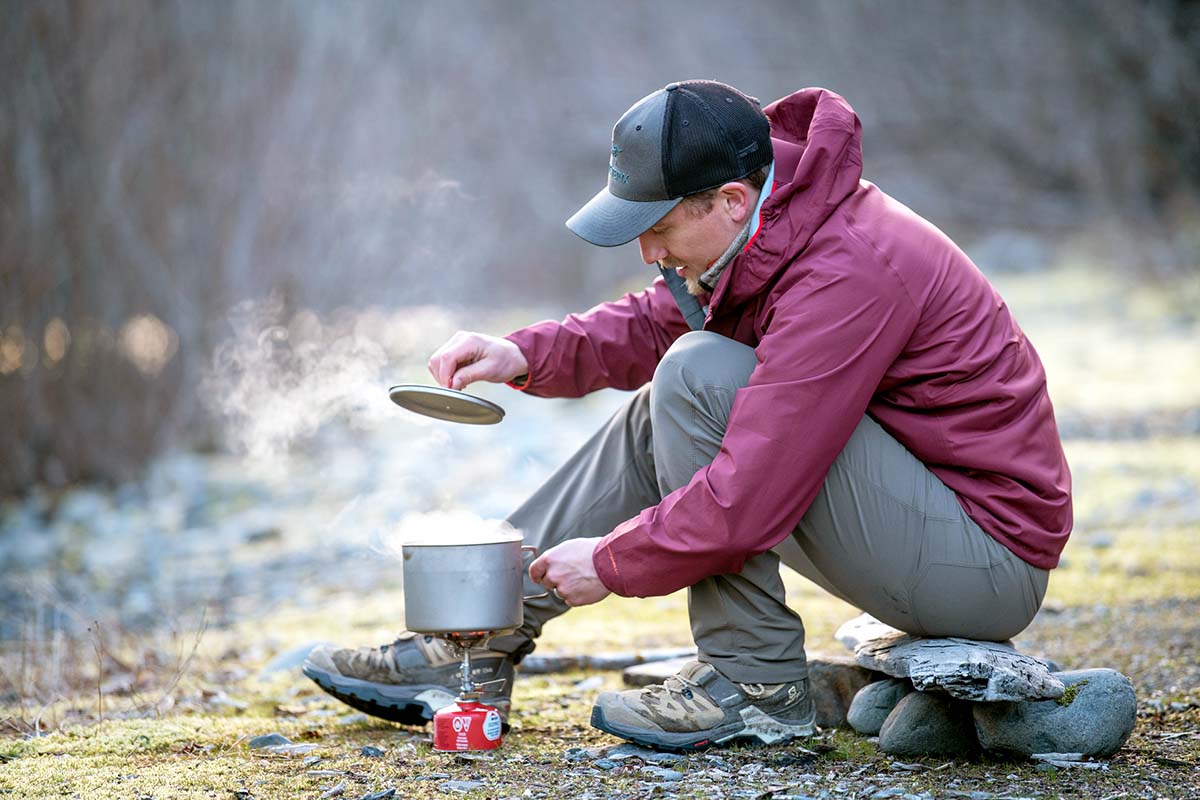
Backpacking Stove and Fuel
Our top pick: MSR PocketRocket 2 ($60) What we like: Surprisingly powerful for how light and cheap it is. What we don’t: Noticeably less stable and wind-resistant than integrated canister systems like the Jetboil Flash.
- Backpacking Food
Our top pick: Backpacker's Pantry ($10-$13) What we like: Affordably priced, easy to find, and extensive selection of tasty meals. What we don’t: Relatively long cook times and less innovative than some upstarts.
Cookware and Utensils
- Spork or long spoon
Optional Food Items
- Instant coffee
- Coffee press or dripper
- Electrolyte tablets
Footwear and Clothing
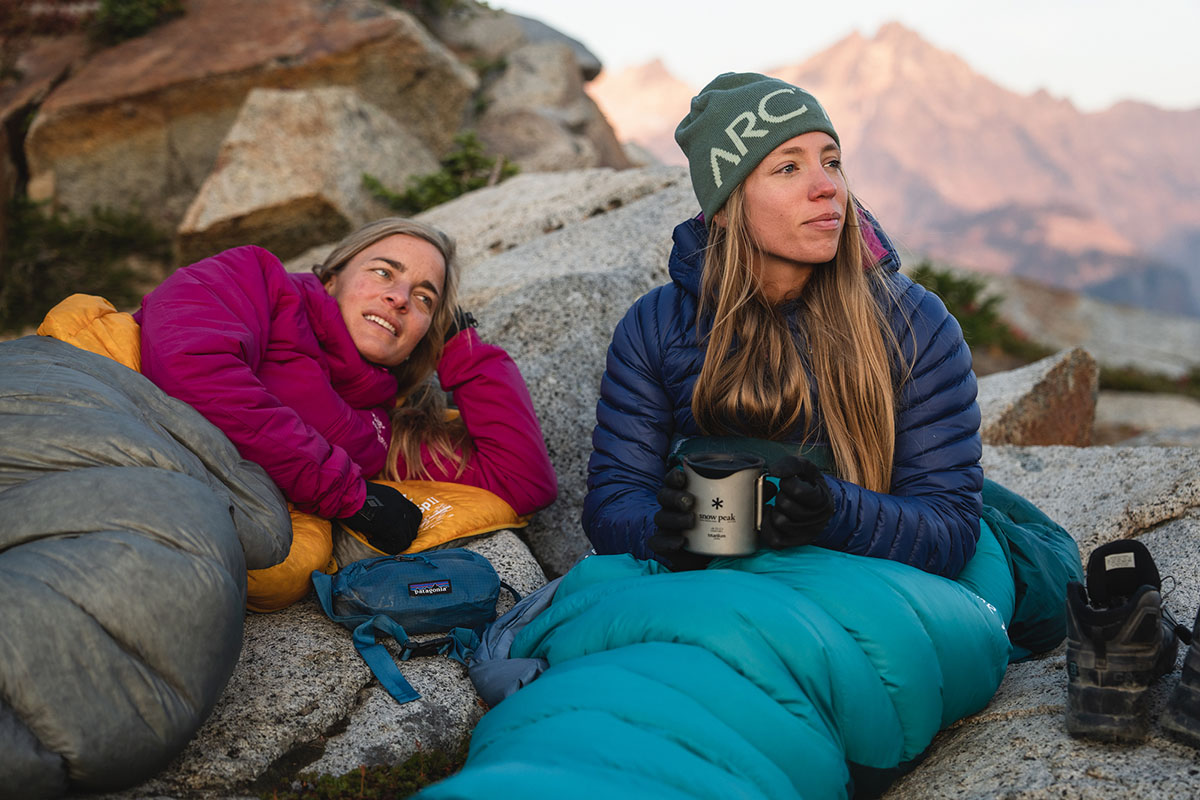
Hiking Boots or Hiking Shoes
Our top pick: Salomon X Ultra 4 Mid GTX ($175) What we like: Trail runner-like agility with hiking boot protection and stability. What we don’t: Those shuttling serious weight might want to step up to a more cushioned and supportive design like Salomon’s own Quest 4.
- Hiking Socks
Our top pick: Darn Tough Micro Crew Cushion ($21) What we like: Great padding and breathability for three-season use; backed by Darn Tough’s lifetime warranty. What we don’t: A bit too thick for sweltering summer days; highly durable build sacrifices a little plushness.
Hiking Pants or Hiking Shorts
Our top pick: Outdoor Research Ferrosi ($99) What we like: Ferrosi fabric nicely balances weight, durability, and mobility. What we don’t: No built-in belt; not the most everyday-friendly option due to the thin construction and basic pocket layout.
Rain Jacket or Hardshell Jacket
Our top pick: Patagonia Torrentshell 3L ($179) What we like: Confidence-inspiring protection and classy looks at a hard-to-beat price. What we don’t : Fairly crinkly and stiff; doesn’t have a chest pocket.
Down Jacket or Synthetic Jacket
Our top pick: Patagonia Down Sweater ($279) What we like: Comfortable fabrics, competitive warmth for the weight, and highly versatile. What we don’t: Not the lightest option for dedicated backcountry use.
Our top pick: Smartwool Classic Thermal Merino 1/4 Zip ($115) What we like: All-merino build is warm and comfortable, regulates temperature well, and doesn’t hold stink like polyester. What we don’t: Pricey, too warm for high-output use, and requires more care to last than synthetics.
Optional Footwear and Clothing
- Sun protection shirt
- Gaiters (for snow or water crossings)
- Neck gaiter/buff
Health and Hygiene
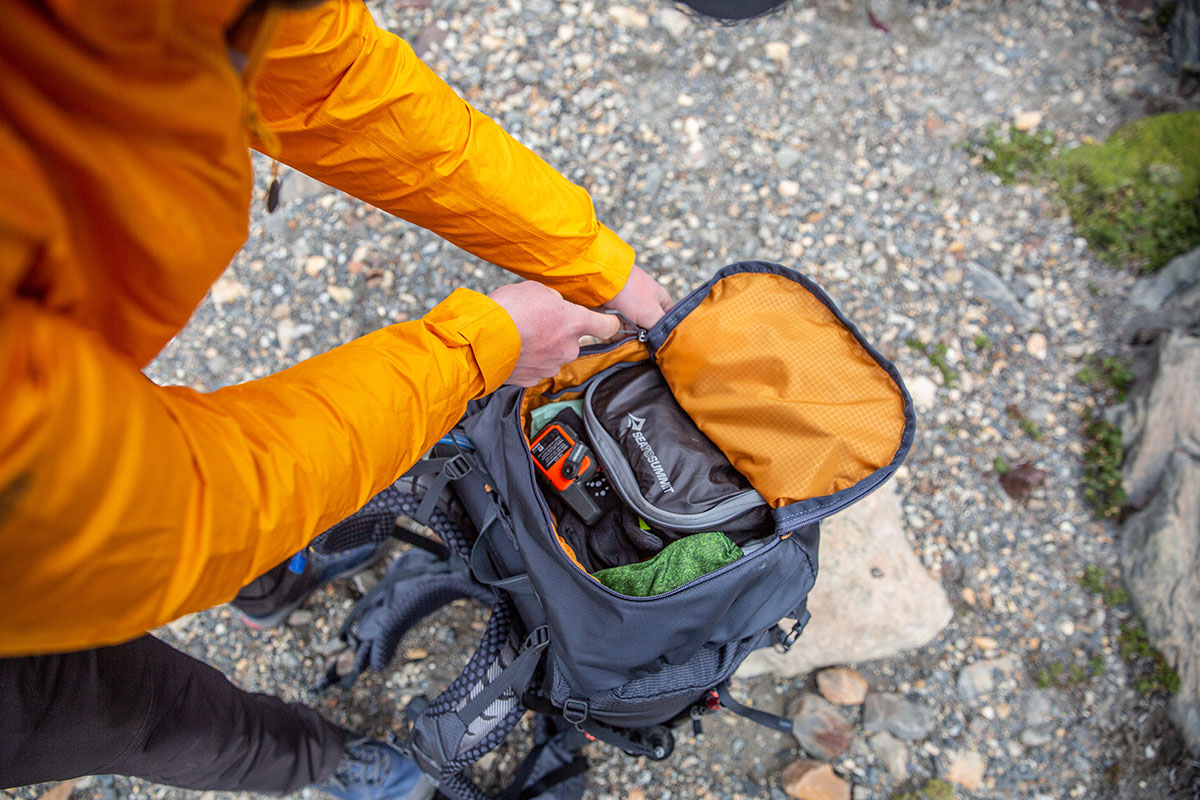
- Toilet paper and/or baby wipes
- Wag bags or trowel (check local regulations)
- Hand sanitizer
- Personal medications
- First aid kit
Sun and Bug Protection
- Insect repellent
Optional Health and Hygiene Items
- Mosquito net
Personal Items and Extras
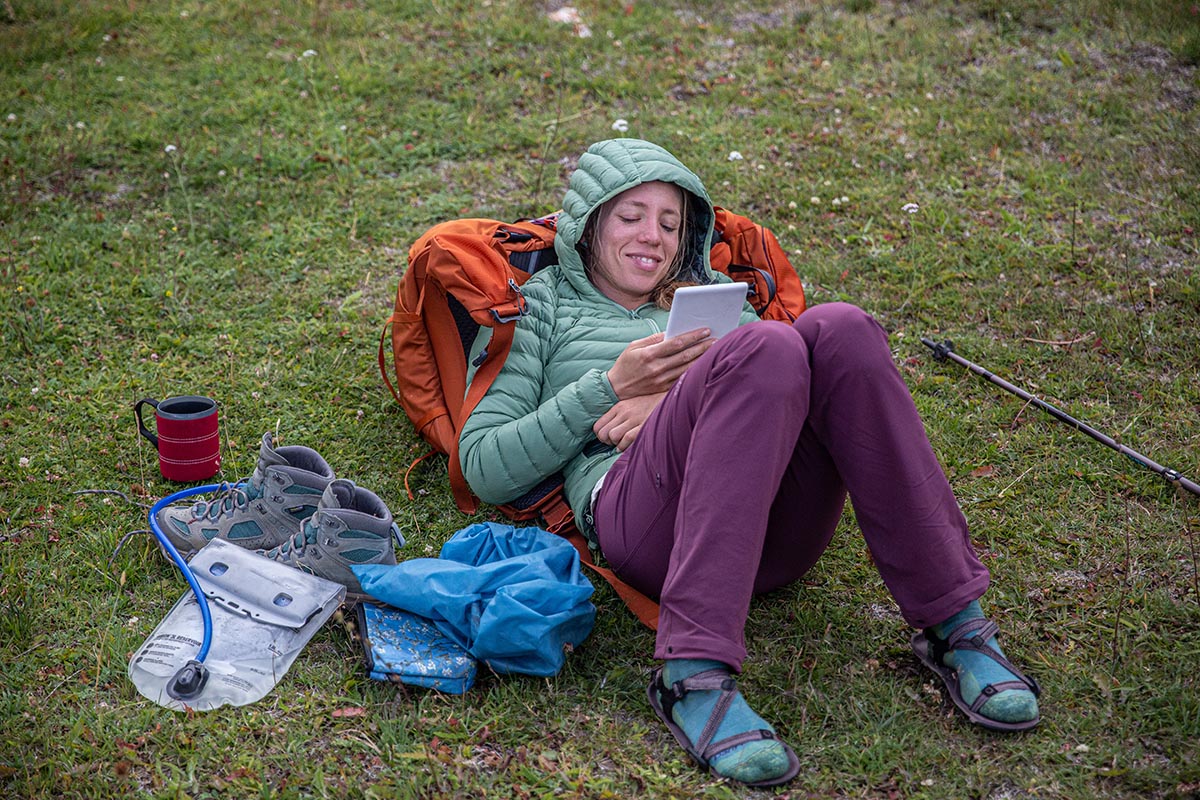
- Basic repair kit (multi-tool, duct tape, extra cord)
- Navigation (map, GPS, compass)
- Cell phone with charger
- Extra batteries and/or solar charger
- Notebook and pen/pencil
- Book or Kindle
- Bear canister and/or bear spray (if required)
- Ziploc bags (for trash and waterproofing electronics)
- Lighter and/or waterproof matches
- Backup water purification tablets
- Pack rain cover (if not included)
- Quick-drying towel
- ID, cards, and cash
- Backcountry permit or reservation (if required)
- Forest Service/park pass (if required)
- Satellite messenger device
Additional Backpacking Tips
- Check restrictions before you go to ensure you're up to date on current fire bans, required bear-proofing measures (such as bear canisters or bear bags for food), etc.
- A balanced and organized load is key for maintaining comfort on the trail. It’s best to place heaviest gear in the middle of your back and pack in a way that allows you to access certain items easily on the go. For a detailed breakdown, see our article on How to Pack a Backpack .
- Use resealable bags for toiletries and other small items you don’t want to lose or get wet, such as lighters and matches.
- If you’re limited on space, consider using dedicated compression sacks for soft gear like your sleeping bag, clothing, etc.
- Research your route ahead of time to verify where you’ll encounter water sources for fill-ups. If they’re plentiful, you may be able to get away with carrying in less water.
- We recommend a 10-degree buffer for your sleeping bag. For example, if your bag is rated to 20 degrees Fahrenheit, expect to be comfortable down to around freezing.
- Pack foods that you know you’ll enjoy eating and remember to drink water often. It’s common to not feel hungry or thirsty after heavy exertion, but refueling properly is key to maintaining energy and feeling good on the trail.
- Always bring backup water purification in case your filter fails. Iodine tablets are a cheap and easy way to ensure you’ll have clean drinking water, and adding electrolyte tablets will help eliminate any aftertaste.
- Be sure to share your itinerary with a trusted friend or family member before heading out, including your expected route and arrival/departure dates.
Where to Buy Backpacking Gear
Perhaps our Seattle roots makes us biased, but we do much of our gear shopping at REI Co-op . The selection is excellent, the return policy is generous (make sure not to abuse it if you want it to continue), the staff generally are knowledgeable and helpful, and you get the brick-and-mortar bonus. A good option for online shopping is Backcountry.com , which has free standard shipping on orders over $50 and solid selection overall (we use Backcountry more for winter purchases but it does well in the hiking/camping world as well). For cheaper items and those who need gear quickly, it’s hard to beat Amazon.com and the sheer volume of sellers and product options. Last but not least, we always support buying gear at your local shop. It’s a great way to support the community, get real information about your trip, and be able to try things on in person. Back to Our Backpacking Checklist See Our Backpacking Gear Reviews
Learn More About Outdoor Gear
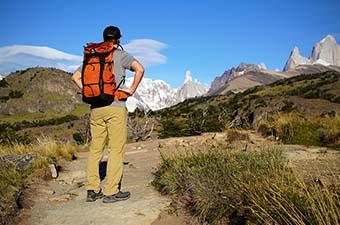
Hiking Gear Reviews
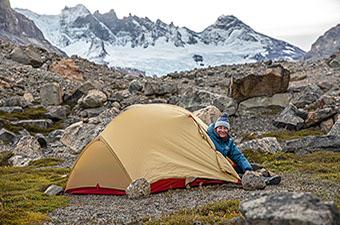
Best Backpacking Tents of 2024
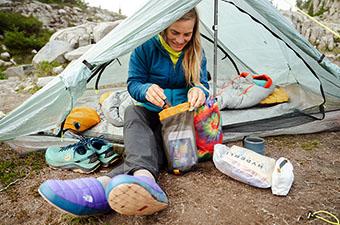
Best Stuff Sacks of 2024
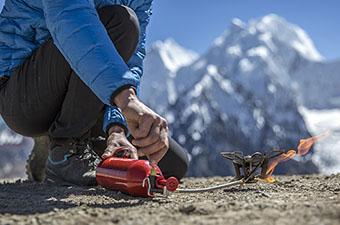
How to Choose a Backpacking Stove
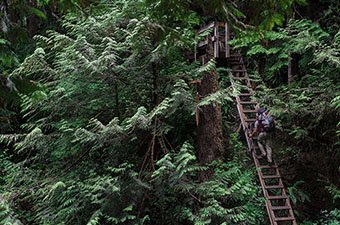
The West Coast Trail: Vancouver Island's Iconic Hike
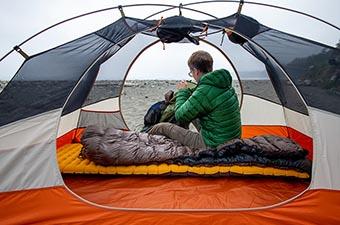
Best Backpacking Sleeping Pads of 2024
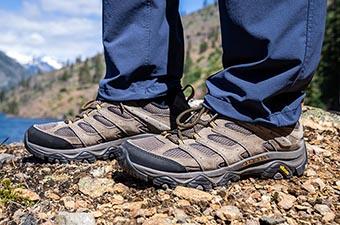
Best Hiking Shoes of 2024
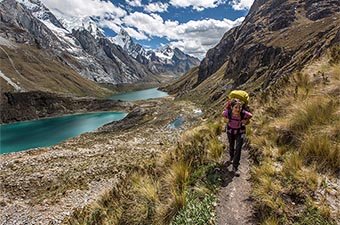
Trekking Peru's Cordillera Huayhuash
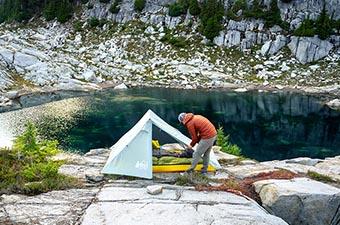
Best Tent Brands of 2024

Mobile Menu
Megamenu - desktop hamburger menu.
- Hiking Gear
- Backpacking Gear
- Biking Gear
- Camping Gear
- Footwear Reviews
- Climbing Gear
- Skiing Gear
- Winter Gear Reviews
- In-Depth Gear Reviews
- Hiking Shoes
- Hiking Boots
- Trail Running Shoes
- Mountain Bike Shoes
- Approach Shoes
- Climbing Shoes
- Beginner Climbing Shoes
- Mountaineering Boots
- Winter Boots
- Rain Jackets
- Down Jackets
- Synthetic Jackets
- Fleece Jackets
- Hardshell Jackets
- Softshell Jackets
- Windbreaker Jackets
- Ski Jackets
- Winter Jackets
- Hiking Pants
- Trekking Poles
- Baby Carriers
- Running Vests
- Backpacking Tents
- Backpacking Packs
- Backpacking Sleeping Bags
- Backpacking Sleeping Pads
- Backpacking Stoves
- Water Filters
- Altimeter Watches
- Handheld GPS
- Mountain Bike Helmets
- Mountain Bikes
- Mountain Bikes Under $1,000
- Mountain Bikes Under $2,000
- Gravel Bikes
- Bike Brands
- Kids' Bikes
- Hitch Bike Racks
- Camping Tents
- Rooftop Tents
- Camping Sleeping Bags
- Camping Mattresses
- Camping Chairs
- Camping Stoves
- Duffel Bags
- Rock Climbing Shoes
- Climbing Helmets
- Climbing Harnesses
- Climbing Quickdraws
- Belay Devices
- Climbing Ropes
- Climbing Backpacks
- Winter Gloves
- 4-Season Tents
- Ski Helmets
- Ski Goggles
- Ski Backpacks
- All-Mountain Skis
- Ski Bindings
- Backcountry Skis
- Backcountry Ski Boots
- Skis for Beginners
- Hardpack Skis
- Mirrorless Cameras
- Full-Frame Cameras
- DSLR Cameras
- Point-and-Shoot Cameras
- Travel Cameras
- DSLR Lenses
- Mirrorless Lenses
- Lofoten Islands
- Lofoten Hiking
- Hardangervidda
- Jotunheimen
- 10 Great Norway Hikes
- Public Huts
- Torres del Paine
- Chalten and Glaciares
- Lake District
- Patagonia National Park
- Milford Sound
- Abel Tasman
- Marlborough
- Great Walks
- Adventure Towns
Add adventure to your inbox
- Privacy Policy
- Terms of Use
© 2024 Switchback Travel. All Rights Reserved. No part of this site may be reproduced without our written permission.
- Myanmar (Burma)
- Philippines
- New Zealand
The Essential Backpacking Packing List
Welcome to the ultimate backpacking packing list.
So you’re going on an adventure of a lifetime? We’re so excited for you!
Preparing for an adventure can be a daunting challenge, with so much to deal with before you head off into the world! Luckily we have you sorted with our backpacking packing list, the full guide you can read below.
In this guide, we’ll cover the following topics:
- What type of backpack to take with you
- The best footwear options
- What clothes to take with you
- The important administrative tasks you must complete before you embark on your adventure
- What technology you should take with you
- The key toiletries to take
- Some useful tips you might not have thought of
But before we dive into the backpacking packing list, there are three key things we recommend you do NOW before you leave on your backpacking trip!
1. Get Travel Insurance
You must have travel insurance for your trip! This for us is non negotiable, if you get sick or injured on the road (and we’ve seen it happen to others) you’ll need it. We use World Nomads insurance (recommended by Lonely Planet & National Geographic!). Click the image above for more details and a quote!
When you’re making your final decisions on your backpacking packing list, the key question to answer for yourself is:
“When it is 35 degrees and we’re running for a train/plane/taxi/tuk tuk/elephant, what do we want on our backs?”
Sharpens the mind towards the essentials, doesn’t it? We always take as little as possible with us on our adventures, why take stuff that you can buy en route for a fraction of the cost? With that in mind, here is our tried and tested travel packing list, and we’re delighted.
So what do we take? We’ve got two lists, one for Barry ( male backpacking packing list ) and Laura ( female backpacking packing list ). First up, Barry! A quick note to say that Barry carries the small carry on bag for planes which will be where we store our electronic items, thus the electronic items in this list are for two people! Read on for his comprehensive backpacking packing list!
My Backpacking Packing List

Choosing the size of your rucksack is a tough decision, you’ll be carrying this around on your back so we wouldn’t reccomend anything bigger than 60 litres. We take this size as we carry a lot of equipment to create our travel films and articles, so if you’re not planning on doing this, you could take a smaller backpack.
We also carry a smaller backpack which is primarily used to carry our laptop and cameras, and any items we need for a day hike or day out and about. This is especially useful when we’re on a bus, train or plane for a few hours and we don’t want to leave our valuables unattended in a cargo hold.

- Light trainers
These trainers might seem like an odd choice, but there are times when flip flops just aren’t suitable and you don’t want to put on your walking trainers. I use these when we’re in cities, or the infrequent times we decide to go out for some drinks and something to eat in a nice place. They are light and fold away so take up hardly any space.
- 1 x Swimming Shorts
- 2 x T Shirts
- 1 x Polo Shirt
- Sun Hat (if you are prone to burning in the sun, take or buy a hat on your travels. I always wear one on treks in case my sunscreen sweats off)
- Travel Insurance ( THIS IS IMPORTANT – don’t leave without it! We strongly believe if you’re going on an adventure of a lifetime, you should take out insurance to cover you. Use the form here to get a free quote from the insurer we use for our adventures!
- Passports (and photocopies)
- Passport Photographs (for visas)
- Credit Card (with free cash withdrawals abroad – main source of cash with direct debit set up to pay off balance each month)
- Credit Card (for purchases and backup)
- Current Account (for cash withdrawals with small amount of cash in as a further back up)
- Flight Confirmations
- Proof Of Vaccinations
- Drivers License (for your road trips)
Technology Packing List

- Panasonic GH5 Camera with 28-300mm lens
- Brilliant camera for video, and great for photos as well. For something a little smaller, check out the Sony A7 .
- Apple iPhone
We’re not Apple fan boys, but we do love the iPhone for quick internet access, photos and video. In fact, if you don’t want to bring a seperate camera then the camera on the iPhone might do a good enough job for you!
- Spare camera battery
- Camera, phone, kindle and video battery chargers
- Crystal Deodorant rock (lasts forever apparently)
- Razor (I want to grow a beard but Laura is having none of it)
- Malarone malaria tablets First aid kit
Useful things
- Silk travel sheet (for dodgy looking mattresses and sheets)
- Duct tape (will fix everything)
- Sunscreen (very important for my pasty skin)
- Combination lock (rather than a key padlock which we could lose)
- Compression pack (to reduce the size of our clothes in our bags)
- Sleeping mask
- Travel pillow
- Small waterproof bag (for electronics)
- Travel towel
Online Clever Things
- Spotify premium account (£15 a month for a constant stream of new music which we can download onto our laptop/iPhones. Friends can also share playlists with us to keep us up to date)
- Photobucket pro account (£20 a year to store photos and videos)
- Prey for mac (to catch any nasty person who decides to steal our laptop)
- Skype on laptop and iPhones
- Twitter account – Worldly Nomads
- Facebook page – Worldly Nomads
- WhatsApp messenger for iPhone (great app that you can group message friends for free over wifi)
So thats it, all of my worldly possessions as we travel! What do you think? Anything we’ve missed or recommendations let us know in the comments below!
Plan Your Adventure
Book your accommodation.
We recommend you use Agoda.com to check your accommodation options! Whenever we’re making plans for a new destination, we always research the accommodation options first to check what’s available, that’s just our travel style. We’ve booked hostels and hotels all over the world through Agoda.com !
Plan Your Journey
We always recommend that you book your journey in advance, so you have peace of mind that your seats are booked! We recommend using 12go.asia as they offer train, bus and ferry ticket booking online in advance! Check out your journey options and prices here and get your seat reserved!

Ultimate Backpacking Packing List: 61+ Essential Items!

Are you heading off backpacking soon and not sure what to pack? If you're avoiding looking like a total newbie, look no further! Discover the essentials and what to bring on your next backpacking trip and not miss out on any crucial items!

Backpacking is an amazing way to travel the world, meet new people and have a once-in-a-lifetime experience. Whether you're heading to Europe for a month or taking on South East Asia for a year, you need to pack the essentials!
Packing a backpack can be stressful. With limited space in your backpack, you need to make sure you're only taking what you need. When it comes to backpacking, there are certain items you just have to bring. Keep on reading for the ultimate backpacking packing checklist that will guarantee the trip of a lifetime.

Choosing Your Backpack: Start Off Right!
Heading off on a solo adventure or a trip with your mates is exciting and daunting. There are lots of things to remember before you jet off.
Organizing your backpack is the best way to start getting ready to travel. Packing in advance will help you feel prepared to take on new adventures. The list will vary depending on the length of your trip. But there are some essentials that should be taken on any backpacking adventure.
Selecting the right backpack is the first step toward successful packing. Some great reliable brands for backpacks like Osprey and Patagonia will never disappoint.
Let's dive into the ultimate backpacking checklist. I've broken it down into a few sections so that it's easier for you to follow.
As always, this is a guide and depending on your destination and traveling style you may want to add or leave out certain items. But these are the items that have always been helpful when I go backpacking...
Backpacking Essentials
Travel adapter.
In an age where electronics rule, a travel adapter is essential to keep your devices juiced up. This is the first thing I pack when I'm going abroad, because if I forget this, it's definitely annoying to find once you're traveling.
An adapter is essential because it allows you to plug your devices into outlets in foreign countries with different plug shapes. The PICKA Universal Travel Adapter is a versatile option that is also a breeze to pack!
On thing I never leave home without is a power bank—even if I'm only leaving to hang out with friends at a local cafe for the day. But it's especially important to have while traveling since running out of battery while on the move can be a nightmare.
I've tried multiple different charging banks, and the Anker Portable Charger, 325 Power Bank is one of my favorite. It's compact yet powerful option and can charge your smartphone multiple times over, making it an essential companion on your backpacking journey.
A sturdy lock safeguards your belongings, whether in a hostel locker or on a train. Peace of mind in a tiny package, that's what a good lock offers. Consider the TSA Approved Master Lock , known for its durability and ease of use.
Travel Towel
A travel towel is compact, quick-drying, and lightweight—a helpful companion on any journey. Try out the Rainleaf Microfiber Towel , which is uber popular on Amazon with over 20,000 reviews. It also won't break the bank!
If you have trouble sleeping or concentrating in noisy environments, remember to throw a few pairs of earplugs into your bags. It'll be an invaluable item on long flights, in bustling hostels, or busy cities.
Try Mack's Ultra Soft Foam Earplugs for their comfort and noise-cancelling capability.
A daypack is your mini suitcase for day trips, holding essentials like water, snacks, maps, and a camera. The Osprey Daylite Daypack is a durable and spacious option, with a design that supports long-day comfort.
Hip Pack or Money Belt
A hip pack or money belt keeps your valuables secure and hidden, reducing the risk of loss or theft.
I actually love the SPIbelt Running Belt for this. Although it's not originally made for travel, it's a sleek, expandable belt that's up for the task. It'll hold your phone, cash, and cards securely.
First Aid Kit
A first aid kit is crucial for treating minor injuries or ailments on the go. Although you may not think you need this, it's better to be safe than sorry. This basic first aid kit from Amazon has everything you'll need with almost 300 items included!
Packing Cubes
Packing cubes simplify your packing process and the rummaging you need to do while you travel! Using cubes will make it easier to find your items and maximize space. Try Flightdeck's affordable packing cubes for an easy-breezy packing experience!
An eSIM is a digital SIM card that allows you to access data plans in various countries without changing physical SIM cards. It's all about staying connected on the go and eSIMs make your life easier.
Gone are the days you need to find a local SIM provider and pick up a foreign SIM card while possibly dealing with language barriers!
I recommend Airalo . It's a leading eSIM store offering plans in over 190+ countries, letting you stay connected wherever your adventures take you.
Other Backpacking Items You Can't Forget
Clothes and footwear.
These are the core essentials for your trip. You can't go to a full moon party without a good outfit or head to the beach without a bikini. It's all about packing smart. Select clothes you can mix and match, and you'll keep your backpack light and your style on point.
You need to think about the activities you'll be doing while backpacking. This will determine what shoes and clothes you bring. Having a little extra space in your backpack means you can bring goodies back from your adventures for friends and family too!
Think weather. Are you backpacking in cold or warm climates? No one needs thermals in Thailand!
This backpacking list is suitable for all types of adventures, so cross out the items that don't suit your adventure:
- Pairs of socks (ankle and long, warmer pairs)
- Light, versatile pants
- A day backpack or bumbag
- Thermal layers
- Multi-purpose trainers
- Light waterproof coat
- Hats and gloves
Health and Beauty
Now you have the clothes under wraps. The next thing to consider is what essential items you need to stay healthy. And look cute, obvs. A great way to organize your toiletries is through packing cubes . These flexible bags help you pack your belongings away neatly. Who doesn't want an organized backpack?
A great tip is buying mini versions of your favorite at-home products if you're going on a short trip. Or, if going further away, buy reusable bottles to fill before you go, and you can top them up throughout your trip. It means that you don't have to lug around large bottles in your backpack. More room for snacks!

Let's dive into some of the essential backpacking supplies you need to bring on your backpacking trip:
- Conditioner
- Baby wipes (good for the face and body!)
- SPF lip balm
- Hand sanitizer
- Feminine hygiene products
It's also important you pack any personal medication along with the correct dosage so that you stay healthy throughout your travels!
Electronics
This area of packing depends on how much you need while backpacking. But the general rule of thumb is that less is more. Take the essentials but remember you're away to travel and make memories. Backpacking is a time to switch off and soak in the moment.
These are essential backpacking gear if you need to have technology on the go:
- Phone (and charger)
- Laptop (and charger), if you're also working while traveling
- Portable speaker
- Kindle to satisfy your reading needs!
- Camera (and charger) if you like to document

Other Items to Consider Packing
Make sure you pack these extra items on your trip. They may not be backpacking necessities, but without some of these, you won't get further than airport security…
- Important documents like your passport, booking confirmations, and visa documents
- Travel journal to keep track of your trip
- Driver's license (or other government issued ID)
- Travel insurance policy documents
- Cash and credit cards
Keep all your important documents together in a plastic sleeve or document pouch so they're safe and easy to find. No hunting around your neatly packed bag for that one pesky paper.
What About If You're Hiking or Camping?
So, maybe you're not thinking about the backpacking that's roughing it in hostels around Asia or Europe. Maybe you're thinking about actually roughing it by doing a hiking trip or a camping getaway in wild backcountry.
Planning a camping trip, or even preparing for a long hike, can be challenging. If this is the type of backpacking packing list you're looking for, there are a few things I'd remove from the lists above, but also add quite a few items.
Here are goodies I consider important if you're hiking or camping:
Lightweight Tent
A tent is more than a place to sleep—it's your home in the wilderness, a haven from wind, rain, bugs, and morning dew. That's why a good quality tent is probably the most important item you need to take backpacking in the wilderness.
The MSR Hubba Hubba NX 2-Person Lightweight Backpacking Tent is a pretty penny, but it's well worth the investment, combining durability, easy setup, and optimal space.
Sleeping Bag
A good quality sleeping bag is your best friends on a chilly night in the great outdoors! As long as you get a reliable one it'll keep you snug, preserving your body heat and making sure you wake up refreshed for a new day of adventure.
If you think you'll be a regular, consider the well-known Hyke & Byke Eolus 0 Degree F 800 Fill Power Goose Down Sleeping Bag . It's quite pricey but worth the investment if this is going to be a long-term hobby.
But if you're on a budget or not entirely sure how much use your sleeping bag will get in the future, you can pick up something more affordable, like the T ETON Sports LEEF Lightweight Mummy Sleeping Bag . It's still go lots of reviews but costs less than half of the Hyke & Byke sleep bag.
Sleeping Pad
A sleeping pad is like a mini mattress between you and the hard, often cold ground. It insulates your body from the cold earth and adds a layer of comfort.
If you're like me and enjoy a bit of luxury even when camping, this is one of the must-haves! Check out the Gear Doctors Self Inflating Sleeping Pad . With over 5000 reviews and a 4.6 rating on Amazon, you know it's been tested!
Biodegradable Soap: Your Eco-friendly Suds
Environmentally-friendly soap is great even if you're backpacking your way through hostels.
But when bathing or washing dishes in the wild, it's absolutely crucial to minimize our environmental impact. Biodegradable soap breaks down naturally, leaving our beautiful wilderness pristine.
My go-to is Dr. Bronner’s Pure-Castile Liquid Soap —it's a multi-purpose, eco-friendly choice.
Headlamps may be an item most people don't think much about. But I find them an extremely useful accessory as they light your path, keep your hands free, and can even signal for help.
Whether you're finding your way back to camp or reading in your tent, a headlamp is an invaluable tool. Consider the Black Diamond Spot Headlamp , a popular choice for its brightness and durability.
Navigation (GPS)
A reliable GPS is your compass in a world without signposts. It helps you find your way, avoid getting lost, and ensure you're on track to your next destination.
The Garmin GPSMAP 65, Handheld GPS offers high precision tracking and is designed to withstand rough conditions.
Sometimes, especially out in the wild, your phone will let you down. Be sure to stay safe by packing a GPS!
Rain Jacket
A rain jacket is your personal shield against the elements. It keeps you dry, protects from wind, and can even serve as an extra layer on cold days.
Although this should be staple for any type of backpacking trip, it's especially important if you're planning to be outdoors 24/7. The Columbia Arcadia Ii Jacket for women or the Columbia Glennaker Rain Jacket for men are great choices since you know that you're getting good price and quality when you go with Columbia products .
Hiking Boots
Good hiking boots are to backpackers what noble steeds are to knights. This may sound like an overexaggeration, but your feet will thank you!
Ensuring you have the proper boots will support your feet, protect them from the rough and tumble of the trail, and keep them dry. Salomon hiking boots for women and men are a reliable and comfortable choice, offering excellent support and traction.
Water Filter
Clean water is essential, and in the wild, it's not always available. A water filter is a lifeline, ensuring you have safe drinking water wherever you are.
The Sawyer Products MINI Water Filtration System is a lightweight, easy-to-use option that filters out virtually all bacteria and protozoa.
In our LifeStraw review we also looked at it as an alternative to the traditional water filter system. Find out whether it's a better option for your upcoming camping or hiking trip.
What Should You Not Bring Backpacking?
Now that the backpacking necessities have been covered, it's time to look at the things you should simply leave at home.
It's easy to overpack when going backpacking. But considering the limited space of a backpack, it's essential you only bring what you need. And remember thadt carrying a large bag on your back all day can take its toll. You'll regret packing that extra pair of shoes!
There are a few things that need to be left at home when backpacking:
Extra Clothes
You think you may need them, but you don't. When you get out there, you end up wearing the same pair of shorts over and over again. Try to bring thinner layers and things that fold small and don't crease.
Make sure you don't bring anything of value with you when backpacking. You don't want to be carrying around expensive jewelry or sentimental items. They are best kept safe at home!
Dried snacks, sweets, and anything that doesn't melt is a great idea to bring in your backpack. It's good to have a little emergency snack stash. But perishable food items are a big no-no. And they'll probably be confiscated at customs anyway.
Heavy Items
To minimize the weight, you'll be carrying while backpacking, leave behind heavy, bulky items. Not only will they take up loads of room, but they will also weigh you down! No heavy sweaters, boots, or that 500-page novel you've been meaning to read.


Should I Pack in Advance for Backpacking?
Start preparing for your backpacking trip 1 month in advance. This gives you plenty of time to finalize your itinerary and begin the packing process.
It means you have time to buy the right backpack and ensure everything fits in. You can organize any last-minute backpacking supplies and most importantly, you can enjoy getting excited about your trip.
Backpacking FAQ's
What to pack for a 3-day backpacking trip.
You will need:
- Phone and charger
- Book/magazines
- 1 pair of shoes
- Travel documents
What to Pack for a 7-day backpacking trip?
For a 7-day backpacking trip, you will need:
- Entertainment
- Laptop and charger
- Medium-sized backpack to hold it in
What Should I Pack for a Backpacking Trip to Europe?
Backpacking in Europe has many similarities to other destinations. But the weather and adventures you'll be doing can vary. No matter where you're traveling, make sure you check the airline's baggage allowance to ensure your backpack fits their requirements.
Pack Your Bags & Get Ready to Go!
Now that your packing is sorted, it's time to start the planning. Speaking of travel plans, give Pilot a try to help you plan your next amazing adventure!

Disclosure : Pilot is supported by our community. We may earn a small commission fee with affiliate links on our website. All reviews and recommendations are independent and do not reflect the official view of Pilot.

Satisfy your wanderlust
Get Pilot. The travel planner that takes fun and convenience to a whole other level. Try it out yourself.
Trending Travel Stories
Discover new places and be inspired by stories from our traveller community.
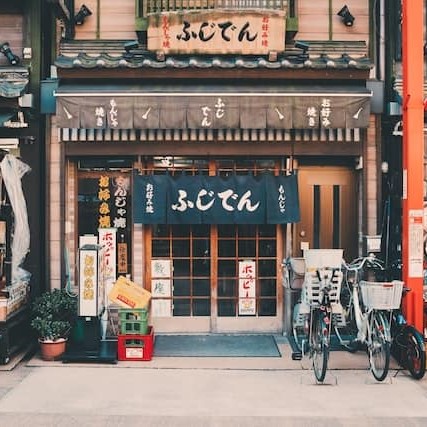
Related Travel Guides

Cruise Packing List: How to NOT be a newbie aboard!

Beach Vacation Packing List [2024]: What to pack + tips!
![backpacker travel list 17 Best Travel Backpacks for Women [2024]: Traveler's Picks!](https://assets-global.website-files.com/63d1baf79ce0eb802868785b/64090de69228ac561e47398d_travel_backpacks_for_women.jpg)
17 Best Travel Backpacks for Women [2024]: Traveler's Picks!
![backpacker travel list Beach Vacation Packing List [2024]: What to pack + tips!](https://assets-global.website-files.com/63d1baf79ce0eb802868785b/63d1baf89ce0eb4ad4688de4_Beach_Vacation_Packing_List_-_david-emrich-odII8BzuWU8-unsplash-min-min.jpeg)
Make the most of every trip
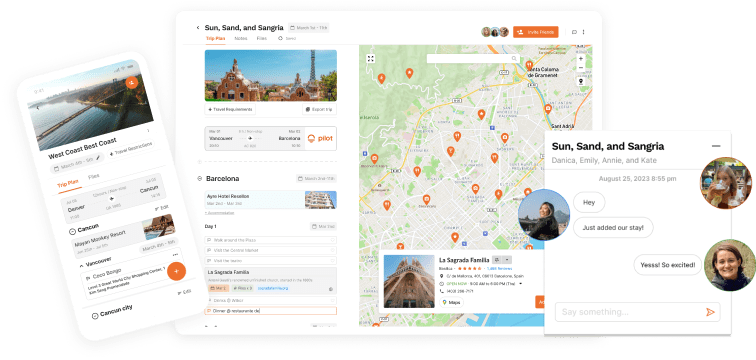
You won’t want to plan trips any other way!
The trip planner that puts everything in one place, making planning your trip easier, quicker, and more fun.
- Solo Travel Tips
GAFFL connects travelers from all over the world who have similar itineraries to share costs and experiences. Simply type the destination you are journeying to, connect with travelers and locals, chat, meet up, and explore together!
Table of Contents
Packing for a trip is one of the most important preparation steps. A minimalist approach to packing will make you more comfortable and more flexible. By keeping things carry-on size, you can even save a lot of money by avoiding extra check-in fees.
If you are planning to start your first trip, you might end up hauling 30 kg worth of belongings in a huge backpack. Everyone does this same mistake on their first few trips. They sweat, they curse, and finally swear they’ll never pack so much again.
This packing list has been revised and optimized for minimalism while making sure you will have everything you need for your trip.
Join our subscriber list to receive the best tips on solo travel, helpful travel guides, inspirational travel stories, and more. You can unsubscribe anytime with just one click.
Best Packing Tips
Keep Your Pack light. Long term travel is all about packing light but making sure you have all the essentials to make travel as easy as possible. Whether you’re camping or hiking, traveling to Asia or Europe on a budget, you just need to travel as light as possible.
Simple rules for minimalist travel:
1- Pack the must-haves, not the nice-to-haves
You might end up packing more things just because ‘more stuff’ feels somehow comforting and safe. But, many first-time travelers wish they’d packed half as much. So, think long and hard about every item, then eliminate anything you don’t absolutely need.
2- Carry fewer clothes
It’s much easier to do laundry than to carry weeks worth of clothing. So, you don’t need to carry too many clothes.
3- Bring versatile instead of special-case items
Focus on items that will be useful to you all the time or have multiple uses. Keep in mind you can often rent gear locally, or find a cheap temporary fix instead of carrying something for one-time use.
If you forget something, there are shops all over the world and you can buy it there.
4- Don’t pack at the last moment
Pack the day before your trip starts. If you’re in a hurry, you might stress out and stuff your bag too full.
5- Try to keep a quarter of your bag empty
Loading unloading would be so easier and you can use that free space for storing gifts and souvenirs.
Backpacking Necessities - Essential Backpacking Items
Your passport, wallet, and your phone . These are the most important things you have while you’re traveling. Here are some other essential items for any backpacking trip.
1. A Backpack
You can’t be a backpacker without a backpack! This is the first important item on this backpacking packing list.
It’s better to go for a lightweight and versatile pack (and possibly carry-on size). It’ll be more comfortable to carry. There are other few features worth keeping an eye on:
Front loading . Many backpacks are top-loading, with a drawstring to close it at the top. It means having to dig around awkwardly to get something from the bottom. Instead, bags with a clamshell design are much nicer: you just zip them open face down, with everything within instant reach.
Waist Strap . Do you want to avoid sore shoulders and bad backs? Using a waist strap distributes the load around your whole body instead of just your shoulders and it’s essential for avoiding sore shoulders and bad backs.
Laptop compartment . A separate padded compartment keeps your laptop secure. You can also use these zipped compartments for books, travel journals, or many other things.
Rain resistant . You don’t want the water to leak into your bag, right? So, you should always look at whether it’s weather-sealed or includes a rain cover.
Lockable zippers . O-rings that let you attach a padlock or wire lock to prevent opportunistic theft.
Internal or external compression straps . This will help you pack more and organize better.
Good carry handles. It’s important when you’re not wearing the pack on your back.
The Best Travel Backpacks
Osprey Farpoint 40
Ideal for backpacking & staying in hostels.
Only basic features, but it's light and inexpensive.
Osprey Porter 46
A popular bag that’s sturdier and better organized than the Osprey Farpoint.
But, exceeds carry on size limit, and the straps are not as comfortable.
Osprey Farpoint 55 trek
Like a premium version of the original Farpoint
More space, adjustable suspension system, comfortable trampoline-style back & integrated rain cover
Ideal for long term travel.
Tortuga Setout
Best all-purpose budget backpack.
Great quality + value
Excellent organizer compartments
Peak Design 45L Backpack
Amazingly clever design filled with surprising features
35L but expands to 45L
Best premium travel backpack if the price is no concern.
AER Capsule Pack
Great for city travel & one-bag travelers
Minimalist design with a large main compartment
A really solid carry-on that I like a lot
Backpack sizes are typically expressed in liters (i.e., the volume they can contain). Here are some of the common sizes:
15-30L . Too small unless you’re going on a weekend trip, or you’re super minimalist. This size is usually for day-packs or commuter bags.
35-45L . Perfect for shorter trips but equally for trips lasting many weeks or months (if you know how to pack light). Ideal for traveling within one climate and don’t need to pack for every type of weather. This size is usually accepted as carry-on luggage, saving you time and check-in fees when flying.
50-65L. Good if you need extra space. Not everyone is a light packer so some will prefer these sizes despite the extra weight.
70-120L . Only for trekking and camping expeditions. The internal support frames often already weigh several kilos. This is overkill for most travelers. But if you need to store a tent and other gear, this might be the size for you.
Carry-ons (around 40 liters) are often the best backpacks for traveling — if you’re staying in hostels and don’t need to bring any bulky gear. You’ll end up with less weight on your back and more freedom of movement.
2. A Good Day Pack
Usually, you’ll have your day pack with you while your backpack is in the hostel.
Daypacks are essential for urban and remote adventures. You can easily pack everything you need including your water bottle, snacks, layers, and anything you might purchase while exploring a new city!
3. A Micro-fiber Towel
A proper travel towel is an essential thing to have for your trip. You don’t get towels in most backpacker hostels and you can’t take your hotel’s bath towel with you.
Regular towels are heavy and take up a ton of space. You can use micro-fiber dry towels. Micro-fiber towels take almost no space, are lightweight, and dry easily so that they won’t get moldy and start smelling.
4. Travel Security Money Belt
Nobody will know you have money on you! It has a hidden inner pocket in which you can hide your cash.
Traveling with a money belt is a small investment that helps keep your money safe.
Check out The 9 Best Travel Money Belts of 2020 .
5. Combination Padlocks
Carry small combination padlocks to lock backpacks or hostel lockers.
Padlocks are important for a few reasons.
First, padlocks are essential when you stay in hostels. Most hostels provide some sort of lockers, but not all of them provide locks for those lockers.
Second, connect the lock between two zippers and make your bag safe from thieves.
If you frequently lose your room keys when staying in hostels, you can use a padlock to lock your room.
6. International Travel Power Adapter
Carry a universal travel adapter with two USB ports. This means you never have to worry about all the different electrical sockets used around the world. You can charge your laptop and two other electrical devices via USB at the same time.
7. Swiss Army Knife
One of the most valuable travel tools is a swiss knife . This will be needed to open cans and cut stuff.
Remember to put it in your check-in luggage before flights.
8. A Backpacking Toiletry Bag
To keep all your toiletries and meds in one place, you need a backpacking toiletry bag . It will be extremely helpful when you use a shared bathroom.
9. A Laundry Bag
Having a laundry bag helps out so much if you want to separate your dirty clothes from the rest.
10. An LED Headlamp
A headlamp comes in handy when you have to find your way through a dorm room at night when there’s a power cut (not unusual in developing countries), or when you’re hiking at night or going on a caving adventure. A regular torch works too, but having a light strapped on your head keeps your hands free.
Backpacking Packing List - Electronics Checklist
1. A Laptop
If you work on the road or take online classes, good quality, light, and a fast laptop is an essential item for you. But if you don’t, then an iPad or a tablet would be fine for watching movies, staying in contact with others, and reading books.
2. Camera
If you love photography, you can bring a bigger camera with an interchangeable lens system. The most lightweight option is obviously to use a compact camera or a smartphone.
But if you prefer a fully-featured camera, you can use a DSLR camera.
Check out this detailed post for a breakdown of the best travel cameras , if you’re really interested in travel photography.
3. A Smartphone
If you have a smartphone with a good quality camera, you might not need a DSLR camera on your trip. It totally depends on how much you care about your photos.
4. Power Bank
It is extremely important to keep your phone, Go-pro, or other electronic devices charged whilst exploring.
5. Earphones
Carrying earphones with you is a must.
Backpacking Packing List - Backpacking Clothes Checklist
The clothing you pack will change slightly depending on the conditions you expect to encounter on specific trips, but the fundamentals remain the same.
Nylon, polyester, wool, bamboo, silk, and synthetic blends are all good options. Avoid cotton , it absorbs moisture and takes a long time to dry, which can cause a variety of problems including blisters and chafing.
Choose items that can be worn together in layers. The key to packing light and keeping warm in colder temperatures is layering instead of using bulky winter clothes.
Rain gear should be lightweight, breathable, and waterproof.
Clothes for Hiking
Hiking or trail-running shoes
Synthetic or wool T-shirt
Hiking or running shorts (1 pair)
Jeans (optional)
Hiking pants (1 pair)
Synthetic or wool underwear (2 pairs)
Synthetic or wool socks (2 pairs)
Sun-protective hat
Sun-protective gloves (opt.)
A set of swimming gear
Clothes for Camping
Long-underwear top
Long-underwear bottoms
Wool or synthetic socks for sleep
Puffy insulated jacket or vest
Sandals (opt.)
For Bad Weather
Waterproof rain jacket
Waterproof rain pants
Warm gloves
Waterproof gloves/mitts
Essential Gear List - Adventure, Camping and Hiking Gear Checklist
If you camp, hike or dive a lot, you know you’ll need to carry more gear. This gear checklist has got you covered on everything you’ll need for your epic hiking or backpacking trip.
A backpacking tent
Tent pole
Stakes
Groundsheet for tent floor durability (optional)
Sleep System
A sleeping bag
A sleeping pad
Pillow or stuff sack
Pocket Blanket
Camp Kitchen
Stove + fuel
Small lighter
Spoon
Cup or mug (optional)
Biodegradable soap (optional)
Spice kit (optional)
Tools & Accessories
Headlamp + extra batteries
Lightweight hammock (optional)
Mosquito net
Trekking pole (optional)
Lightweight pocket knife or multi-tool
Umbrella (optional)
Bear spray (optional - only for the grizzly country)
Lip balm
Pen and notebook
Navigation System
A cellphone (opt.)
Solar/portable charger (opt.)
GPS with maps downloaded
Personal locator beacon (opt.)
Route description
Backpacking Permits
Emergency Kit
Duct/Tenacious Tape (for repairs)
Sleeping pad patch kit
Superglue (optional)
Needle + thread (optional)
Small Sharpie (optional)
Stormproof matches + small fire starters
Small backup lighter
Backup water treatment pills (Chlorine Dioxide)
Food Storage
Stuff sack for hanging (opt.)
Bear bag/bear canister (if required)
Hydration
2-4 water bottles (ability to carry 2-6 liters depending on the climate) or a Hydration reservoir
Water treatment (filter, UV purifier, etc.)
Pre-filter for water treatment, ex: pantyhose (optional)
Collapsible water containers (optional, for carrying lots of water in dry locations)
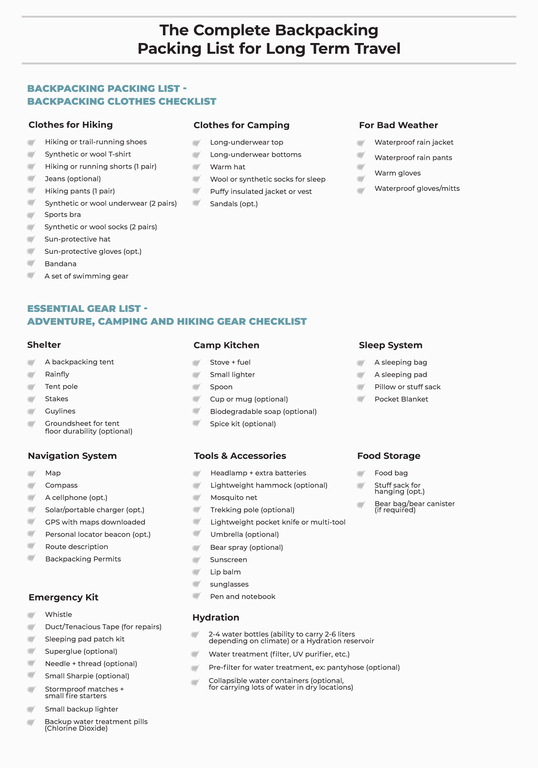
Backpacking Packing List - Toiletries Packing List
Bring only as much as you anticipate needing.
Hand sanitizer
Toilet paper/wipes + sealable bag (to pack it out)
Digging Trowel
Menstrual products
Toothbrush + paste
Prescription Rx
Contact lenses + supplies/glasses
Lotion (optional)
Bug repellant
Eye drops (optional)
Small comb (optional)
Hair ties (optional)
Nail clipper (optional)
Backpacking Packing List - First Aid Packing
Pack a first aid kit designed for where you are going.
Thermometer . If you have a fever.
Bandages and gauze . For cleaning and covering wounds. Blisters and small cuts will be your main enemy.
Antihistamines . Used to relieve or prevent the symptoms of hay fever and other types of allergy.
Mosquito repellent . It can be an effective way to repel mosquitoes and prevent bites.
Personal medicines such as inhalers
Paracetamol and aspirin . For mild or moderate pain.
Malaria pills ; if necessary
OTC meds. + vitamins
Backpacking Packing List - Document Checklist
Flight, train, and bus tickets
Valid Passport
A laminated copy of your passport
Driver’s license
Student ID; valid
Debit Cards x 2
Credit Card
Dollars or Euros
Some, one-dollar bills for tips; depending on the country
half a dozen passport photos for visas on arrival (you normally need two per visa).

Packing light will give you a lot of benefits, but not everyone will want to travel in the same way. If you feel a larger bag and more options are better, you should go for it. If you’re going on a flashy holiday and you want to wear something fancy every evening or at the party, it’ll be more difficult to be truly minimalist.
I hope this post has been helpful. Just make sure you give it a good test run before your trip and avoid packing at the last minute.
Happy travels.
SOLO TRAVEL TIPS
Your latest travel inspiration, solo trips in popular countries.
- Solo Trips in United States
- Solo Trips in India
- Solo Trips in Thailand
- Solo Trips in Spain
- Solo Trips in Japan
- Solo Trips in Italy
- Solo Trips in Australia
- Solo Trips in France
- Solo Trips in United Kingdom
- Solo Trips in Canada
- Solo Trips in Turkey
- Solo Trips in Indonesia
- Solo Trips in South Korea
- Solo Trips in Vietnam
- Solo Trips in Portugal
- Solo Trips in Greece
- Solo Trips in Iceland
- Solo Trips in United Arab Emirates
- Solo Trips in Norway
- Solo Trips in Netherlands
- Solo Trips in Mexico
- Solo Trips in South Africa
- Solo Trips in Germany
- Solo Trips in Colombia
- Solo Trips in Switzerland
- Solo Trips in Afghanistan
- Solo Trips in New Zealand
- Solo Trips in Brazil
- Solo Trips in Czech Republic
- Solo Trips in Philippines
- Solo Trips in China
- Solo Trips in Croatia
- Solo Trips in Argentina
- Solo Trips in Malaysia
- Solo Trips in Hungary
- Solo Trips in Morocco
- Solo Trips in Costa Rica
- Solo Trips in Tanzania
- Solo Trips in Austria
- Solo Trips in Egypt
- Solo Trips in Jamaica
- Solo Trips in Sri Lanka
- Solo Trips in Ireland
- Solo Trips in Belgium
- Solo Trips in Kenya
- Solo Trips in Taiwan
- Solo Trips in Nepal
- Solo Trips in Russia
- Solo Trips in Poland
- Solo Trips in Singapore
- Solo Trips in Dominican Republic
- Solo Trips in Malta
- Solo Trips in Montenegro
- Solo Trips in Namibia
- Solo Trips in French Polynesia
- Solo Trips in Guatemala
- Solo Trips in Denmark
- Solo Trips in Hong Kong
- Solo Trips in Georgia
- Solo Trips in Bangladesh
- Solo Trips in Uzbekistan
- Solo Trips in Romania
- Solo Trips in Peru
- Solo Trips in Sweden
- Solo Trips in Mongolia
- Solo Trips in Tunisia
- Solo Trips in Slovenia
- Solo Trips in Albania
- Solo Trips in Azerbaijan
- Solo Trips in Kazakhstan
- Solo Trips in Cuba
- Solo Trips in Lebanon
- Solo Trips in Lithuania
- Solo Trips in Fiji
- Solo Trips in Mauritania
- Solo Trips in El Salvador
- Solo Trips in Bahamas
- Solo Trips in Chile
- Solo Trips in Saint Lucia
- Solo Trips in Monaco
- Solo Trips in Panama
- Solo Trips in Madagascar
- Solo Trips in Maldives
- Solo Trips in Cyprus
- Solo Trips in Honduras
- Solo Trips in Puerto Rico
- Solo Trips in US Virgin Islands
- Solo Trips in Papua new Guinea
- Solo Trips in Iraq
- Solo Trips in Ethiopia
- Solo Trips in Serbia
- Solo Trips in Israel
- Solo Trips in Chad
- Solo Trips in Yemen
- Solo Trips in Cambodia
- Solo Trips in Laos
- Solo Trips in Syria
- Solo Trips in Bosnia and Herzegovina
- Solo Trips in Seychelles
- Solo Trips in Ghana
- Solo Trips in Qatar
- Solo Trips in Iran
- Solo Trips in Zimbabwe
- Solo Trips in Saudi Arabia
- Solo Trips in Guadeloupe
- Solo Trips in Botswana
- Solo Trips in Greenland
- Solo Trips in Faroe Islands
- Solo Trips in Ecuador
- Solo Trips in Uganda
- Solo Trips in Saint Kitts And Nevis
- Solo Trips in Andorra
- Solo Trips in Mauritius
- Solo Trips in Slovakia
- Solo Trips in Aruba
- Solo Trips in Bahrain
- Solo Trips in Pakistan
- Solo Trips in Oman
- Solo Trips in Democratic Republic of Congo
- Solo Trips in Congo
- Solo Trips in Nigeria
- Solo Trips in Finland
Travel Guide for Popular Countries
- Australia Travel Guide
- United Kingdom Travel Guide
- United States Travel Guide
- Spain Travel Guide
- New Zealand Travel Guide
- Thailand Travel Guide
- Nepal Travel Guide
- Vietnam Travel Guide
- Germany Travel Guide
- China Travel Guide
- Iceland Travel Guide
- Mexico Travel Guide
- Japan Travel Guide
- Peru Travel Guide
- Singapore Travel Guide
- Switzerland Travel Guide
- Indonesia Travel Guide
- Portugal Travel Guide
- Malaysia Travel Guide
- Brazil Travel Guide
- Costa Rica Travel Guide
- Colombia Travel Guide
- Greece Travel Guide
- Maldives Travel Guide
- Turkey Travel Guide
- Netherlands Travel Guide
- Canada Travel Guide
- South Korea Travel Guide
- Sri Lanka Travel Guide
- India Travel Guide
- Philippines Travel Guide
- Cambodia Travel Guide
- Bangladesh Travel Guide
- Laos Travel Guide
- Romania Travel Guide
- South Africa Travel Guide
- Taiwan Travel Guide
- France Travel Guide
- Hungary Travel Guide
- Czech Republic Travel Guide
- Estonia Travel Guide
- Croatia Travel Guide
- Bulgaria Travel Guide
- Italy Travel Guide
- Egypt Travel Guide
- United Arab Emirates Travel Guide
- Panama Travel Guide
- Ecuador Travel Guide
- Belize Travel Guide
- Malta Travel Guide
- Poland Travel Guide
- Denmark Travel Guide
- Slovenia Travel Guide
- Norway Travel Guide
- Austria Travel Guide
- Finland Travel Guide
- Slovakia Travel Guide
- Armenia Travel Guide
- Ireland Travel Guide
- Lithuania Travel Guide
- Sweden Travel Guide
- Russia Travel Guide
- Algeria Travel Guide
- Zimbabwe Travel Guide
- Bolivia Travel Guide
- Turkmenistan Travel Guide
Subscribe To Our GAFFL Newsletter
Get the inside scoop on the best destinations, stories, and travel hacks. Join our community and subscribe to the GAFFL Blog now!
By subscribing, you agree to our Terms of Use and Privacy Policy .
How to pack like a pro for a backpacking trip in 2022

May 12, 2022 • 7 min read
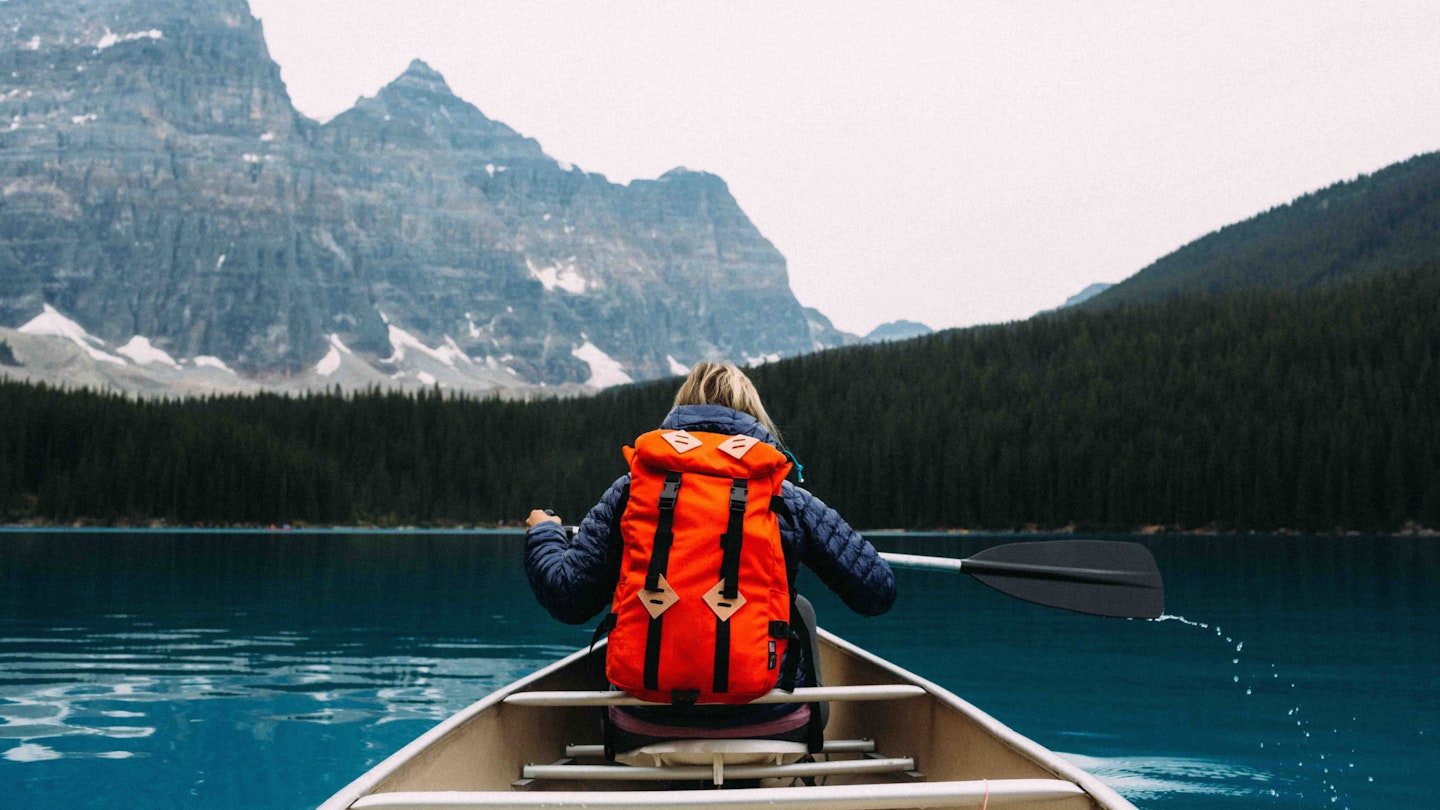
Your shoes and day bag can make or break your trip © Peter Amend / Getty Images / Image Source
So you’re taking the leap. The big trip is booked. There’s nothing standing between you and the unforgettable adventure that’s about to unfold…except, you still have to pack.
Wondering where to start? Avoid backache, ripped zips and other packing nightmares with our essential backpacking packing list.
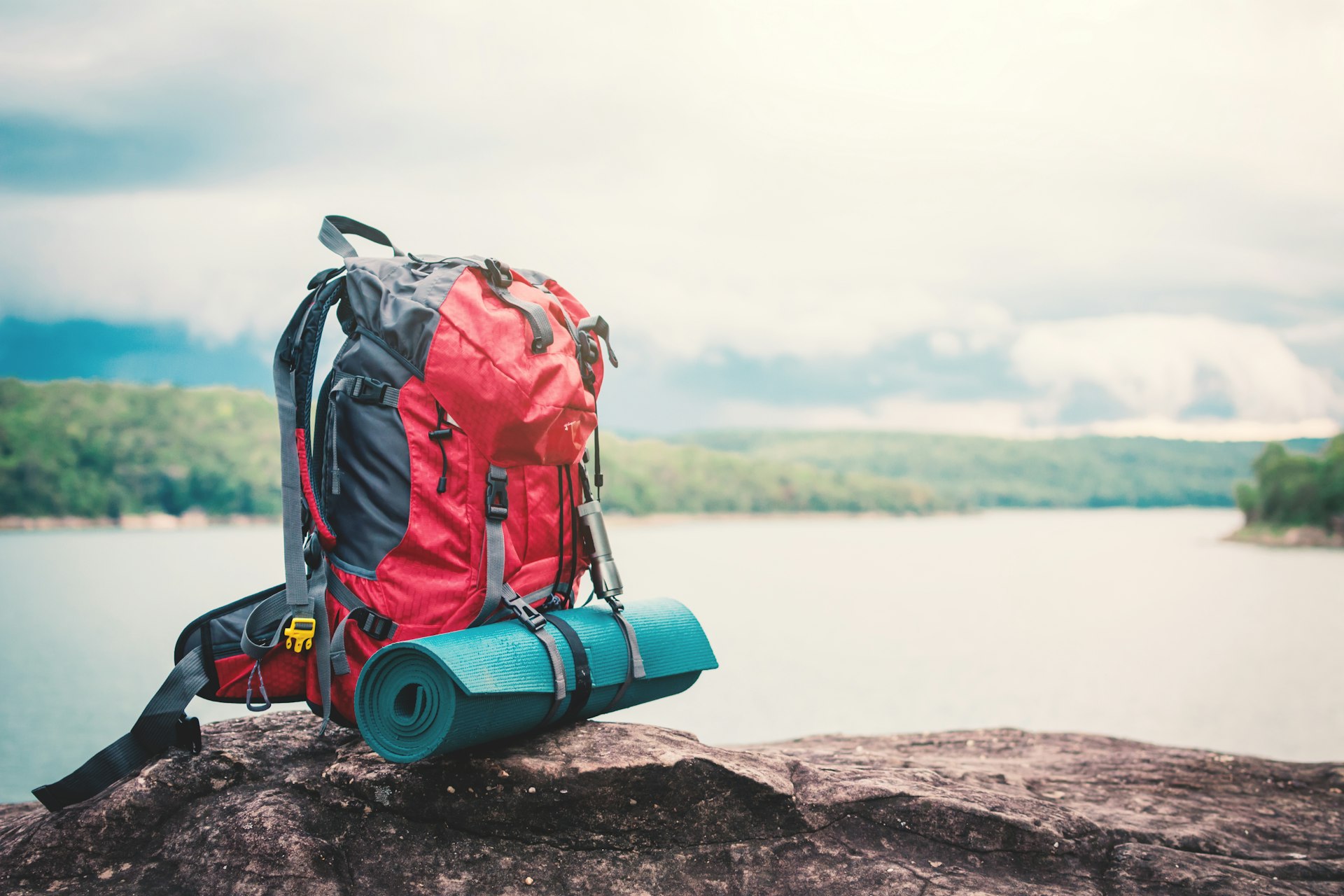
How to pick the right backpack
Before you decide what to take, you need to determine what to take it in. Choosing a backpack can be confusing, and the web is rife with advice from people who insist you can travel for six months with nothing but a postage-stamp-sized carry-on, while others woefully recall their experience of lugging a 90-liter bag around the world. Newbie travelers are often tempted to take everything but the kitchen sink, but limiting your backpack space is the best way to avoid this common pitfall.
The sweet spot lies somewhere in the middle: a backpack between 40-70L is fine for a long-term trip – the trick is not to stuff it full.
Try the Kelty Redwing 50 for men or women. It has an internal frame, fits carry-on requirements for most major and regional airlines, is extremely durable and performs well whether you're out on the trails or jumping from hostel to hostel.
Remember to also take a good-quality day bag that can be kept inside your backpack or used as hand luggage. We like the Osprey ultralight stuff pack . It only weighs three ounces and feels full-featured despite its packable design.
How to pack for a big trip - tips from experienced travelers
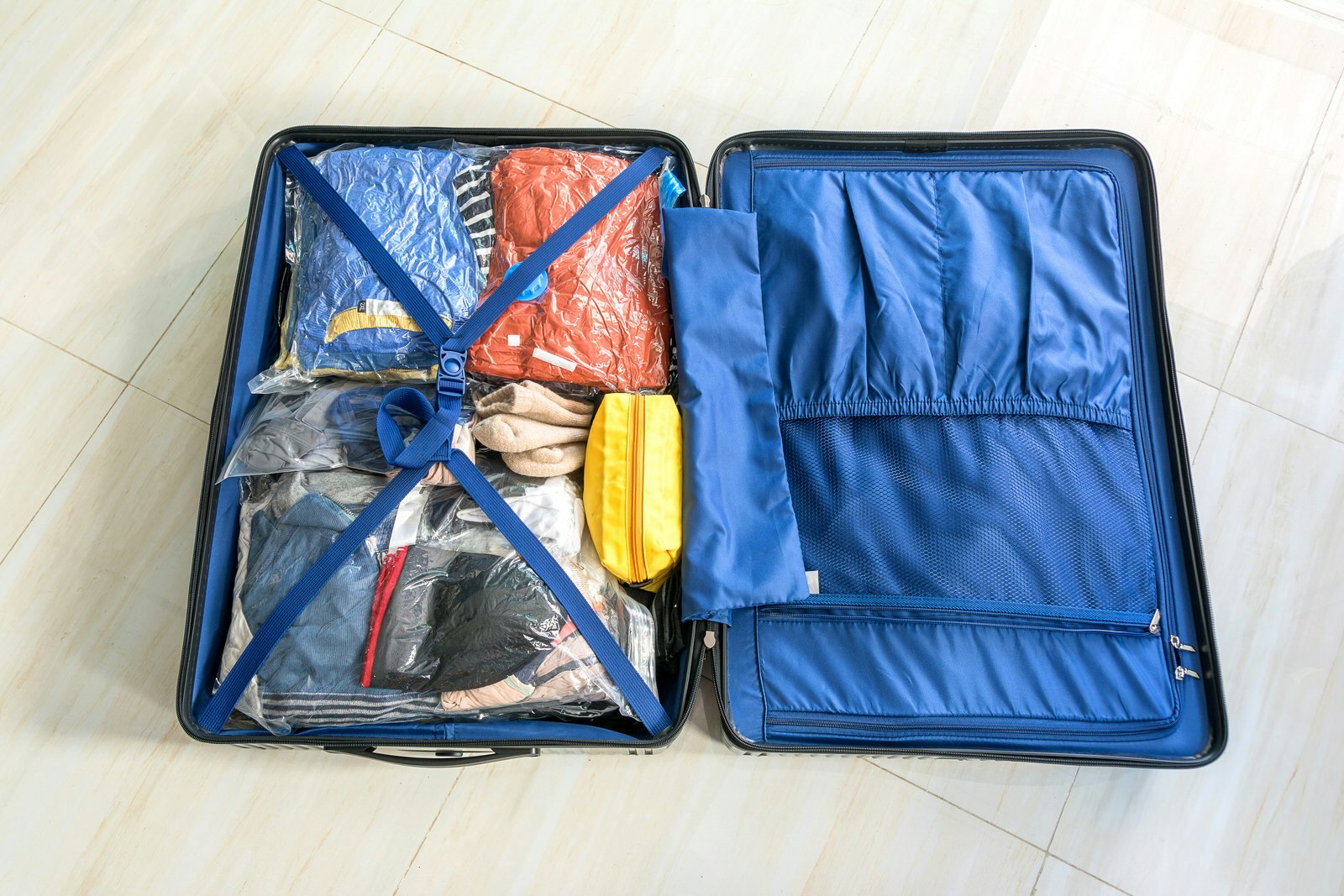
Packing cubes and compression sacks
Stuffing socks in shoes will only get you so far. Believe me – compression sacks are your new best friends. Besides saving considerable space, they can protect clothing from grime and spillages, as well as separate dirty laundry from the holy grail of backpacker apparel: clean underwear. Use packing cubes to store individual outfits if you’re going somewhere where it will be difficult to sift through the contents of your backpack – this can be particularly useful when camping or staying in cramped conditions such as a sailboat or camper van.
For the ultimate in packing cubes try Shake Pak . These cubes are built to last through weeks on the road.
Keep toiletries in a good quality transparent waterproof bag to contain shampoo explosions and allow for easy access. Like these TSA-approved toiletry bags .

Always pack versatile clothing
We know this sounds like jargon, but truly the best way to look half decent on the road is to pack a “capsule wardrobe”. Sticking to a neutral color scheme and packing plenty of layers means you can mix and match outfits easily, conjuring seemingly countless looks for a variety of climates out of a few tops and some cleverly chosen accessories.
A large statement scarf or sarong is a great multipurpose item: it keeps you cozy, doubles as a cushion for long bus journeys and can cover your shoulders when visiting sacred temples. The Mer Sea travel wrap comes with its own bag and is so versatile it can be cozy or fancy whenever you need it to be.
Travel gear reviews: clothing to take on the elements

Health essentials, COVID-19 and creature comforts
You know you need a first-aid kit. But be strategic: unless you’re going somewhere so remote that you’ll have no access to key medicines or supplies, you probably don’t need 12 packs of painkillers and a liter of liquid skin glue. A pack of high-quality face masks, bandaids and blister patches, (a reasonable amount of) painkillers, antiseptic cream, antihistamine, travel sickness tablets and prescription medications/contraceptives should suffice, along with your soon-to-be-treasured anti-diarrhea pills and laxatives. For the sake of your mental health, pack earplugs, an eye mask and if you know you struggle to nod off, a calming lavender essential oil roll-on.
Even though you're likely going to be outside a lot, you still will need to know the local advisories and regulations regarding COVID-19 safety. What vaccines will you need? Do you need test results and if so, what kind of tests qualify and in what time window? Will you have to quarantine upon arrival? With regulations changing daily, start at Lonely Planet's Health Hub for up-to-the-minute pandemic travel advisories.
These earplugs are reusable and moldable so they work great in lots of different ears.
This silk eye mask from Slip helps fight fine lines and wrinkles all while ensuring proper sleep on long-haul flights.
And for non-GMO-verified essential oil, try NOW organic Lavender calming blend and rest easy.
8 tips to stay healthy on vacation from celebrity trainer Harley Pasternak
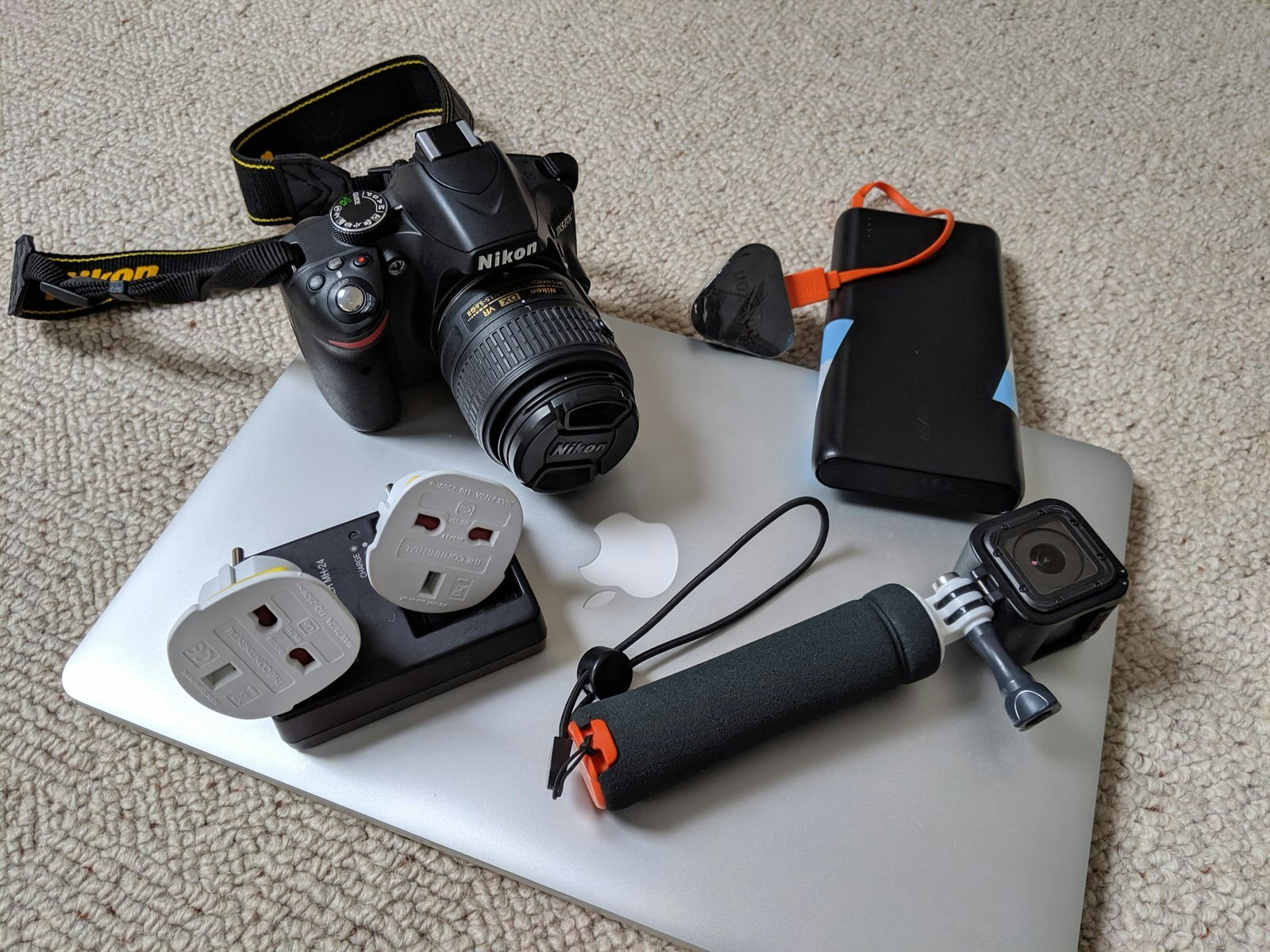
Tech and entertainment
Digital nomad or not, chances are you’ll be taking some tech. Even if you’re flying by the seat of your smartphone, you’ll need a charger, a global adaptor and a portable battery (a life-saver if you’re dependent on mapping apps). Throw in a laptop, camera, GoPro, drone and Kindle and your inventory suddenly got a whole lot more valuable and heavier. Keep tech in hand luggage wherever possible and, to echo the station announcements you’ll soon be hearing everywhere, never leave your bag unattended.
Do some digital packing too: download crucial apps before you leave home to avoid flaky wifi or expensive roaming charges. If you’re a paperback fan (or love a good guidebook) don’t take more than one or two – you can switch them at book swaps as you go.
Lonely Planet's ultimate digital nomad packing list
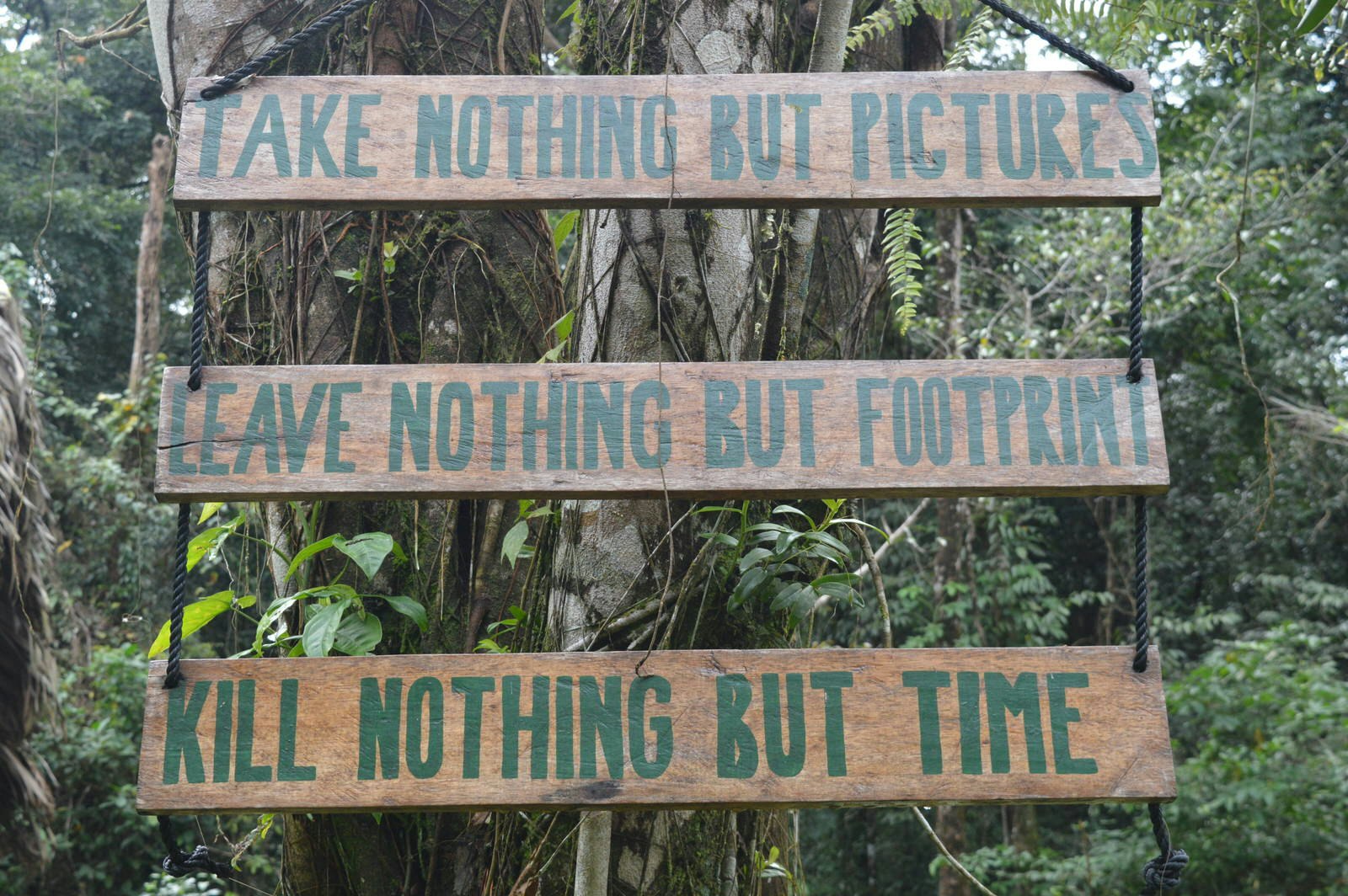
Eco-friendly kit
It’s 2022. The “take only pictures, leave only footprints” backpacker mantra is no longer enough. Pack a reusable water bottle (with an in-built filter if necessary) like the LifeStraw Go . Look for packaging-free or refillable toiletries. Bring lightweight bamboo straws and cutlery like this travel cutlery set that comes in a neat roll with a brush for cleaning. Finally, don't forget environmentally-friendly sunscreen like Thinksport SPF 50+ which is safe for coral reefs and top-rated by the EWG.
As refreshing as they are, even biodegradable wet wipes can clog sewage systems, particularly in less developed countries; take a flannel or muslin cloth for thorough face washing. Zero-waste sanitary products (reusable towels, menstrual cups or period-friendly underwear) will minimize costs and use less backpack space too.
Into the green: eight destinations for an eco-friendly escape
Padlocks and backup documents
A mini padlock on your backpack zippers will help deter anyone from pinching whatever you last stuffed into the top of your bag, while larger ones are handy for hostel lockers (they usually sell them at an inflated price if you’re stuck). It’s worth taking hard photocopies of your passport, driving license and insurance documents, or at least a USB stick with the digital versions, in case any get lost or stolen.
Still not sure what to pack? Read our ultimate guide to packing like a pro before you go as well!
What not to pack
- Sleeping bag : most hostels ban them anyway due to their bedbug spreading properties, providing clean sheets instead. If you’re fussy about bedding, bring a silk sleeping bag liner – but this is totally optional
- Hairdryer and high heels: embrace the laid back look – you can always pop to a salon or buy a cheap pair of snazzy shoes if you have an impromptu glamorous night out
- Neck pillow: unless it’s inflatable (others add too much bulk). And even then, is it really worth it?
- Anything of true sentimental value: because insurance can’t replace the irreplaceable
- A standard towel: or so say... most travelers. Four months of carting around a smelly, useless microfiber towel taught me to always take one just in case – which takes us to this article’s caveat: everyone’s different. If you really want to take something, just take it. You’ll soon find out if it was the right decision!
You might also like: The expert's ultimate backpacking bucket list These destinations are the world's top backpacking hotspots What is backpacking? The eternal travel debate
This article was first published October 2019 and updated May 2022
Explore related stories

Budget Travel
Apr 27, 2024 • 6 min read
It may be Germany's most expensive city but there are still plenty of ways to visit Munich on a budget if you know how.
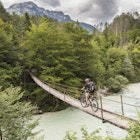
Apr 27, 2024 • 5 min read

Apr 27, 2024 • 17 min read

Apr 26, 2024 • 6 min read

Apr 26, 2024 • 7 min read

Apr 27, 2024 • 4 min read
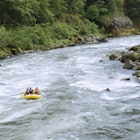
Apr 27, 2024 • 8 min read

Apr 26, 2024 • 15 min read
- Get ready for adventure!
- Live Advice
- Get in Touch!
- Getting a Passport for Travel
- Backpacking Travel Planning
- Do You Need a Visa?
- What Vaccinations to Get?
- How to Find Cheap Flights
- Get Travel Insurance
- Preparing for Backpacking
- Packing Your Backpack
- Before Leaving Home
- The Journey Begins!
- Backpacking Packing List
- How to Pack a Backpack Correctly
- Travel Survival Kit
- Party Places
- Staying Safe and Healthy
- Money and Finances
- Finding Work on the Road
- How to Be a Good Traveler
- Vagabonding
- Backpacking Stories

What to Take Backpacking
T his backpacking packing list is meant to serve you as a loose outline for long-term budget travel. You’ll need to customize it here and there for the geography, climate, and your own desires.
Also, this packing list is for backpacking travel …not for walking the Appalachian Trail. The old mantra of packing light is a cliché, and you have heard it so many times before, but really — DO NOT TAKE TOO MUCH!
Packing too heavy will literally dictate and shape your entire trip experience, and not in a good way. Little did I realize I would end up giving away and throwing out lots of things I brought along on my first backpacking trip!
Note: Any links in red are affiliate links and support this site.
Rule #1 for Your Backpacking Packing List
Don’t overpack!
I was always taught in the Army to be prepared. Unfortunately, extreme preparation equals extreme weight.
Your pack will inevitably grow as you travel. Gifts, souvenirs, new clothing purchases — expect to be going home with more than you brought along.
Depending on where you are traveling, chances are you can purchase many of the items as you need them at your destinations, anyway. And buying locally may be significantly cheaper, too!
Why haul things thousands of miles from home and risk getting them broken, stolen, or lost, when you can buy local and help an economy that probably needs it as well?
Packing Tips for Long-Term Backpacking
- Keep in mind that whatever you bring may be stolen or broken at any time.
- Unless you are going to the middle of the desert, many items will be available at your destination. Buy local.
- There is a direct ratio between weight and how much you will enjoy your trip.
- You will not need as many distractions as you normally do at home because you will be in a new world!
Here are some examples to get your mind working in the right direction. Please use the following backpacking packing list as only a means for ideas. Everyone has different needs and desires on the road.
Disclosure: This packing list contains Amazon affiliate links (red) for a few of the small-but-reliable items I carry and use. You can save time, read reviews, and help this site out by purchasing via the red links!
Backpacking First Aid Kit
I ended up using fewer than half of the first aid items that I brought on my first backpacking trip to Southeast Asia. Out of a box of bandages that I brought along, I consumed a grand total of three.
Instead of trying to prepare for every emergency, take only a few of the very common basics and then purchase whatever you need. Bring several aspirin instead of the whole bottle, three bandages instead of the box — you get the idea.
Helping others is technically not your responsibility, but it does feel good to give someone a motion-sickness pill before they get sick all over everything.
Tip: Don’t buy one of the generic, pre-packed first aid kits. Build your own with stuff specific for your needs!
Here are some basic first aid Items that I found very valuable:
- Anti-Diarrhea Pills: If you eat the local food, Traveler’s diarrhea is almost inevitable at some point. Blame food handling or just the bacterial differences between continents, it happens. Although bananas and white rice do wonders for soothing a bad stomach, you may need medicine for long journeys or times when toilet breaks aren’t convenient (i.e., 10-hour bus rides.) Brands containing loperamide are the most effective. Remember: only take loperamide during long moves or emergencies, otherwise use food — bananas work particularly well — to control your stomach.
- Tweezers: Tweezers have a multitude of uses including: popping blisters, removing ticks and splinters, etc. Buy the super-pointy medical kind but don’t try to bring them on the plane in your carry-on bag!
- Alcohol Prep Pads: Individually wrapped prep pads are a convenient way of disinfecting skin, cleaning your tweezers above, treating insect bites, etc. I take a lot of these.
- Motion Sickness Pills: Even if you don’t get motion sickness very often, offer pills to other travelers that do so they don’t puke on your bus! The regular version of Dramamine can also double as an emergency sleeping pill because of the drowsy side effects.
- Bandages: Band-Aids, plasters, whatever you want to call them, you are going to need a few. You can also use bandages to put on hot spots to prevent blisters.
- Ibuprofen: Ibuprofen (branded in the U.S. as Advil) is good to stop swelling, muscle pains from long treks, and hangovers after Full Moon Parties .
- Acetaminophen: Branded as Tylenol in the U.S., acetaminophen is more effective at lowering fevers than ibuprofen. It also works for hangovers.
- Benadryl Pills: Benadryl’s active ingredient is diphenhydramine. Even if you aren’t allergic to much at home, it is very possible that you will come into contact with plants or new materials that will give you a rash. If you’re stung or bitten by something new (e.g., a scorpion) pop a couple pills immediately to counter the venom.
- Multivitamins: Vitamins are optional, but possibly useful to keep your immune system happy for public transportation and in case you can’t maintain proper nutrition on a local diet.
- Hydration Sachets: Carry a few or many hydration sachets that contain electrolytes. It is inevitable at some point that either yourself or a fellow traveler will become dehydrated or suffer from heat exhaustion. You can become dehydrated in extreme cold, too!
Remember to bring enough of your prescription medication to last the trip. Try to keep medicine in the original, labeled bottles to avoid raising the eyebrows of people in uniform, and keep a copy of the prescription with all the pills.
If you wear contacts, bring your glasses and prescription along as well for emergency situations.For more details about medicine and pills you might want to carry, read about what medicine to include in your travel first aid kit .
- Ultralight travelers adhere to the wash-one, wear-one theory and wash their laundry in the sink often.
- Swimming shorts that are not too colorfully obnoxious can double as your second pair of shorts.
- Socks (I no longer carry any) and underwear can be washed and dried quickly in the sink.
- Choose polyester, rayon, nylon, and other materials over cotton whenever possible because they dry faster. They also tend to stink less when drenched in sweat.
- Blue jeans are heavy and dry slowly; leave them behind if you only plan to visit tropical locations (i.e., Southeast Asia).
- Be just a tad more conservative in choosing messages on your shirts. It may be easier to offend local people than you realize.
- You’ll need one pair of lightweight trousers for places where shorts aren’t acceptable (e.g., when visiting temples ). Sometimes wearing a sarong to go inside the temple will work, too.
- One good shirt can be included for meet-ups or party nights, but make sure it can survive without a proper ironing!
- Tans, browns, and earth colors are always a good bet because they do not show dirt and stains, don’t attract so many mozzies and insects , and you won’t be as easily spotted by people that make a living hunting tourists.
- Bring a thin, light rain jacket that can also be used as a cover-up on very cold air-conditioned bus rides or at night if the temperature drops.
- Laundry is regularly lost, damaged, stained, and color-bled in local laundromats. Don’t pack your vintage [insert dead musician name] tour t-shirt!
Leave that $300 Swiss Army watch at home! The same applies to smartwatches. You do not want to attract attention to yourself by wearing expensive or flashy looking bracelets, rings, or necklaces.
Wearing bling will definitely get you higher prices from merchants or maybe worse from unscrupulous individuals!
A good, cheap watch with a light and an alarm is really all that you need — or just carry a smartphone.
Some solo woman travelers opt to bring a fake gold wedding band along to wear in countries to take some pressure off the advances from locals. Being “married” is hardly a get-out-of-jail card; the local men in many countries do not care. Use your own judgment.
Shoes are heavy and consume a lot of room. One pair of “proper” shoes and a set of flip-flops are all you really need on your backpacking packing list.
The shoes should be good enough for trekking and scrambling and be dark enough to wear out in case you go to a restaurant or club that requires proper shoes. Your flip-flops will work for everything else.
Leave the $60 Teva sandals at home, take cheap flip-flops or buy some locally! In Southeast Asia, shoes have to be left outside when you enter many places, and it is very common to have them disappear if someone was needing an upgrade.
If you bring the athletic-wear trend with you from home, carry some powder or get inserts to keep your running shoes from stinking up the hostel. They will eventually begin to smell (bacteria thrives in tropical heat).
Travel Toiletries
- Liquids are heavy, so bring small bottles of everything. You can team up with other travelers to buy full-sized bottles locally, then refill your small bottles. Refill your bottles when you stay somewhere that provides toiletries.
- Branded travel-size bottles are a rip off. Buy the full-size equivalents and then fill small bottles. At least you’ll have more left at home to refill before your next trip.
- Put all liquid items into a plastic bag and then into a waterproof toiletries bag . Airplane pressure changes can make them ooze all over everything. Even the fancy, silicone, overpriced travel bottles are guaranteed to eventually leak.
- Don’t pack glass bottles.
- Shampoo can double as soap and also laundry detergent in a pinch if you choose a clear one that is “regular” or “normal” rather than specific to a hair type. After years of hearing travelers talk about it, I started using Dr. Bronners’ liquid castile. It’s mostly non-toxic, so you can use it to disinfect the toothbrush, wash clothes, etc.
- Take anti-bacterial soap (tea tree oil is good) to keep bug bites and small scrapes in check.
- For men, the Mach 3 razor is popular all over the world, and blades are usually easy to find. Otherwise, finding replacement blades for other razors is a matter of luck. Soap or shampoo can double as shaving cream if you want to eliminate one more thing from your bag.
- Any body wash or shampoo that smells sweet or fruity will make you an insect’s dream come true.
- Individual face wipes or handy wipes are very useful for times when you have no access to water.
- Pack hand sanitizer; you’ll rarely find soap or even water before eating in local restaurants or at street stalls.
- Bring a small, non-breakable camping mirror because many cheap bungalows and guest houses do not have one in the bathroom. I switched to using a small, signal/survival mirror .
Miscellaneous Items to Pack
- Book: You need a distraction for inevitable delays. Just bring one, it can be traded with other travelers or in bookshops for something new. If it’s new, leave the price tag on it for a bargaining advantage later. Put a rubber band around the book to keep the cover from being bent inside your bag. Although I’m still carrying at least one book at all times, my Kindle Paperwhite is my best friend for saving weight from numerous books.
- Journal: I use a journal for recording the personal aspects of my adventures, of course. Having a real journal as an offline way to capture thoughts is a blessing. You’ll really thank yourself later. Get a good one. I prefer the Paperblanks journals (they are indestructible and have all the features) or Peter Pauper Press journals .
- Small Notepad: Separate from your journal to keep in a pocket for recording other travelers’ emails and also writing bus schedules, directions, and things you don’t need in forever in your journal.
- Sink Stopper: For doing laundry or washing small items. Get the big floppy universal kind — they’re only around $2.
- Alarm Clock: If your watch alarm isn’t loud enough, get a small travel alarm to help you avoid running to catch early buses and trains. Obviously, a smartphone, if you choose to carry one, will do this for you.
- Toilet Paper: Take it off the cardboard roll so it takes up less space. You will definitely need this in all parts of Asia unless you plan to “go native” and wipe with your left hand. Put it inside something waterproof.
- Anti-bacterial Hand Gel: Public transportation and airports are full of sick people. Also, a majority of places in Asia will not have ways to wash your hands after using the toilets.
- Sewing Kit: Good for field repairs. Stick some fishing line in it for making serious backpack or shoe repairs. The safety pins are good for keeping things together and your clothes on the dry-line when it’s windy.
- Clothesline: Parachute cord or military 550 cord is available everywhere now. It’s light and works great. Use for hanging up laundry, fixing stuff, and lots of other things. If you need smaller threads, you can dissect it for the nylon inside.
- Torch: Flashlight, LED, headlamp, whatever you decide to call it, bring one that is reliable, water-resistant, and uses regular batteries (nothing proprietary; AA is the easiest to find). I carry this awesome Fenix flashlight for when my headtorch isn’t handy. It’s tiny enough to keep in pocket, indestructible, and produces 130 lumens with just a single AA. (tip: invest in a single lithium AA battery and it will last the whole trip!)
- Sleep Sheet: Silk is lighter and protects you better than cotton — bedbugs can still bite you through cotton. This is invaluable for dirty beds and to keep warm at night. It should be wide enough for two. They are expensive, but I use Jag Bags from New Zealand, now part of TerreVistaTrails (get 12 percent off). My first Endura silk sleep sheet lasted eight years of heavy use; invest in a good one.
- Hat: It doesn’t have to be stylish or Kentucky-Derby-quality, just something to keep the sun off while on the beach or in the field. Comes in handy to sleep under, too. A bandanna can substitute.
- Duct Tape: No explanation needed for this one. Break a piece off of a pencil and wrap some duct tape around it to save room. You can also wrap tape around a cigarette lighter.
- Compass: You do not need a lensatic or serious military one, just something small and simple for knowing which direction to turn at an intersection when you are looking at a map. The small round ones with the pin are really cheap but work good enough. I have to replace mine every year.
- Knife: You don’t need a 37-option Swiss Army knife, just something small, light, and sharp for cutting tape, cord, fruit, etc. I like a non-folding knife because it’s better for opening coconuts and spearing things. Knives are adored by thieves; don’t spend too much. This is my favorite travel knife so far . It’s perfect for my needs. I replace the heavy plastic sheath with a cheap, nylon one to save a few grams.
- Some Sort of Waterproof bag: Put your electronics and journal inside of it in your daybag in case you are caught in the rain. It can be used temporarily for many other things as well.
- Guidebook: Or, even better, go without! Only buy and carry the one for your first destination . Guidebooks can also be obtained from travelers or shops for cheap once you arrive. Feel free to rip out huge sections for places you will never visit to save weight and room. Alternatively, you can also save PDFs to your smartphone. Just make sure you have an offline option for times when you don’t have internet access.
- Sunscreen: Locals probably don’t use it, and it will be expensive or expired. I use Badger, a natural brand, because of the better ingredients that don’t break out skin.
- Lip balm: It’s hard to find locally sometimes and a must for dry places; will help on flights, too. Don’t get the round kind that requires a dirty finger to be stuck in it!
- Insect Repellent: You can buy small bottles of 100-percent DEET to save weight, just be careful with it — this stuff is bad for you. Only spray on clothing, screens, mosquito nets, etc
- Condoms: Brands are extremely limited and the local ones have a failure rate that is often frightening due to the hot weather and poor storage techniques. Sizes also vary by region in the world [insert joke here], it’s true.
- Earplugs: Get the small kind that you stuff in your ears. They come with a case to keep them clean. Good for noisy rooms above pubs and bus rides. Or you can just keep your mp3 player charged.
- Sunglasses: Don’t take anything that costs over $10! They will most likely get broken or lost along the way. You can almost always find cheap sunglasses at the destination.
- Batteries: They are heavy so just plan to buy as you need them, unless something requires proprietary batteries. Try to choose gear and gadgets that use the same battery type. The easiest battery type to find on the road is “AA.” Lithium batteries weigh less and last longer. Remember to put them in the carry-on bag; they aren’t allowed in your checked luggage.
One Luxury Item
Obsessing over every gram can quickly take over thinking as you try not to overpack. I actually own a digital scale and weigh everything, even empty containers.
But here’s a radical idea: you may want to be happy and comfortable on the trip, too! Creating your backpacking packing list is a matter of choosing priorities.
After all the weight-saving efforts, adding something you really don’t need may seen counterproductive, but the morale boost can go a long way on the road.
For example, I personally add a silky, satin pillowcase. It eliminates the variable of what my face feels on the many guesthouse beds, and it reminds me of home. A silk pillowcase weighs less than one t-shirt.
I’ve seen travelers carry teddy bears, their favorite blankets, neck pillows for flights, and even full-size feather pillows from home. No judging!
Carry whatever brings you a little happiness at the end of a long day on the road.
Optional Luxuries
Here are some things that you can live without while backpacking, but they are nice to have along sometimes!
- Sharpie Marker: Use it for marking gear, leaving messages on walls in hostels, or to make a sign if you run out of money! No, please don’t beg to fund your trip.
- Headphones Splitter: You will be surprised how many times you will be sitting with a new friend on a bus, train, or on the beach and wish that you could share the same music together.
- Chem Lights: Glow sticks, light sticks, whatever you want to call them. Can be used as a lifesaving light source if you are caving and your light fails. Also can work as an emergency signal in the dark, and might even come in handy at a rave or party.
- Storage Devices: Good for grabbing pics quickly from other travelers, as well as mp3s, and maybe backing up your own pictures on the fly. USB memory sticks, SD cards, etc, are smaller and lighter than an actual HDD.
- Lithium Battery / Power Pack: Although power packs are relatively heavy, you may want the ability to charge your phone safely, especially if you depend on it for photos, navigation, and communication. I prefer the durable-and-waterproof chargers from RavPower . Note: many airlines forbid large lithium batteries in checked luggage; you’ll have to carry it on board.
- Whistle: Carry in your pocket for peace of mind when walking dark beaches and streets. It gets attention, which is exactly what an attacker does not want.
- Bandana: If you’re not worried about being stylish, the army ones are large enough to use as a sweat rag, emergency bandage, cleanup rag, filter over your mouth for dusty roads — you name it.
- Travel Towel: The small ones roll up very small. It may take a while, but they will dry your entire body. Travel towels are not good for running down the hostel hallway from the shower because it won’t cover your bum! Be cautious: travel towels are expensive and tend to get stolen off of lines easily.
- Item for Hiding Emergency Cash: Don’t buy a false rock. Get creative and make your own from some common item like a toiletry or makeup container. Fold up currency and hide it inside, then put it in your regular backpack in an unexpected place (toilet kit, maybe?) in case your daybag is lost or stolen. There are many creative ways to hide money while traveling .
- Additional Passport Photos: Will save money, time, and headache when you cross borders and apply for visas on arrival. You can get an entire sheet made at printing shops for cheap.
What NOT to Pack for Backpacking Travel
- Travel Pillow: An empty pillow case can be stuffed with laundry or whatever to form an instant pillow rather than carrying a bulky travel pillow. You can also put it around dodgey pillows that are provided in guest houses to keep the bugs out of your hair.
- Camping Gear: You don’t need camping gear unless a big part of your stays will be camping. Gear can be bought or hired at almost all national parks or from other travelers that are finished with their camping.
- Camping Stove: Expensive, takes up room, and it can be difficult to fly with the fuel, or to buy it at your destination. Even on an extended trek, your guide will provide a way to cook food.
- Snorkel Gear: You can hire it at your destination for cheap on days that you want to use it.
- Hammock: These will be available in the islands to use or to buy for cheaper than they are available in the West.
- Mosquito Coils: In any area that has a mozzie problem, you will be able to buy coils cheaper than at home.
- Weapon: Even pepper spray will only get you busted at some checkpoint or screening when you least expect. Don’t risk it. Many destinations aren’t even as dangerous statistically as your hometown!
- Electronic Language Translator: How are these things even still a thing? Forget about it. Use your phone.
- GPS: Maybe tempting, but leave this expensive gadget at home. They eat batteries and sometimes part of the fun is getting lost anyways!
- Mosquito Net: In any troublesome mozzie area these will be available to use for free, or you can buy for a fraction of the cost in the Western world.
- Travel Underwear: Usually expensive and makes very little difference anyways. Do you really want to squeeze a couple extra days from those undies you are wearing?
- Satellite Phone: Not unless you’ll be summiting something big in the Himalayas.
As usual, this backpacking packing list is just a suggestion based on my experiences as a long-term backpacker. You will have other comfort requirements and needs, I am sure.
Remember the basics, and before you pack anything, ask yourself these three questions:
- Can I live without it?
- Will I cry if it gets stolen tomorrow?
- Can I buy it locally?
Note: Before you send bewildered comments, please realize that this backpacking packing list is for international budget travel , not American “backpacking” in the woods on the Appalachian Trail, PCT, etc.
The red links on this post are Amazon affiliate links!
Startbackpacking Team
Greg Rodgers escaped Corporate America and has been a wandering travel writer since 2006. Check out more on his blog: www.vagabondinglife.com.
Originally Published on 5 February 2009


35 Top Backpacking Packing List Items for 2024 + What NOT to Bring

Whether you’re planning on living out of your backpack throughout Europe during a gap year or doing a summer stint in Asia, packing for a long backpacking trip can be tricky.
You’ll want your pack to be as lightweight as possible while also bringing along everything you’ll need for your travels.
Here’s my list of must-haves and useful accessories for the ultimate backpacking adventure. Plus, I also include some tips on what to wear , what NOT to bring, and answers to top backpacking FAQs.
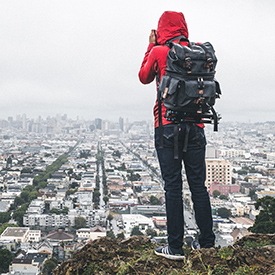
Backpacking Packing List – 35 Essentials
1. backpack.
Your backpack is obviously the absolute most crucial piece of backpacking equipment. It should be lightweight, properly fitted, spacious enough for all of your gear, but compact enough not to be too cumbersome. If your backpack isn’t fitted correctly, it will distribute weight extremely uncomfortably (and unsafely) on your back and shoulders, which can cause long-term problems and short-term misery during your trip (trust me – I’ve only just healed from a backpacking injury sustained because I borrowed a pack that didn’t fit my long torso).
If it’s not waterproof, you run the risk of your items getting wet. Why is this a big deal? Because you’ll have little to no time to dry those items during the time you’re stopped and camped, and you can’t sleep through the cold night in wet gear and without dry protection from the elements. Even 60-degree nights can feel like you’re in the Arctic if you’re soggy, and that’s dangerous!

View on Amazon.com ➜
2. Universal Travel Adapter
This device is something worth investing in for any world traveler, and you’ll absolutely need one if you plan to charge any electronics practically anywhere outside the US. A quality adapter is key because super cheap adapters tend to be glitchy and can result in damage to your electronics. This one comes with surge protection via a safety fuse and it has a built-in spare. It’s also backed by a lifetime replacement guarantee.
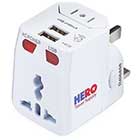
3. Trekking Poles
If a lot of your journey is on stable flat ground, then you may not need trekking poles. But for any long journeys or hiking – these will be very supportive and help to maintain your balance. They’re great for uphill, downhill, or unsteady terrain. We love that they’re foldable and collapse to a small, plus it has attachments for gravel, mud, snow, and rock. Your joints will thank you later!

4. Quick-Dry Travel Towel
This one is a must. Regular towels take forever to dry and weigh too much. You don’t want to be hiking around with fluffy, bulky hotel towels or even worse, not have one at all. This one dries 10x faster than cotton and is super multi-purposeful – drying rag, sweat bandana, packing cushion for delicate items, cover for dirty seats on public transit, etc.

5. Mosquito-Repellent Wristbands
Mosquitos are a relentless nuisance, especially for campers and backpackers. Mosquito-borne illnesses still exist in many parts of the world, and it’s better to be safe than sorry. We use these deet-free wristbands that are non-toxic, safe for kids, and use citronella to deter pests. It’s nice to wear a couple of bracelets rather than spray and respray intense fumes all day.
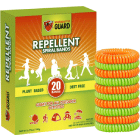
6. Travel Insurance for Backpacking
Before you start backpacking around the world, one of the smartest things you can do is get travel insurance. It’s more affordable than most things in your artillery, and accidents happen, especially out in the wild! Insurance will also cover you against common travel concerns like baggage loss, theft, delayed flights, hospital bills, and even total trip cancellation.
We use Faye because they have unique plans for extreme sports and adventure, vacation rental protection, pet care, and more. A simple medivac to a hospital can cost $8-35K+, and that’s before receiving medical treatment! Also, keep in mind that your domestic provider generally doesn’t follow you overseas. Better to be safe than paying out-of-pocket.

Get a quote in less than 60 seconds with Faye ➜
7. Windproof Travel Umbrella
During your backpacking adventure, you’re sure to encounter at least a few rainy days. Be prepared with this compact, windproof umbrella that can withstand the weather even during those intense thunderstorms. It also comes with a convenient carrying case that allows you to store your wet umbrella without getting surrounding items in your backpack wet.
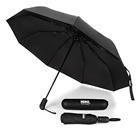
8. Lipstick-Sized Portable Charger
A power bank will be useful to keep your devices fully charged, even when you’re on-the-go. Even if you’re trying to unplug and get offline, it can charge your camera or keep your phone alive as a backup for emergencies. You never know when you’ll need to call for help, use the GPS, or simply take a picture of the beauty that surrounds you!

9. Convertible Hiking Pants
Whether you’re hotel hopping or embracing the great outdoors, hiking is sure to be one of your activities. These pants are your ideal dress-code because they are convertible. The longer version has temperature control to keep your body heat regulated. But if the pant legs get muddy or wet, you can simply unzip and remove them to reveal lightweight shorts.

10. Water Bottle with a Built-in Filter
What’s more important than having autonomy over your water supply? While something like the Brita is great for noticeably improving the taste of your water, the Grayl is your best option for being on the road. You can fill it up in towns like Italy or public water spouts (or even rivers if you need!) since it filters out harmful bacteria like E. coli, viruses like Hepatitis A., microplastics, sediment, and more. It’s a small investment that may save your life.

11. Neck Wallet
Especially when you’re backpacking, staying at hostels and often on the move, it’s important to have all of your important items safely tucked away and well organized. A neck wallet makes your credit cards, passport, and other important documents easily accessible while keeping them inaccessible from pickpockets.
Available on HeroTravelSupply.com with an exclusive 15% discount using the coupon code “HERO” .

Or view on Amazon.com ➜
12. Emergency Paracord & Pocket-knife
This nifty invention is essential whenever venturing into the wild. It’s your perfect all-in-one tool since it has a pocket knife, 12-foot-long paracord, whistle, compass, and fire starter. It takes up virtually no space and can be worn conveniently as a wristband. I wouldn’t go backpacking without one.

13. Camping Tent
Weather permitting, camping is a great way to experience a new place (and save money). In countries throughout the world, campgrounds are available, sometimes without reservation.
If you’re planning on camping, bring along a lightweight, weatherproof tent and other gear if necessary. When I say “lightweight,” I really mean lightweight. Though it may be a little more expensive, opting for the feather-light sleeping bag rated to keep you warm up to -25 degrees is ALWAYS better than going for a heavier bag. Same goes for tents – backpacking tents are back-savers and well worth the investment. Every single pound counts, especially if you’re going to have to carry any water or cooking supplies with you.

14. Luggage & Tent Locks
If you’re flying abroad to backpack, luggage locks are necessary for your checked bags. This set is TSA-approved so you won’t have to worry about any security hangups. And, not to freak you out… but we’ve had a stranger try to open our tent in the middle of the night at a national park. Now we always secure the inside zipper of our tent with these reliable locks.
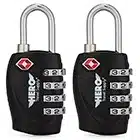
15. Hiking Boots
If you’re planning on doing a lot of walking or hiking on your trip, bring appropriate shoes. It’s a good idea to try on a few options in-store and then spend a few days walking around in them before committing to bringing a pair of shoes on a backpacking trip. These are my go-to hiking shoes and can nearly always be found on my feet or hanging on the outside of my backpack.
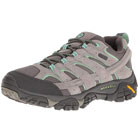
16. First-Aid Kit
Anything can happen while backpacking, and a first-aid kit filled with bandaids and Neosporin will come in handy at some point, no doubt. I’ve had blisters, splinters, scrapes, cuts and burns happen while on the road, and I have thanked my lucky stars for my first aid kit more times to count! You don’t want to risk infection, so play it safe and pack a kit.

17. Jet Lag Relief
For any jet lag you may be suffering from, use this homeopathic remedy. It uses vitamins, herbs, and green tea to fight exhaustion rather than competitors that use overly-stimulating caffeine. Overall, it will make long journeys and layovers significantly easier. I’ve flown with, and without it, there is a palpable difference!

18. Portable Coffee Maker
It could be considered a luxury…unless you NEED your cup of joe in the morning! A portable coffee maker like this one takes you back to the good ole’ days of hand-grinding the beans and brewing them fresh. It will become your new ritual, and there’s nothing that beats a morning java.

19. Packing Cubes
When you’re living out of your backpack and moving from one place to the next, it’s easy for your backpack to get super disorganized. Packing cubes make it simple to organize all of your stuff however you see fit, allowing you to quickly find whatever it is you’re looking for since every cube is labeled. You can throw the smallest one in your daypack to hold your essentials.
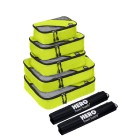
20. Bear-Proof Food Canisters
Bear-proof containers are a priority item for those camping (and it’s actually required in many national parks as well). The BearVault will obviously keep out bears but simultaneously protects against bugs, rodents, moisture, and anything else that could ruin your food or attract danger. It’s super lightweight so you may only want to carry one canister for all your snacks like the picture shown here. This canister was locked in a cage with two hungry bears and survived, so it’s been seriously field tested!

21. Cooling Towel
For any warm destination, these cooling towels are seriously magical! They drop to 20-30 degrees colder than the outside temperature and stay frosty for up to an hour. Simply add water and wring it out, when you need more relief, add more water! It’s easy-peasy, chemical-free, and a game-changer on a hot day.

22. Universal Waterproof Phone Case
Since 3/4th of the world is water, it’s likely that you’ll need a waterproof phone case at some point in your journey. This one seals out any moisture, dirt, or sand to protect your phone from any damage. We use it to film beautiful underwater movies with our phones. Don’t forget to attach a flotation strap so it doesn’t sink or become out of reach while you’re canoeing on foggy lakes, boating, pooling, or snorkeling above sharp coral reefs.
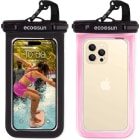
23. Biodegradable Soap
Limiting toiletries is usually my number one issue when packing for a trip. It helps to downsize on bottles by pouring face wash and body wash into smaller containers. My best advice is to bring toiletries that serve many purposes, like this Wilderness Wash. It can be used as shampoo, soap, laundry detergent and dish wash. It’s super concentrated, so one little bottle can last for a few months!

24. Wool Socks
These socks are completely necessary if you’re planning on walking a lot or surviving any sort of cold weather. Wool socks let your feet breathe and keep them at a good temperature. They’re also quick-drying. I like to bring two pairs with me so that on long hiking trips, I can alternate between the two and wash them frequently since they dry overnight.

25. Sleeping Bag
If you’re backpacking through colder areas, definitely invest in a sleeping bag with an appropriate temperature rating. Even warmer climates tend to see severe temperature drops at night, especially if there’s wind, desert, or rain involved. My lightweight sleeping bag liner has become my best friend since it even keeps me comfortable and protected against bedbugs in questionable hostel beds! Just to reiterate: any time you’re backpacking, it’s absolutely crucial to choose the lightest bag possible that still has the right temperature rating. For hotel hoppers, you may also want a backup pair of travel sheets for motels, hostels, planes, trains, and more!
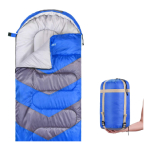
26. Eye Mask & Earplugs
The iconic travel duo, earplugs, and an eye mask. I can’t sleep anywhere without these since the mask is black-out to remove any light, and the earplugs are noise-canceling. On the road, you never know what kind of roommates you’ll get. I’ve had big-time snorers, late-night talkers, and super loud coughers.
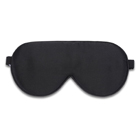
27. Camelbak
If there’s any secondary backpack you want to bring, it’s the Camelbak . When you’re out exploring, this hydration backpack is all you’ll need. It’s minimalist and not huge, but a great size for a 4-5-hour hike or 2-hour bike ride. Some people complain about leaking, but it just needs to be secured from the top until you hear a click. It’s the best hydro pack we’ve ever had!

28. Body Wipes
There will be days in which you won’t have the energy or the option to shower. For days like this, athletic wipes will come in very handy. A wet wipe shower will keep you semi-clean and smelling good (enough)!

29. Activated Charcoal
If you suffer from food poisoning or water-borne illness at any point, activated charcoal will make a huge difference in your recovery. It absorbs harmful toxins and pathogens to speed up your recovery time and minimize discomfort. Anything from gourmet food to tap water could make you sick, especially in a new place where you’re body is adjusting to the local cuisine, so come prepared with this single-ingredient remedy.
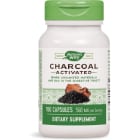
30. Lightweight Cooking Supplies
Not all backpackers will cook their own meals, but the hardcore ones will! If you opt to bring cooking supplies, this lightweight set piles into a single pot, which can be hung by a cord on the outside of your backpack. When it’s all packed together, it’s a little larger than the palm of your hand – perfect for not weighing you down but keeping you equipped with pots, pans, utensils, sponges, and bowls. You may also want to add fuel and stormproof matches.

31. Virtual Private Network (VPN)
You may be unplugging from society (which we totally support), but if you do plan to stream any movies or do work during your odyssey, use a virtual private network. NordVPN adds a layer of protection to your passwords, credit cards, and sensitive data, ensuring hackers do not find vulnerabilities in your network. It also gives you the freedom to surf the web without website censorship which may be present in foreign countries. Super affordable and a major life upgrade (we even use ours at home!)

View NordVPN.com Plans ➜
32. Hanging Toiletry Bag
This bag is the life hack you didn’t know you needed. It hangs on any pole, door, or branch – unfolding to expose 4 giant pockets for all of your toiletries. This shelf-like system will give you a countertop when maybe you have none (and a reason to stay sane since you can maintain your self-care routine!)

33. Biodegradable Toilet Paper
If you’re exploring the backcountry or parts of the world that don’t provide toilet paper in public restrooms (I’m looking at you, Asia), make absolutely sure to bring your own toilet paper. Compostable and biodegradable is recommended. Be sure to check local pack-in-pack-out requirements too, to see if you need to carry out your own… ahem… waste.

34. Female Urination Device
For the ladies, don’t be shy about carrying your own urination device. It may sound a little odd, but you’ll be thankful to have it because you never know how far the nearest bathroom is, or how clean it will be. Many won’t have toilet paper and in some places, it may just be a hole in the ground. This little device allows women the freedom that men enjoy every day, the ability to pee standing up! Just get it, you won’t regret having it.

35. Clothesline
We tend to handwash items when traveling and in places like Europe, Asia, and South America – there isn’t usually an electric dryer available. Get your clothes in the fresh air with this stretchable travel clothesline. It’s very lightweight and you can hang it between two trees, use it indoors like a cruise ship bathroom, string it across hotel balconies, or whatever suits your needs. No more soggy musty towels or clothing, woohoo!

Other packing list items for backpacking
- Travel Sheets
- Dehydrated Food
- Electrolytes
- Kitchen Tools
- Motion Sickness Patches
- Fire Starters
- Tent Stakes
- Outdoor Journal
- Hand & Foot Warmers
- Compression Flight Socks
- Rain Jacket
- Laundry Sack
- Thermal Layers
- Bar Shampoo & Soap
- Feminine Products
- Deodorant Wipes
- Steripod Toothbrush Cover
- Inflatable Pillow
What NOT to bring while backpacking
1. jewelry or valuables.
Leave the diamond necklace and designer wallet behind. Don’t make yourself a target for pickpockets, and ease your mind knowing your important things are safe at home.
2. Extra toiletries
No matter where you’re going, you can usually find what you need locally, toiletry-wise. Bring enough shampoo & body wash to last you a week, then buy as you go to cut down on weight.
Jeans are never comfortable, and are super heavy! Don’t weigh yourself down with denim. Instead, opt for hiking pants or leggings, which are more comfy and take up much less space in your backpack.
4. Bulky towel
Regular bath towels are just too big, and don’t dry fast enough. Bring one of these, and you’ll end up with an overstuffed, smelly backpack.
5. Things you can buy at your destination
Research ahead and find out if you really need to bring that extra deodorant.
6. Too many outfit options/shoes
The weight that you put in your backpack really adds up. A lighter pack will make for a happier trip and happier you.
Unless you’re a digital nomad and you need your computer for work, leave it at home. Download any important documents to Google Drive and work from your phone, if possible.
Cut that weight and get yourself a kindle. Books will seem incredibly heavy in your backpack after a while!
FAQs about Backpacking
1. why shouldn’t i bring cotton clothing.
Cotton clothing takes up more space than clothes made of synthetic fabric. It also takes longer to dry, and traps sweat while you’re wearing it. Opt for dry fit clothing when possible.
2. How do I choose the right backpacking gear?
Do a lot of research, check out travel blogs, read reviews, and ask advice from salespeople at stores! The folks at REI are very educated on their merchandise and will totally hook it up with the gear advice.
3. Is backpacking for me?
Why not? Everyone can benefit living out of a backpack for a bit. There are many ways to backpack, and it doesn’t always have to mean budget-travel. Using a backpack to travel is just a convenient, low-maintenance way of getting around.
4. What’s the difference between backpacking and regular traveling?
Simply put, it’s the difference of using a backpack versus a suitcase! The art of backpacking connotes freedom and thriftiness, but doesn’t necessarily mean you have to sacrifice comfort.
5. Do I need reservations at hostels?
Sometimes. If it’s peak-season where you’re traveling, book at least your first few nights ahead of time. Websites and apps like Hostel World and Booking.com are amazing resources.

Asher Fergusson
- Meet the Team
- Work with Us
- Czech Republic
- Netherlands
- Switzerland
- Scandinavia
- Philippines
- South Korea
- New Zealand
- South Africa
- Budget Travel
- Work & Travel
- The Broke Backpacker Manifesto
- Travel Resources
- How to Travel on $10/day
Home » Gear » Travel Packing List: The MUST-HAVE Essentials in 2024
Travel Packing List: The MUST-HAVE Essentials in 2024
Booking a trip is the fun part of planning. Packing, on the other hand…
Deciding what to pack for a trip is way easier if you’ve got a handy checklist to go with. A packing list reins in chronic overpackers and reminds underpackers of all the important stuff they’re definitely forgetting. Who needs a toothbrush and underwear, anyway?
The thing is, drafting up a packing list is only fun if you’re an extremely A-type personality – which I’m guessing most backpackers are not.
Whether you’re a weirdo with a knack for organisation or a creature of chaos, this list will make packing for your next adventure MUCH easier. You’ll have all the things you need for travel without the bulk!
It won’t tell you exactly how many t-shirts to pack. (That is between you and your sweaty pits.) What we’re dealing with here are all the essentials that are going to make your backpacking life much easier. To help with your packing journey, I’ve listed all the top products that The Broke Backpacker recommends across all categories.
Cue to you, one happy camper with a perfectly packed bag – and the adventure can begin.
Travel Packing Checklist
The story starts with an epic backpack…, travel packing list basics: 15 biggest travel essentials, other travel packing lists, hiking and camping packing list, faq about the ultimate travel packing list, final thoughts on packing.
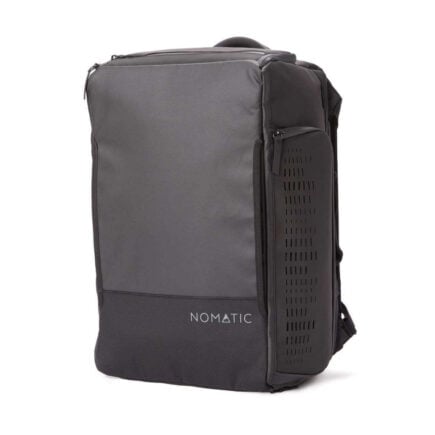
Nomatic Travel Bag
- Capacity > 30L
- Price > $299
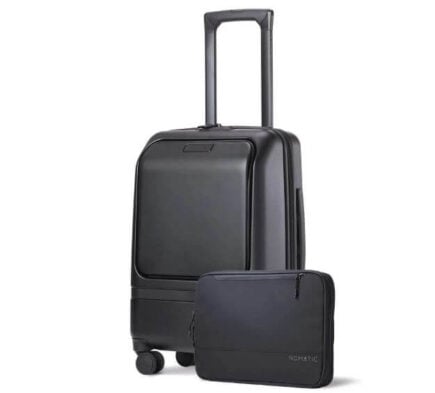
Nomatic Navigator Carry On
- Capacity > 37L
- Price > $400
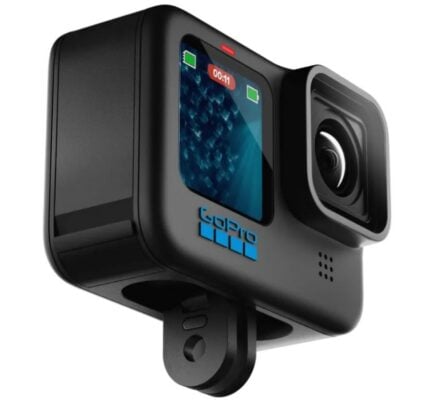
GoPro Hero 11
- Resolution > 5k
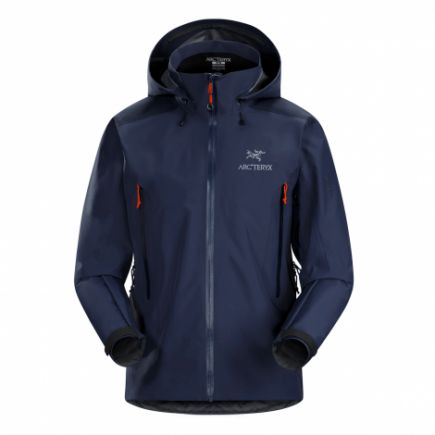
Arc’teryx Beta AR Jacket
- Price > $600

Insurance From World Nomads
- Price > Click For a Quote
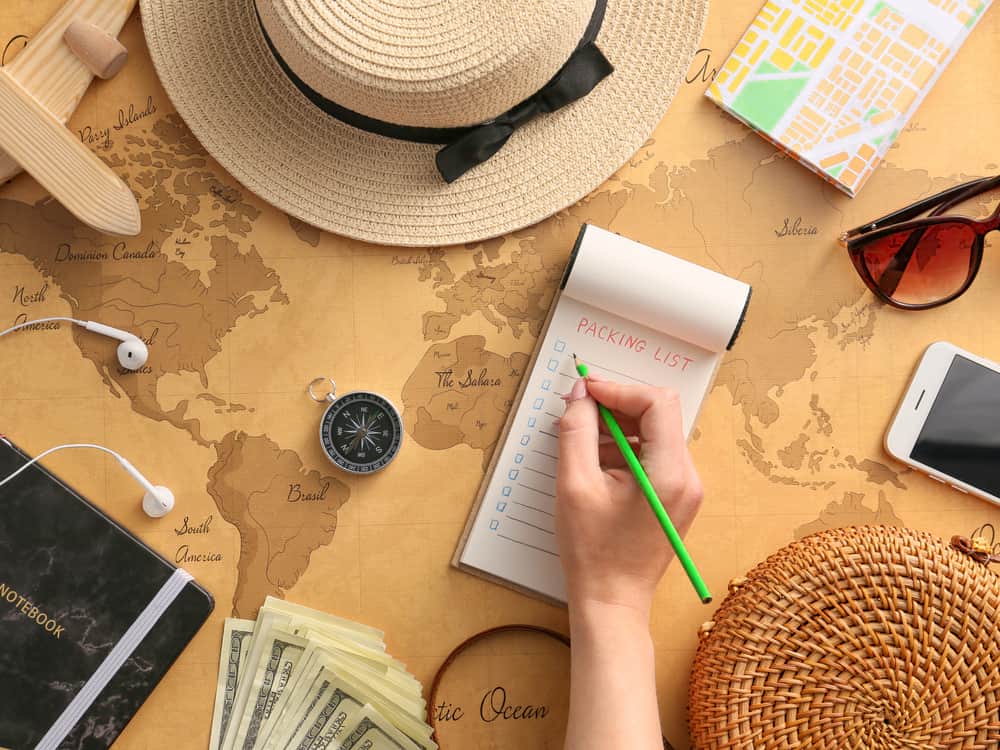
One of the most important things to consider when you’re prepping for a trip is that your backpack can keep up with your adventurous self. Before you can get onto scribbling down your “travel stuff list”, you’ve got to know where it’s all going to fit!
Not all backpacks are created equal. Take this from me – I hiked hundreds of kilometres with an ill-fitting backpack and on top of sweet empowerment, was also left with sore welts and blisters.
Every backpack fits differently, so you have to make sure you get one that is comfortable and the right size for your body type. On top of that, an ideal backpack for a budget traveller is durable and compact. (I can assure you that you DON’T need a 90-litre backpack unless you’re headed on a North Pole expedition.)
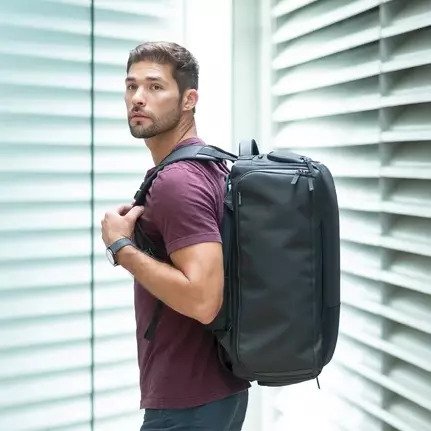
The Broke Backpacker loves the Nomatic backpack. It’s sleek, smooth, and almost as sexy as you. Designed to look modern, it fits both ragtag travellers and business backpackers, and it’s very compact. Nomatic works especially great as a digital nomad backpack.
If the Nomatic backpack doesn’t tickle your fancy, there are still plenty of other AWESOME travel backpacks out there. I personally have been a die-hard Osprey fan for years, and their comfort and durability is definitely the reason why Osprey stays on top of the backpack game year after year.
Whether you’re looking for stuff to take interrailing or for a trek through the Himalayas, the right bag is the basis for every good trip.

We’ve tested countless backpacks over the years, but there’s one that has always been the best and remains the best buy for adventurers: the broke backpacker-approved Osprey Aether and Ariel series.
Want more deetz on why these packs are so damn perfect? Then read our comprehensive review for the inside scoop!
Pack Your Bag Like a Pro
Packing your backpack is like a sport that you have to practice before you can win the gold medal. Here are some of my best packing tips on how to become the world champion of packing your backpack:
- PACK LIGHT. No matter where you’re going or what you’re doing, always take the minimum amount of things. If you’re packing “just-in-case” things – ditch ‘em.
- One exception: always take something fun with you. Pack of cards, ukulele, a yo-yo…
- Always keep important stuff at hand. Keep documents in a travel purse , bum bag or any smaller bag that is on you at all times. Pack other things you might need quickly (hand sanitizer, tissues etc.) in the front pocket of the backpack.
- Pack versatile travel clothes that can be combined in almost any way. You save space when all your clothes fit together and you don’t have to pack each outfit separately.
- Roll your clothes – don’t fold them.
- Use packing cubes to control the chaos that reigns inside your backpack.
- Pack extra containers . Ziploc bags, tote bags, tupperware… It SEEMS superfluous but I always end up needing an extra plastic bag for my shoes or a box for leftovers in a hostel and never have it.
No matter where your road takes you, there are a few crucial bits of backpacking gear that are universally useful for the travelling kind. These are the travel essentials that should be the first things added to any backpacking packing list . So, let’s start from the bottom up and begin with a travel basics checklist.
1. Headtorch
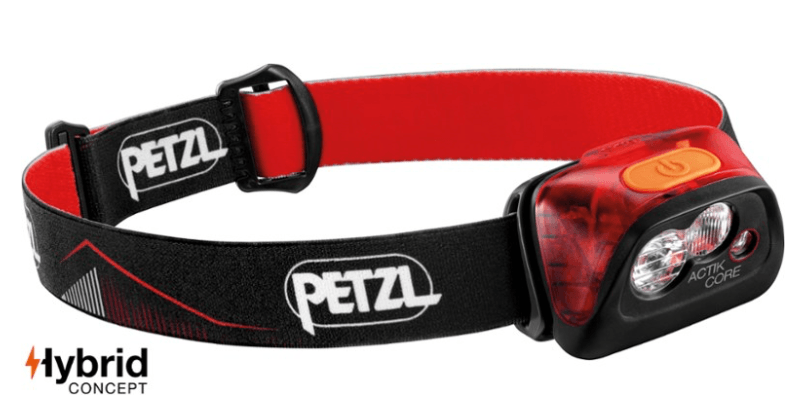
Before you pack your passport, before you pack your darn tough socks , PACK YOUR HEADTORCH. It’s like, number one on our “travel things list!” Wherever your trip takes you, whether you’re looking at things to bring interrailing or backpacking around Southeast Asia, they’re always useful.
The guiding light in the dark is your best friend in the wilderness that is the travel scene. Head torches are not only for campers. They can save your butt in dark hostel dorms, night buses, impromptu cave explorations – basically anywhere that’s dark.
The Petzel Actik Core Headlamp is one of the best combos of cheap and mighty head torches out there but in case you’re looking for something different, there are many great headlamps for backpackers .
Travel headlamps don’t get better than this! The Petzl Actik allows you to use both normal batteries AND a rechargeable version. You’ll also find a large variety of lumens to choose from, though I’ve found 350 to be perfect for all kinds of low-light adventures. This headlamp enjoys stellar ratings for a reason: it does exactly what it’s supposed to do.
2. Travel Insurance
Sometimes life head-butts you hard enough that your first-aid kit can’t fix you up.
Never travel without travel insurance. It’s a wild, wild world out there, and you never know what could be waiting just around the corner. You don’t want to be stuck on the other side of the world with a 100,000 dollar hospital bill just because you cheaped up on insurance.
At The Broke Backpacker, most of the team uses World Nomads Travel Insurance .
ALWAYS sort out your backpacker insurance before your trip. There’s plenty to choose from in that department, but a good place to start is Safety Wing .
They offer month-to-month payments, no lock-in contracts, and require absolutely no itineraries: that’s the exact kind of insurance long-term travellers and digital nomads need.

SafetyWing is cheap, easy, and admin-free: just sign up lickety-split so you can get back to it!
Click the button below to learn more about SafetyWing’s setup or read our insider review for the full tasty scoop.
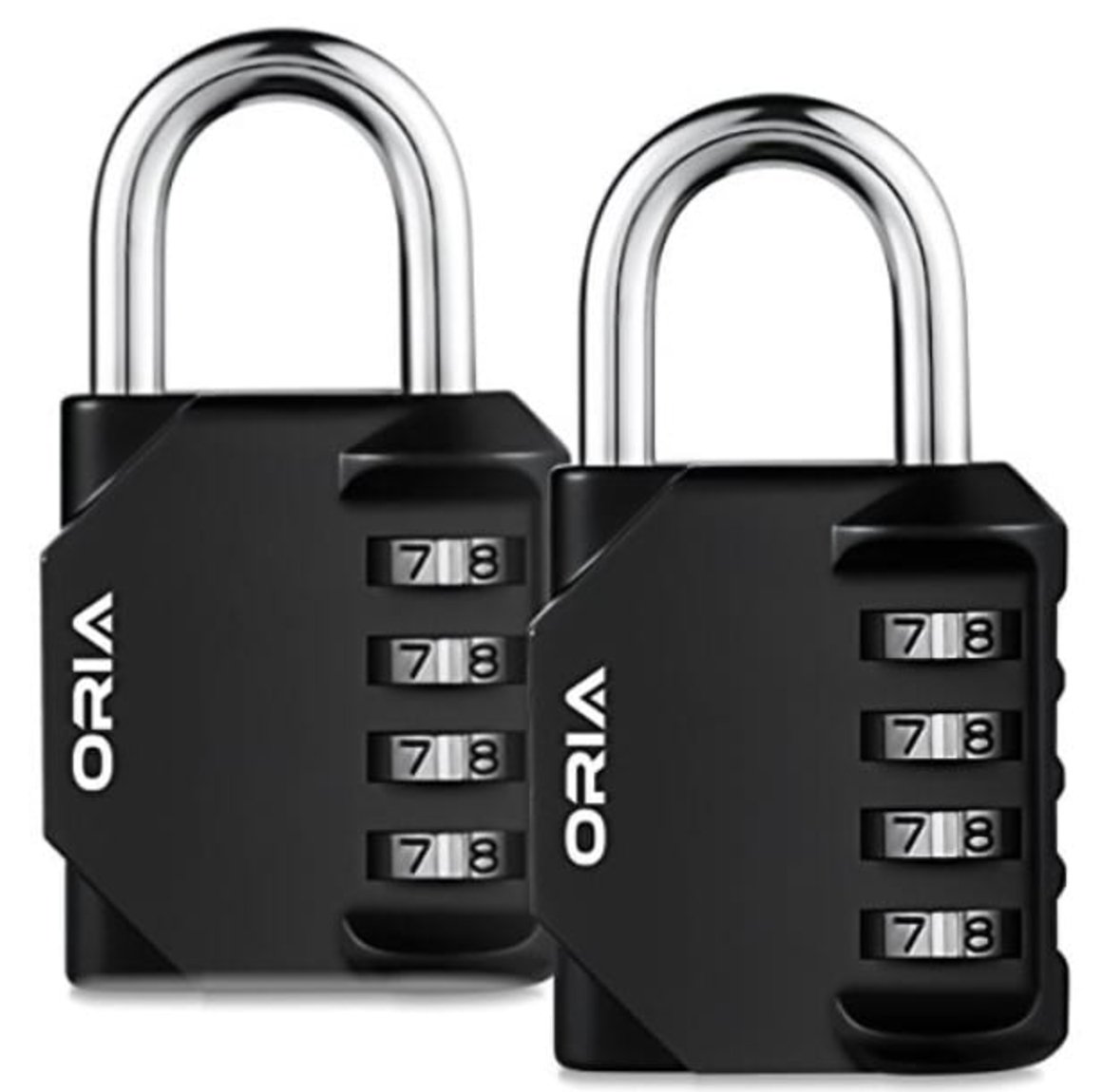
The first thing on your hostel packing list should be a sturdy, trusty padlock to keep your valuables safe. Most hostels have lockers, but most of them don’t provide free padlocks.
I’ll never stop campaigning for number combination locks over padlocks with keys. Unless you’re a successful small-time criminal, picking the lock to your own locker after you’ve lost the key is not worth your time!
We suggest picking up a couple of good quality, combination padlocks – just make sure not to forget the combination.
4. Travel Towel
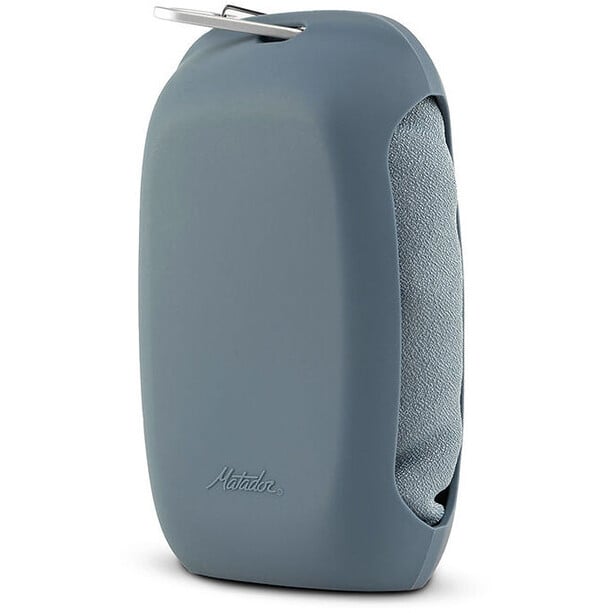
Wherever you are, one thing’s for sure – you will always get wet. (No, not in that way! Well, actually, hopefully…)
Some hostels provide towels but like most fun things in life, their towels are rarely free either. Save a buck and pack your own!
A microfibre or a bamboo towel deserves its spot at the top of the list of travel essentials. It takes up barely any space in the backpack and it dries quickly. We love the one from Matador as it is ridiculously compact and drys insanely fast – basically it is a magic towel.
5. Reusable Water Bottle
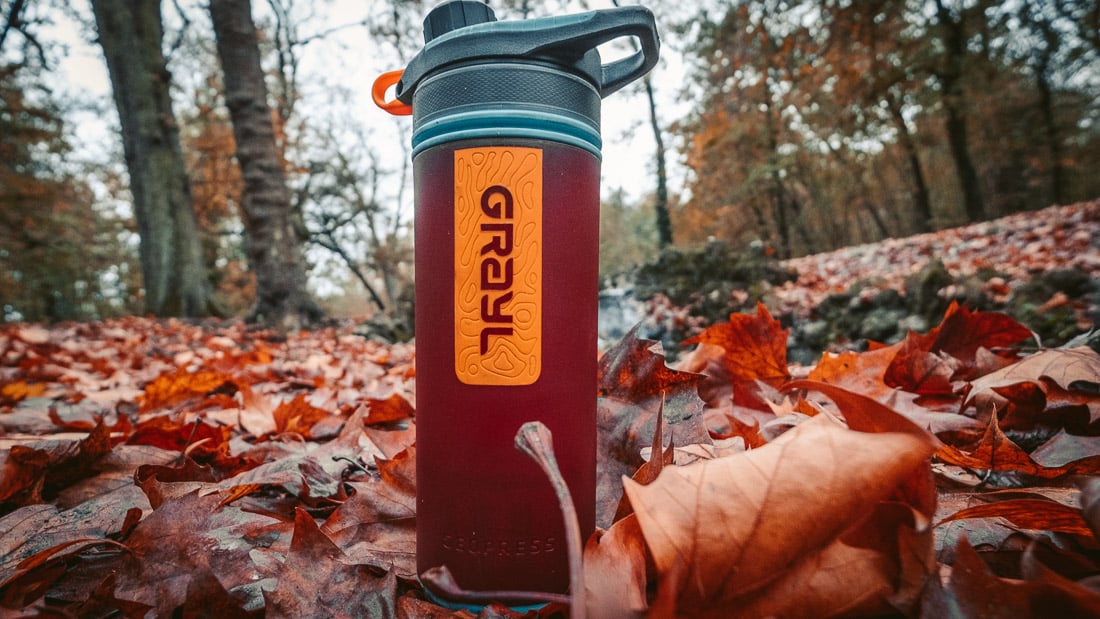
Stay hydrated AND save the turtles – that’s pretty good for a day’s work, if you ask me. Disposable plastic is the bane of your planet’s existence and one small but not insignificant way you can help is getting a reusable water bottle.
And while you’re at it, why not get a water bottle WITH a filter ? The Grayl Geopress works wonders in countries where tap water is not safe to drink as it is or on far-away mountain hikes. You might have seen our Grayl plugs floating around the blog before: that is because we love it so much.

Drink water from ANYWHERE. The Grayl Geopress is the worlds leading filtered water bottle protecting you from all manner of waterborne nasties.
Single-use plastic bottles are a MASSIVE threat to marine life. Be a part of the solution and travel with a filter water bottle. Save money and the environment!
We’ve tested the Geopress rigorously from the icy heights of Pakistan to the tropical jungles of Bali, and can confirm: it’s the best water bottle you’ll ever buy!
6. Appropriate Clothing

Unless you’re headed to a nude beach in the French Riviera for the whole holiday… You’ll obviously need clothes. And a good laundry bag to separate the (very) dirty ones…
The type of clothes you pack depend on your destination. Is it hot or cold? Sometimes both? Will you need to cover up if you’re travelling somewhere conservative? Will there be a lot of walking on broken cobblestones?
The Broke Backpacker has done all the legwork (and armwork, and torsowork…) to find the best travel clothing for any aspiring adventurer and lifestyle nomad! Check out our reviews below.
- Best travel jackets
- Best rain jackets for travellers
- Best travel pants
- Comfy shoes for travelling
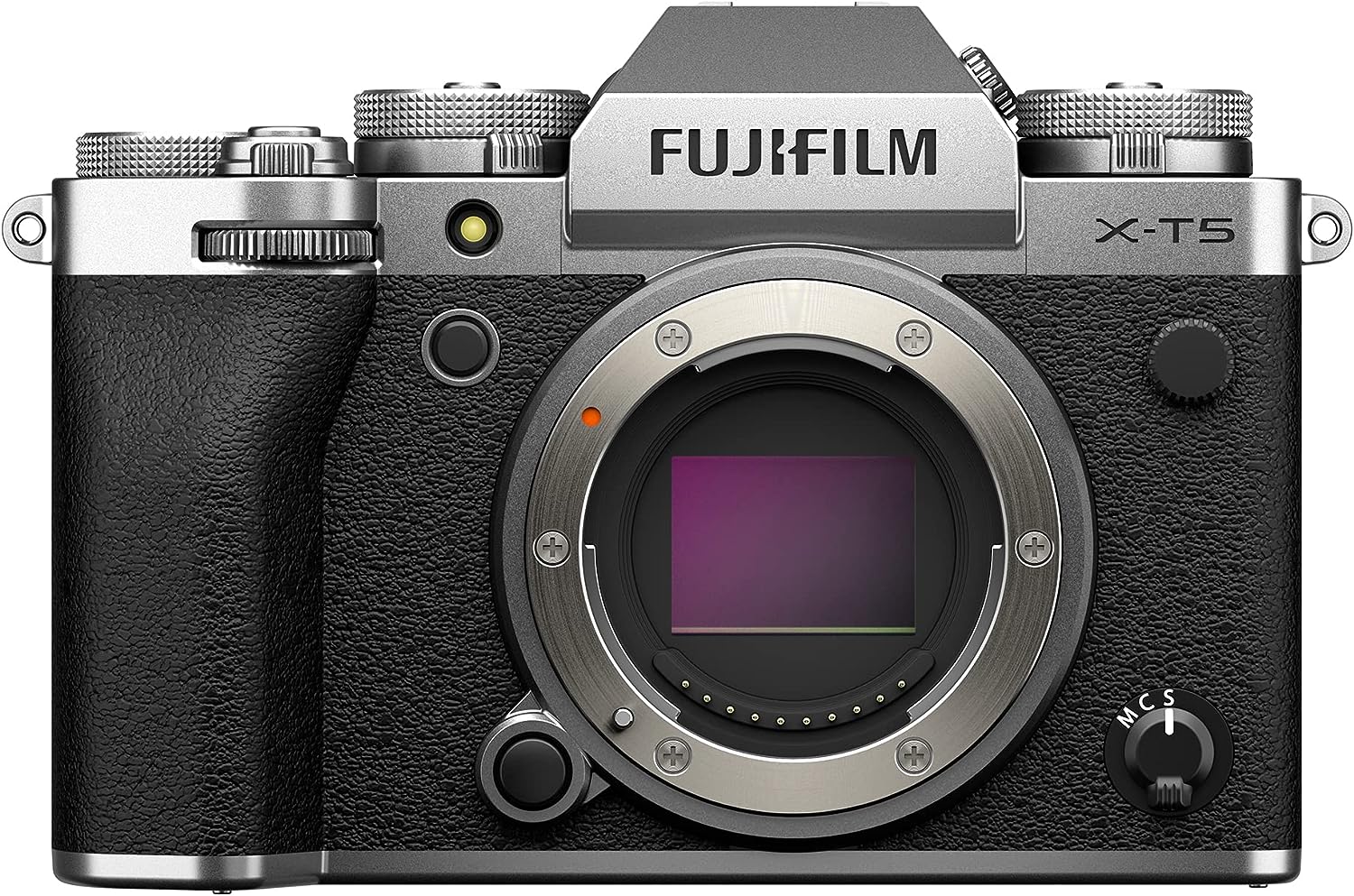
More and more travellers are switching to snapping only phone photos. In most cases, phones do the job just as well as a camera if you’re taking shots for your mum more than trying to get published in National Geographic . But hear me out!
A camera is still better for some purposes: you wouldn’t pick your phone over a GoPro on a diving or a biking trip. I personally prefer a mirrorless camera. It’s so much more lightweight that it’s super easy to carry with me even when I’m hiking.
Here are the best cameras for backpackers , although, spoiler alert: you can’t do much better than the Fujifilm X-T5. You get all the vivid colours and deep blacks that Fujifilm are known for without needing the unrealistically deep pockets to afford it!
8. Toiletries (and a Toiletry Bag To Put Them In…)
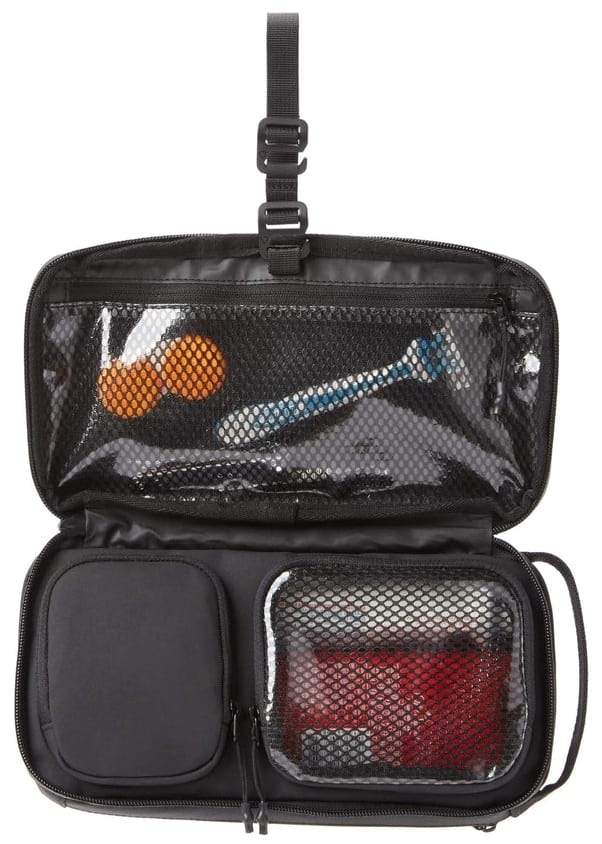
Toiletries! Drug stores make my hob-goblin brain go into total horde mode, and I always walk out with an assortment of toiletries I definitely (maybe not) needed. If this is your problem too, get a hanging toiletry bag to better keep your rubber ducks in line – we recommend the one from Nomatic which is ergonomically designed and made from splash and stain proof material.
Most of this stuff you can buy wherever you’re going – unless you’re going on a different planet – so I’d highly recommend shopping at the destination. I’d pretty much only recommend BYOB for stuff that can be harder to come by. This includes shampoo bars (versus liquid soap), non-whitening face wash (Asia, looking at you), and some of the weird things you might be into.
- Toothbrush and toothpaste
- Shampoo and conditioner
- Sunscreen (hella expensive in some countries)
- Moisturizer/Cream
- Razor and extra blades (optional – let the weeds grow wild)
- Waterproof make-up, make-up remover and cotton pads (optional, but nice)
Toiletries usually pack a lot of plastic in a pretty short-lived package so if you can, look into more sustainable alternatives – bamboo toothbrushes, reusable razors, washable cotton pads etc. Here is what you should add to your toiletries packing list .
9. Sleeping Bag
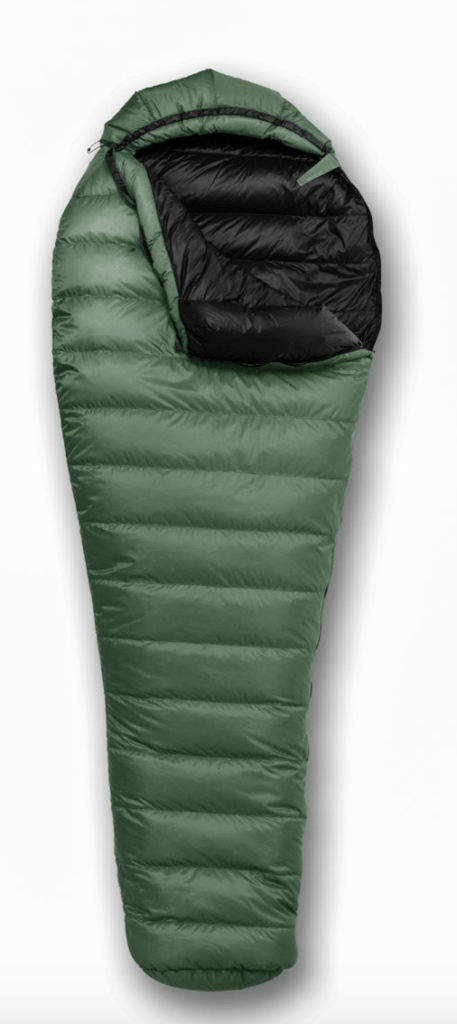
The road to becoming a successful adventurer is paved with cozy, comfy down fluff. Mm, toasty…
Sleeping bags are not only for hikers and hobos. Sometimes it can save you in a pinch when you rock up to a town where all hostels are full, or if your guest house is being mean and cannot provide enough blankets.
Our one single top outdoor packing tip is to pick a lightweight sleeping bag that’s easy to carry with you. There are a lot of different sleeping bags out there and we have slept in quite a few of them of them – check out our review of the best sleeping bags for backpackers .
Did you also know you can get double sleeping bags ? Yeah, I know!

REI is one of America’s biggest and most-loved outdoor gear retailers.
Now, for just $30, get a lifetime membership that entitles you to 10% OFF on most items, access to their trade-in scheme and discount rentals .
10. Hammock
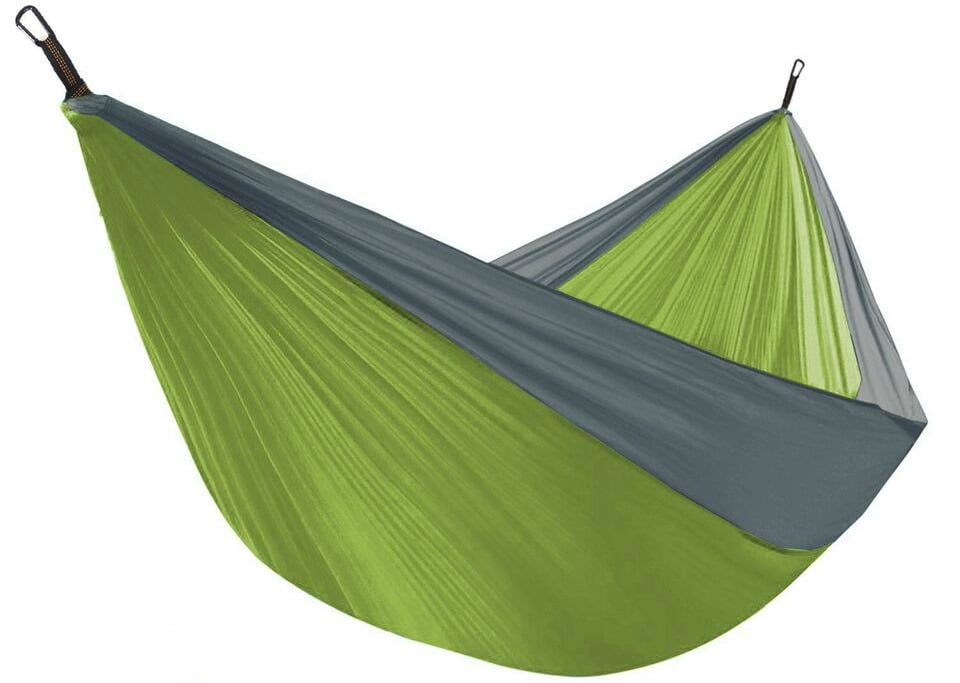
While we’re at it – pack a hammock. A good travel hammock packs up light and compact, and it’s the quickest way to set up camp anywhere.
Not to mention WAY more comfy than a tent. Swinging gently into sweet sleep in a camping hammock will always be more comfortable than sleeping on the ground.
Hammocks are another example of where the market is cluttered by utter shit. Hit the button below for our top pick.
11. Money Belt
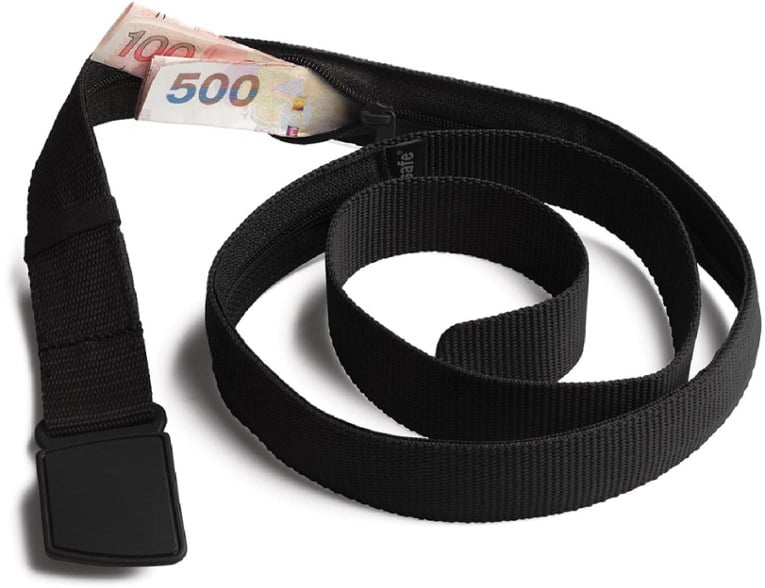
When you’re backpacking on a budget, every penny counts. Save your shillings from pick-pockets with the magic of a money belt.
A travel money belt is easy to hide under your clothes and is a secure place to store cash and important documents.
There are a lot of money belts out there and some of them are of a fairly low standard and fall to pieces pretty fast. Hit the button below to view our top pick on REI.
12. Universal Adapter
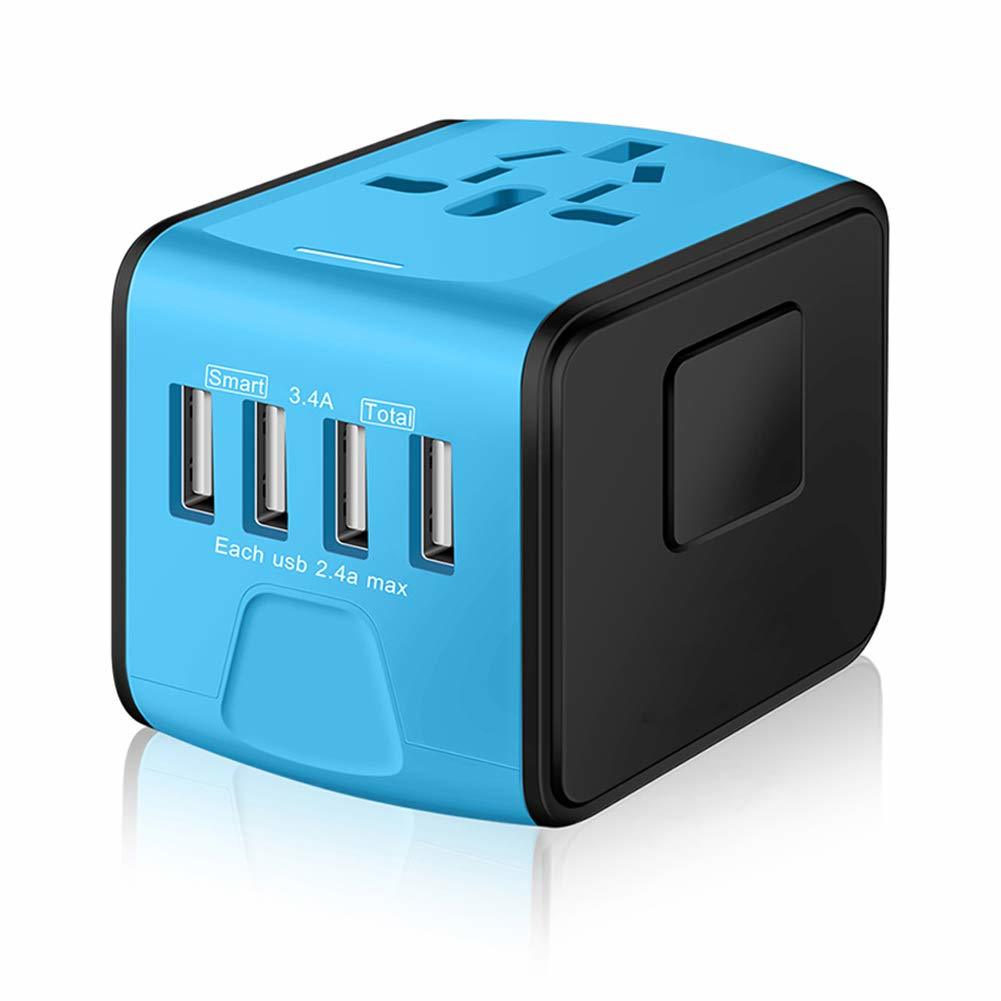
All hail the C type plug! While my EU standard plug fits most sockets around the world, there are still many, many countries that are going to leave me disconnected without an universal adapter.
Gone are the days you needed to purchase a towering inferno of all types of different adapters. Now you can get a nifty universal adapter that has every possible plug and prong in the same block of tech.
13. Journal
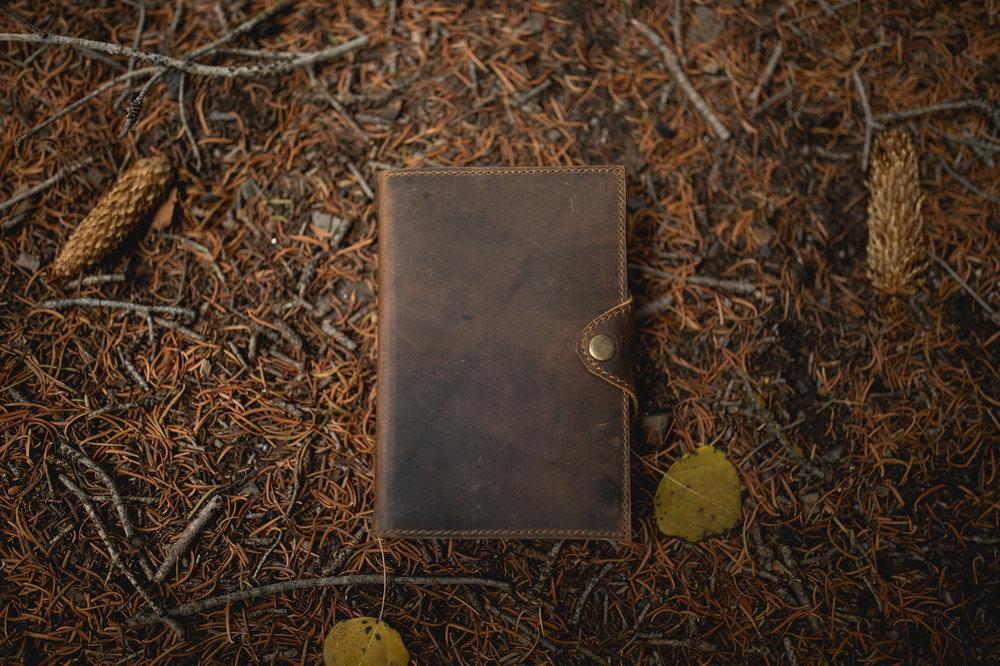
If you’ve never been into journalling, travelling is a fantastic time to get started.
Whether you’re keeping track of all the fun you’ve been having or recording down your daily mantras, a cute writing journal is a must-add to your travel packing list.
You can pick up notebooks for a few books but if you are taking it out on the road then it pays to invest in a good quality, hardwearing one that can withstand some abuse. We recommend this stylish, leather backed one from Kodiak.
14. Travel Packing List for a Tiny Travel Pharmacy

Having a personal health kit is important preparation for days when the road sucker-punches you in the face.
The best case scenario is that you’ll never have to use your first-aid kit. The worst case scenario is that you REALLY need it but you left it out of your adventure packing list.
Whether you’re Indiana Jones-ing your way through tropical jungles or interrailing across Spain, a traveller’s first-aid kit and a few extra health essentials are vital.
You can simply buy a ready made first aid kit or you can make your own.

#15 – eSim by Onesim
The good news about Planet Earth is that there is excellent 4g and 5g Internet coverage, taxi apps and food delivery apps in pretty much all cities and towns (but it does get patchy once you venture out into the wilds and wilderness). The bad news is that your native SIM card will probably not work once your leave your native country and so you will not be able to access any of this online goodness until you rectify that particular situation.
You can waste time hanging around phone shops queuing to get a plastic sim or you can is,ply install a eSim onto your phone before you leave home. You just access the OneSim site, choose the package for whatever country you wish to visit, download it and off you go – you are online the moment you land at the airport. They are one of the best travel eSIMs on the market at the moment, offering great worldwide coverage.
eSims are easier to set up and better than the environment than plastic sims. The downside is that not all phones are eSim ready. If you’re looking for something more heavy-duty with the ability to power your laptop online, check out some of the top travel routers instead .
#16 – GPS Luggage Tracker
You may know this, but right now airlines are losing record amounts of bags and suitcases some of which are never to be seen again. To help to find your bag in the event it does go missing, just pop a GPS luggage tracker inside it and you will be able to identify exactly where on earth it is.
A good, reliable GPS luggage tracker has emerged as an essential piece of travel packing.
What to Pack in a DIY First Aid Kit!
- Personal meds (inhaler, anti-depressants, birth control etc.)
- Pain medicine
- Band-aids and blister plasters
- Disinfectant spray and wipes
- Mosquito repellent (at least 40% DEET)
- Antihistamines
- Bandages and gauze
- Cream/Ointment (great for small cuts, wounds and the aftercare of travel tattoos)
- Steri-strips
- Throat lozenges/Cough drops
- Probiotics (great for getting your gut used to new environments)
- Diarrhea medicine
- Malaria pills if needed
Note: if you’re taking prescription medication, you should travel with a certificate of the doctor’s prescription since some countries require proof that you’re not just an international drug dealer. You should also make sure that you have enough re-fills for the whole duration of the trip.

Now, you could spend a fat chunk of $$$ on the WRONG present for someone. Wrong size hiking boots, wrong fit backpack, wrong shape sleeping bag… As any adventurer will tell you, gear is a personal choice.
So give the adventurer in your life the gift of convenience: buy them an REI Co-op gift card! REI is The Broke Backpacker’s retailer of choice for ALL things outdoors, and an REI gift card is the perfect present you can buy from them. And then you won’t have to keep the receipt. 😉
Next we are going to look at a few niche travel packing lists for specific travel styles.
Carry-On Packing List
The most hardcore travellers do their whole trip with one bag only. I used to be a die-hard one-bag gal too. The secret? One bag travel packing list has exactly the same travel essentials as normal packing lists. You just have to carefully choose a good carry on bag like the Shell by Tropicfeel and then when it come to filling it, you pack fewer and smaller items.
Many low-fare airlines charge extra for luggage, so many people like to travel with hand luggage only. This means that the overhead bins overflow quickly… and you might be asked to check in your bag anyway.
I recommend always having a smaller daypack on top of you normal backpack. It’s handy for day trips and incredibly useful for hand luggage on planes, trains and busses.
There are a few things you should always pack and keep in your carry-on luggage.
- Electronics
- Anything valuable and fragile
- Phone charger
- Important documents
- One change of clothes (in case your bag gets lost on the way)
- Personal medicine
- A toothbrush
Travel Packing List for Women
Incredibly, it turns out that backpacking packing lists for female travellers are not all that different from general ones. There are just two extra things that I’d recommend adding to the ultimate packing list for her, those are products that you also need at home: sustainable sanitary products and birth control. It all comes down to planning out your travel needs list and adapting it from there.
Finding tampons in many countries is a hassle and a half so it’s worth preparing in advance. I think the best option now is a menstrual cup for extra sustainability, cost-effectiveness, AND space-saving points.
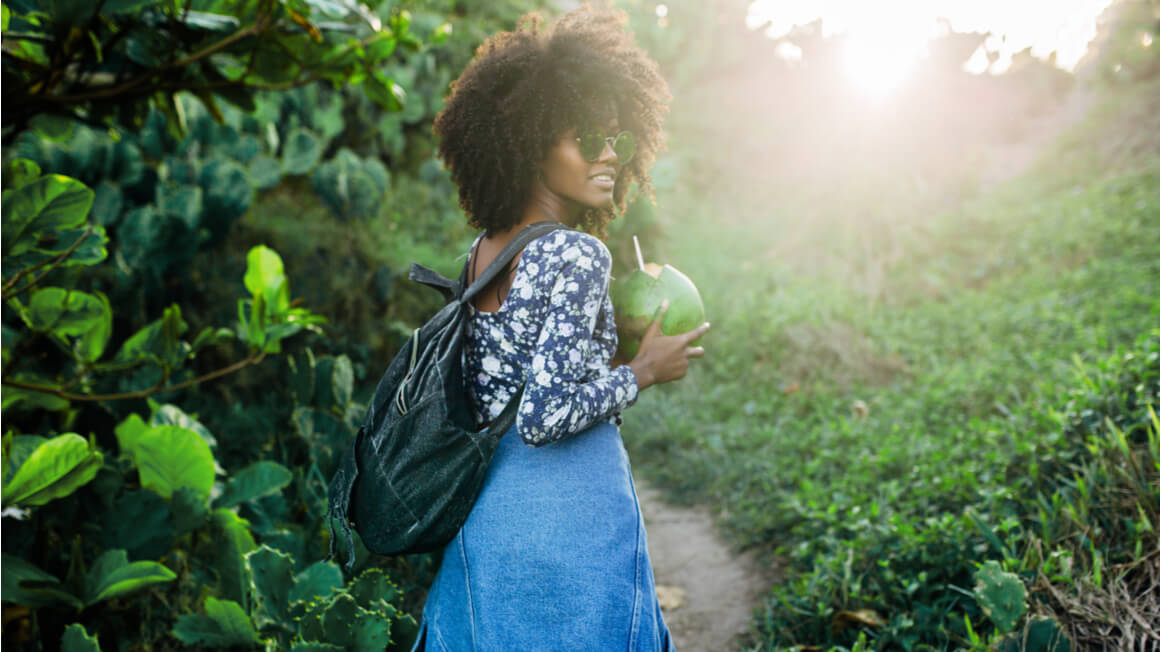
Another ESSENTIAL thing is stocking up on is birth control, if you’re using a re-stockable kind. Pills might not be available everywhere without a prescription, impossible to ship through the mail, or the same brand might not be available in your destination. It might be worth looking into longer term alternatives like implants or IUDs and seeing if they work for you.
Some lady travellers also speak highly of a Shewee, a nifty little device that allows you to pee standing up.
- Road trip packing list
- RV packing list
- Beach holiday packing list
- Adventure packing list
When you’re headed out in the boonies, it’s extra essential to make sure you’re packing as light as possible. This means that you DON’T need a foldable camp chair (well, unless you’re planning to drive right to the camping spot). But here we’ve added all the essentials for camping to our world travel packing list.
Rule number one of preparing your camping packing list : make sure everything is waterproof.
We’ve already covered sleeping bags, travel hammocks and head torches in the first section. Here are some more essentials that you should bring with you for camping and hiking trips.
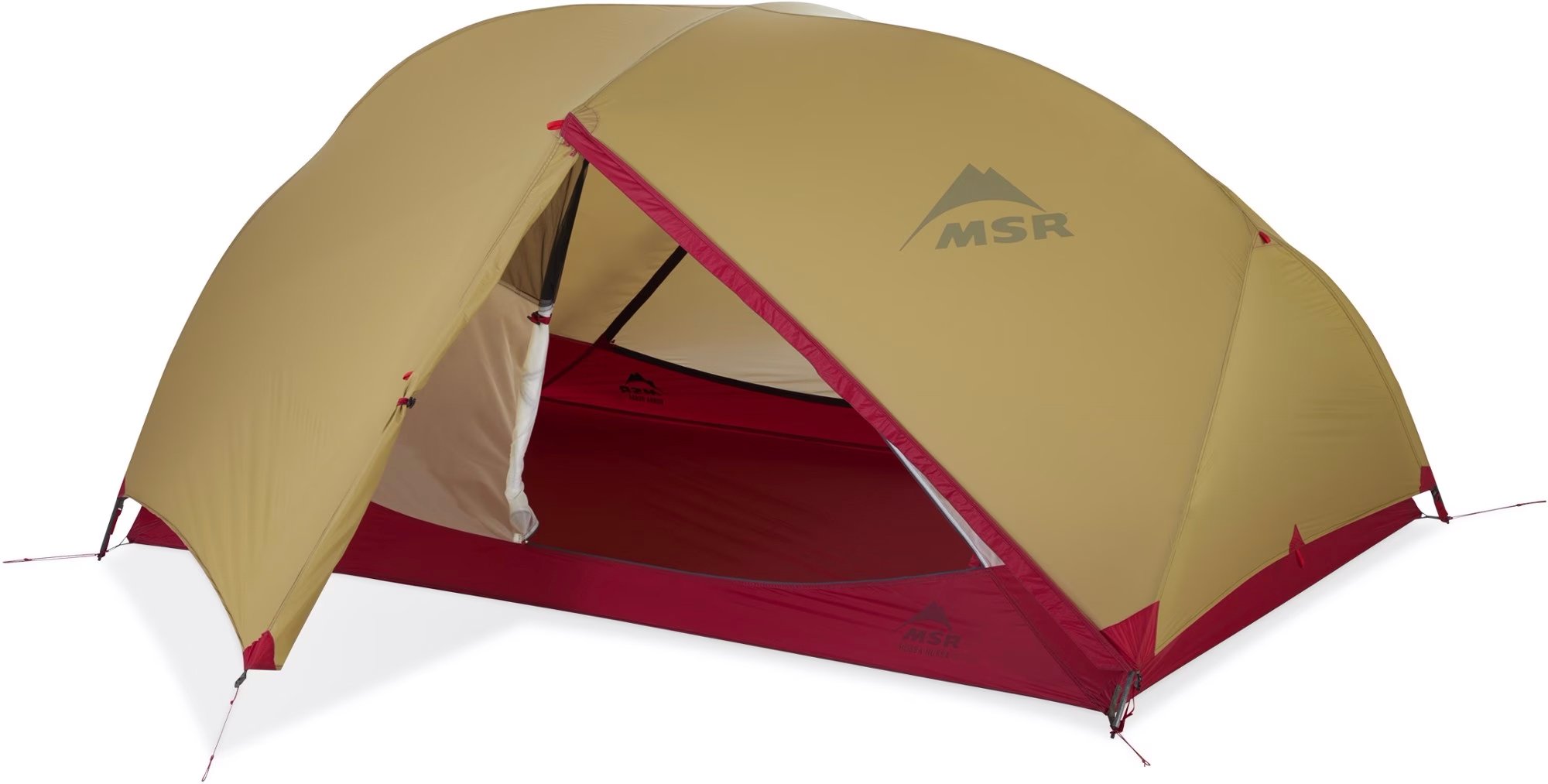
Camping tents come in all shapes and sizes. The number one rule of tents is the same as the #1 rule of camping in general: waterproof, waterproof, waterproof!
I prefer a small two-person tent. Even though I always hike alone, it’s nice to have space for vibing and my backpack inside the tent. Here are the best waterproof tents that the Broke Backpacker team recommends.
2. Camping Stove
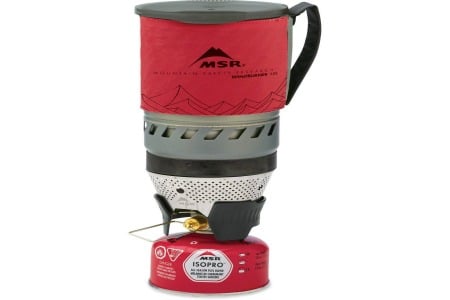
Camping stoves are obviously a necessity in the wilderness. But hey! A good portable stove is also a lifesaver in hostels with no kitchens and in cities where eating out is simply too expensive.
One CRUCIAL thing to look out for when buying a camping stove is to make sure that you can use it. This is a mistake I made: turns out that the fancy schmanzy screw-on camping stove I’d bought only took a certain type of gas canister that I couldn’t find anywhere the day before a three-week hike. I ended up having to buy a puncture-type stove on the morning of. Yikes!
3. Camping Utensils and Cookware
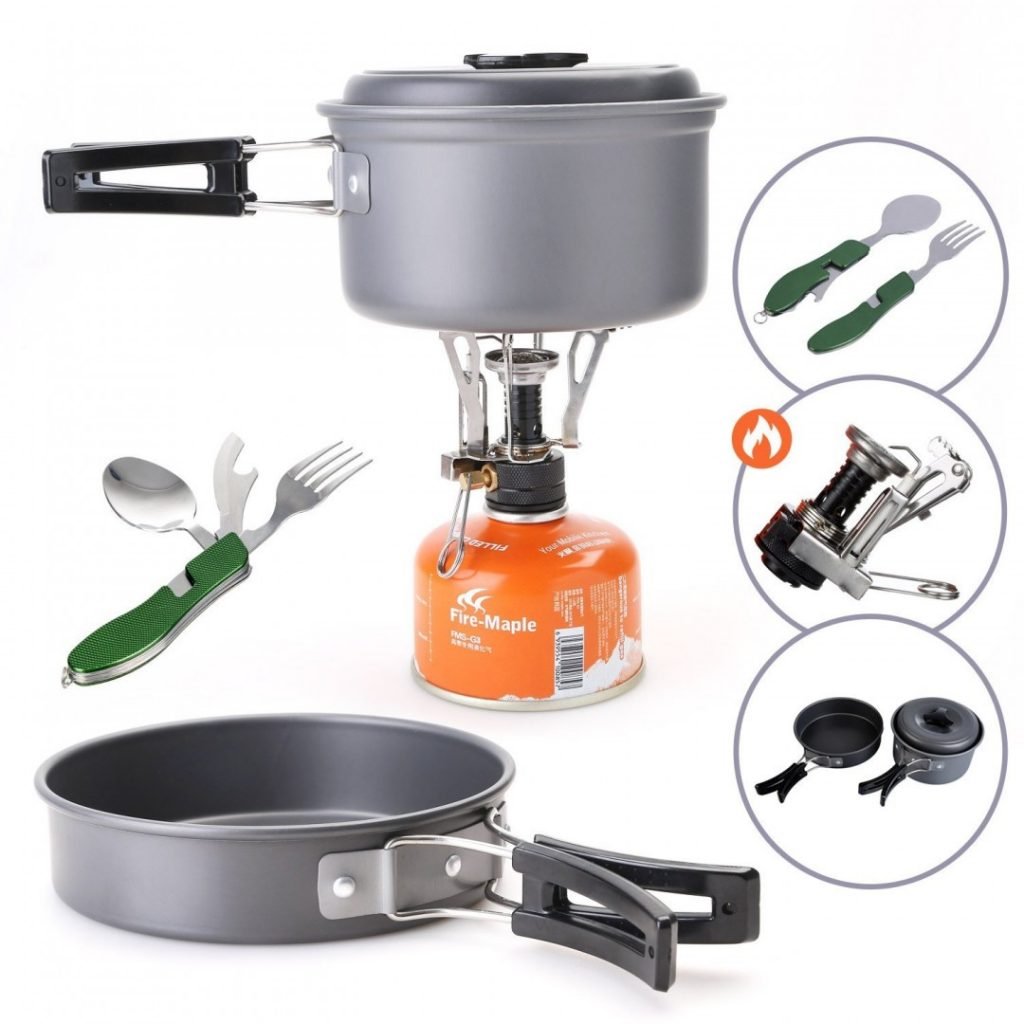
Whatcha gonna do with that nice stove without any utensils? Pack some camping cookware and some cutlery. No hiking gear list is complete without a spork.
Titanium pots are the bee’s knees but they’re pretty pricey. Stainless steel is a great second option. Aluminium is probably the most popular choice since it heats up evenly and is extremely lightweight, its only problem is that it’s not as durable as many other materials. But hey, nothing lasts forever!
4. Sleeping Pad
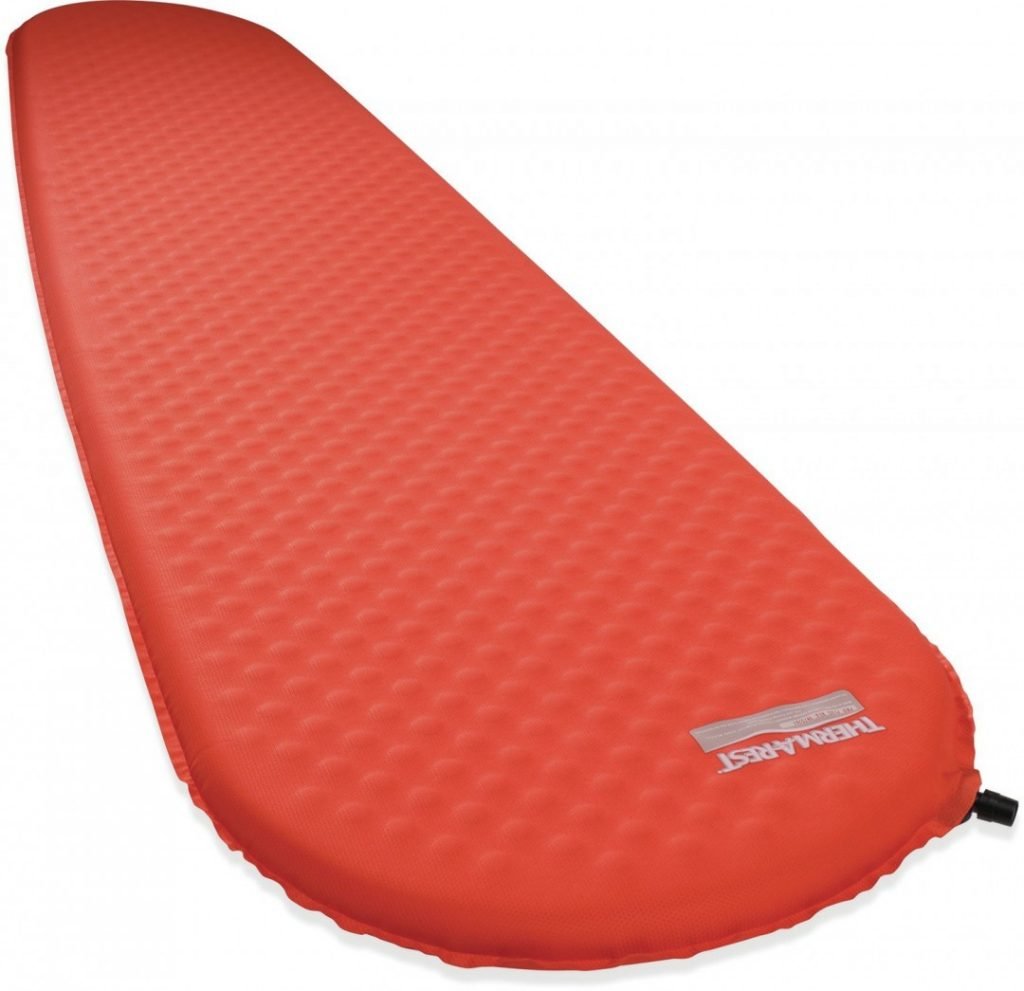
Camping sleeping pads are not only necessary for comfort. They also keep you insulated from cold coming from the ground, keeping you nice and toasty at night.
Pro tip: a yoga mat is neither comfortable nor very good at keeping you warm. You should also look at picking up a specialised travel pillow from TRTL travel too.
5. Hiking Boots and Other Shoes
I’m gonna go ahead and say it. Good-quality hiking shoes are the most important bit of hiking gear! Your non-sprained ankles will thank you.
Remember to always also bring a lightweight pair of camp shoes. The feeling of squeezing out of your boots at the end of the day is unparallel to anything else except for maybe a really good piece of cheesecake… But it’s worth nothing if you don’t have sandals or flip flops to slip into. Crocs are also a solid choice if you don’t mind committing fashion crimes.
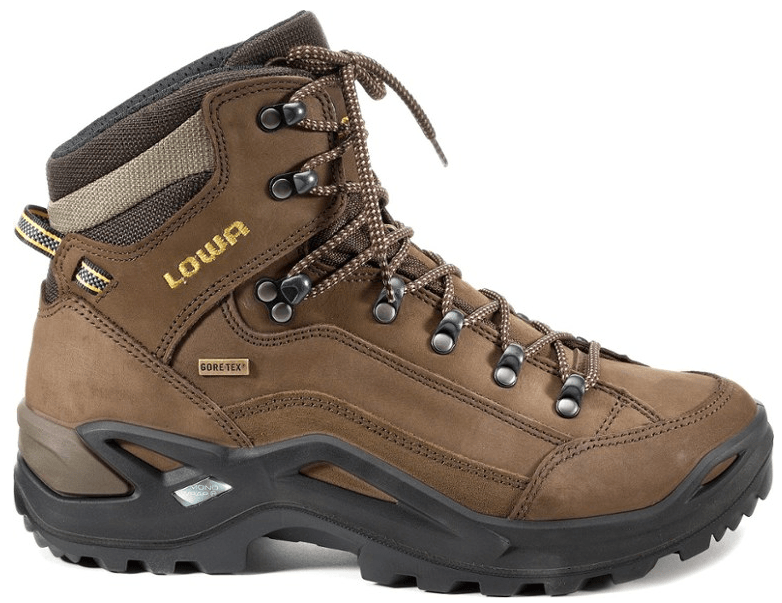
Best Hiking Boots for Men
The waterproof Lowa Renegade Mid GTX Walking boots are sturdy and durable.
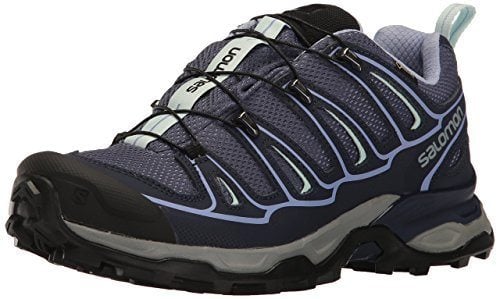
Best Hiking Boots for Women
Salomon Women’s X Ultra 3 Low boots are lightweight, breathable AND waterproof.
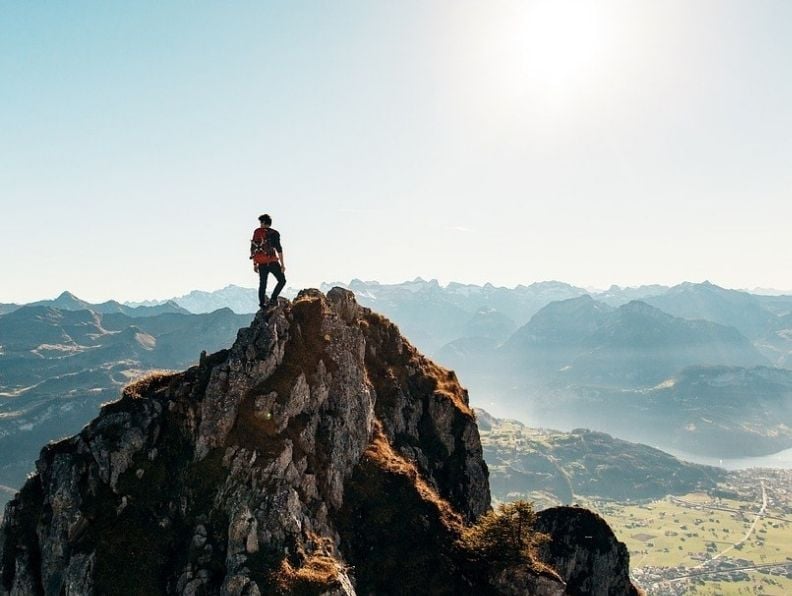
Still have some questions? No problem! We’ve listed and answered the most commonly asked questions below. Here’s what people usually want to know:
What should I not forget to pack?
Simple – a first aid kit . No matter where you go, it’s always best to be safe than sorry. So take a little precaution and get your hands on a travel safety kit.
What are the four essentials for any successful trip?
Make sure to pack these things wherever you go: 1. A good water bottle 2. A Universal adapter 3. Fresh pair of undies 4. Travel Towel and Toiletries
How do you pack efficiently?
Keep these cues in mind for efficient packing: 1. Only take with you what you really need 2. Use packing cubes for more organization 3. Roll your clothes 4. Keep the important stuff in an extra bag or compartment for easy access
What should I not pack?
Basically, anything that you’re not 100% sure you’ll need. Valuables such as jewellery are pretty unnecessary as well, unless your trip requires it. Also, make sure to check with your airline what can’t be packed if you’re travelling long distances.
And there you have it: the biggest, baddest packing list for backpackers that has ever seen the light of day.
Now all there is left to do is pack your tried-and-tested backpacker’s bag – and take what I’ve said with a grain of salt.
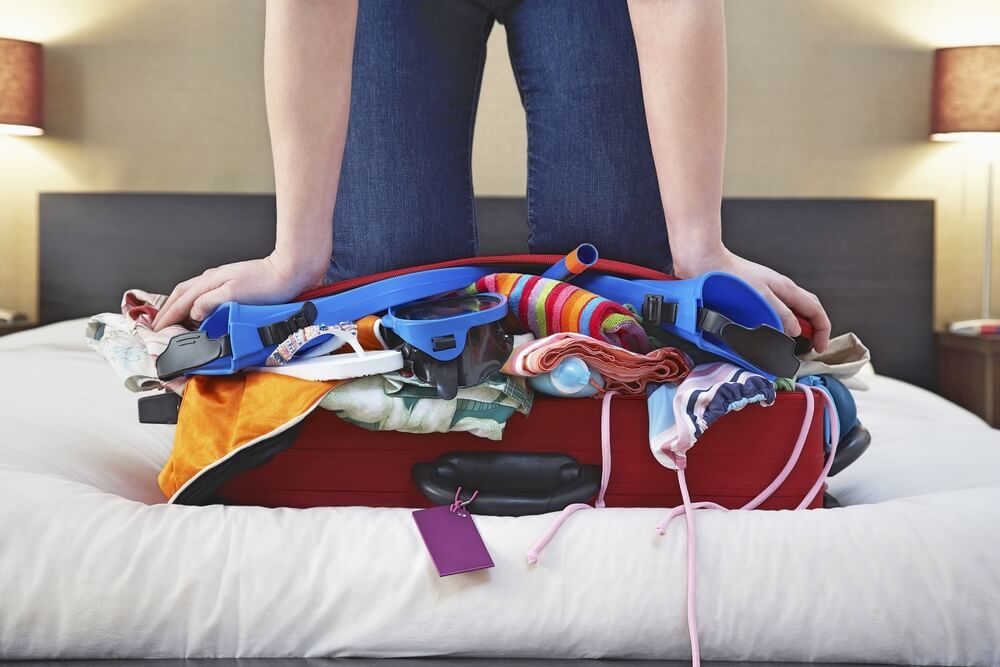
(Except for head torches and sewing kits – you will ALWAYS need them.)
While this is a pretty exhaustive list of things to take with you, it doesn’t mean that you have to follow it like it’s gospel. What to pack for a trip depends on your personal travel style and the trip as well.
For example, if you’re planning for a two-week stint backpacking around European capitals staying exclusively in hostels, you can probably leave your sleeping bag at home. And if you’ve never been a reader, don’t spend your money on a Kindle “just in case”. Just download some Netflix shows on your phone.
Packing for a trip doesn’t have to be stressful. Like my mum always used to say: As long as you have your passport, wallet and phone with you, you’re good. Everything else you can buy on the way.
Well, that is apart from the cheeky chess set for travel I always pack, but I’m a rebel like that!
Happy adventures!

And for transparency’s sake, please know that some of the links in our content are affiliate links . That means that if you book your accommodation, buy your gear, or sort your insurance through our link, we earn a small commission (at no extra cost to you). That said, we only link to the gear we trust and never recommend services we don’t believe are up to scratch. Again, thank you!

Elina Mattila
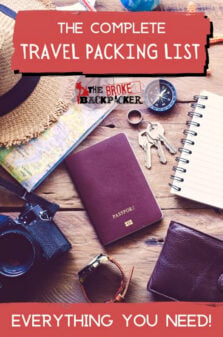
Share or save this post
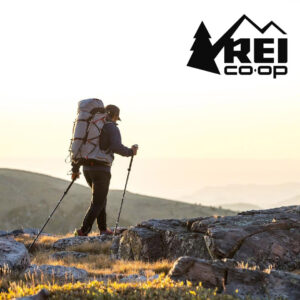
thanks for sharing!
I’m grateful for the practical tips and advice you’ve shared in this article. It’s going to be very useful for me.
Leave a Reply Cancel reply
Your email address will not be published. Required fields are marked *
Save my name, email, and website in this browser for the next time I comment.
Notify me of followup comments via e-mail.

Home » Packing Lists & Travel Gear » 40+ Backpacking Essentials You Shouldn’t Leave Home Without!
40+ Backpacking Essentials You Shouldn’t Leave Home Without!
You may have planned your route and booked your tickets but can you really say you are ready to set off on your backpacking adventure if you haven’t packed?
We feel your pain, knowing where to start with your backpacking packing list / backpacking checklist can be a little overwhelming, particularly if it’s your first long term adventure.
Maybe you’re finding the thought of narrowing down your backpacking essentials daunting or maybe you don’t even know where to begin?!
If this is how you are feeling, don’t panic! We are here to walk you through the basics and help you figure out your ultimate backpacking essentials – and hopefully narrow down the things that you DON’T need to stop you from over-packing.
Because carrying a bag that’s way too heavy is seriously going to kill your buzz and you’ll just end up dumping the unnecessary items anyway. ( ..totally not speaking from experience over here.. honestly.. .) .
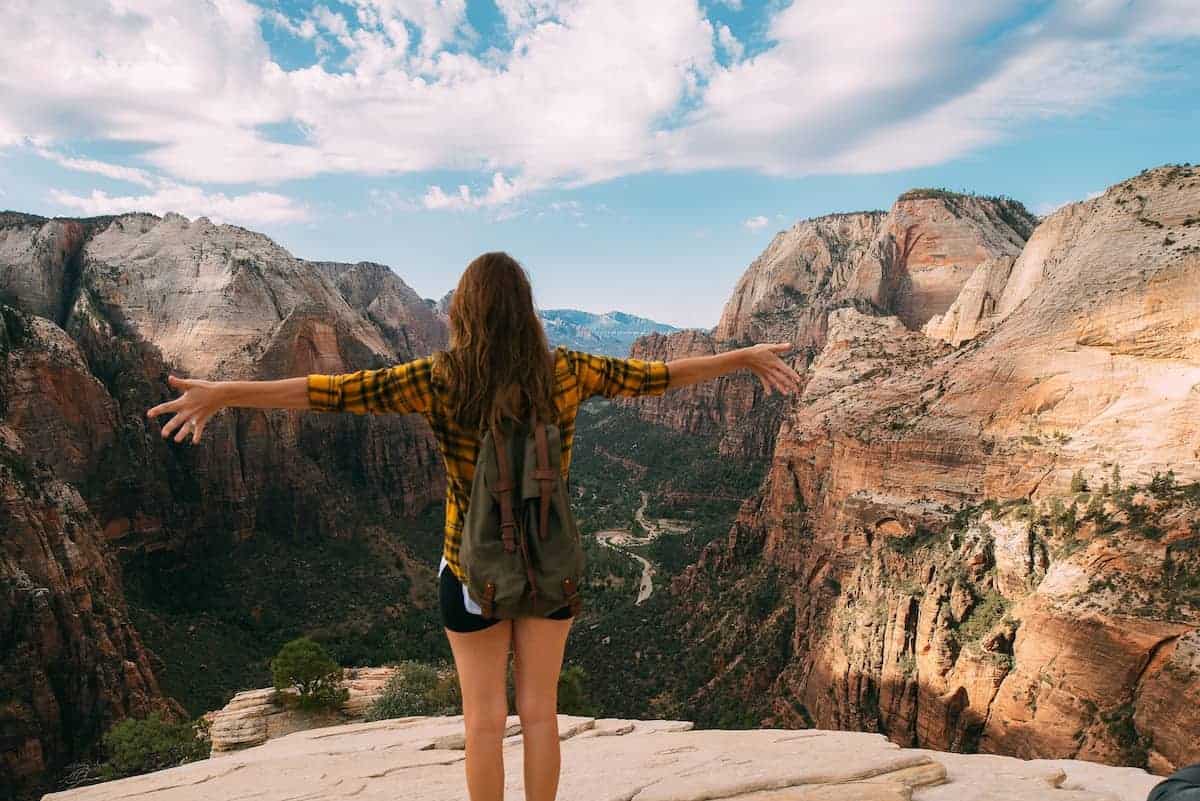
Backpacking Essentials Packing List Planning Tips
First things first, let’s work out your packing objectives & travel goals . To do this, ask yourself some simple questions.
- How long am I traveling for?
- What are the likely weather conditions going to be?
- How am I getting from A to B?
- What type of accommodation am I staying in?
Your answers to these should start to help you paint a picture of your backpacking trip.
They will help you to clarify if you can get away with packing just the bare essentials or do you need to pack for longer-term? What sort of clothing you will need to take, for warm or cold climates?
Whether you need to take into consideration any packing regulations, if you are for example jetting off on a plane to start your trip and if you will have a bed and a hot meal at your accommodation each night or are you going to need to think about camping equipment as well?
No matter what your answers are to these questions most of you will have the same main objectives for your packing list.
- To pack relatively light
- To remember all the backpacker essentials (so you don’t have to pay tourist prices on the road)
- To be comfortable throughout your trip
You might be laughing at thought of all three of these objectives being completely un-achievable but believe us when we say they are 100% possible.
You just need to do some careful research, a bit of planning, some clever packing techniques, and boom! You’re set for your travel adventures!
The Ultimate List of Backpacker Essentials
This is where we step in, with our backpacking packing list guide including tips and tricks for finding the best products you can’t do without.
We’ve also gone ahead and split our guide into sections which will hopefully make this process a whole lot easier and maybe, even a little bit fun! ;)
Luggage – Essential Backpacking Gear
Let’s start with the obvious part of your backpacking trip, which without you won’t get very far… A backpack! When choosing the best one for you, think about:
- Size – Your backpack should be proportional to your body to avoid a) back pain and b) toppling over!
- Compartments – A backpack with multiple compartments is always a winner and particularly handy for storing items you may want to get to quickly
- Padding – To avoid discomfort it’s always best to go for a backpack with padded shoulders straps and hip straps (you will thank us at the end of your trip)
- Material – Go water-resistant all the way! We also recommend picking up a waterproof cover to pop over your backpack during any heavy downpours
Other additional types of luggage you might want to consider for your trip can include a bum bag (totally back in fashion) or a money belt (particularly useful for keeping your money and personal belongings safe and close to you on travel days!).
A selection of waterproof pouches/ dry bags for your phone and other gadgets will also come in handy. You could also pack a packet of ziploc bags, just in case!
Backpacking Essentials: Clothing & Shoes

Clothes and shoes are bulky so you are not going to want to pack too many but you also want to think about quality. Remember, these are hopefully going to last you your entire trip.
When it comes to shoes you should be able to get away with just a pair of decent walking shoes and a pair of flip flops (great for wearing in communal shower blocks) but if you do have a bit of extra space you might decide to pack the third pair of casual comfy shoes or camp shoes – or if you plan on doing lots of hiking, a pair of supportive hiking boots/shoes are real backpack essentials.
Or if you are a keen runner, trail running shoes might be your idea of something essential(!) Whatever shoes you go for, you may also want to invest in some boot insoles and be sure to wear them in before your trip to try and minimize rubbing and the dreaded blisters!
Packing clothing for your backpacking trip is also pretty dependent on the weather conditions. You might be wanting lightweight clothing if the temperatures will be hotting up, or you might be thinking about layers if it’s going be on the chillier side. Below is a selection of clothing essentials to get you started:
– Plenty of underwear: not something you want to be caught short of! (and really, as just some general travelling essentials – no rocket science here!) – For the ladies: sports bras – especially if you’re going to be traveling on rickety buses or trains or are thinking of heading to Africa on an overland safari – a sports bra is the ultimate backpacking essential for larger chested ladies and one of the true backpacking must haves!! – Thick walking/hiking socks (if you are a hiker) – leggings or comfy hiking trousers/hiking pants – a selection of t-shirts – short sleeves are better and will minimize any backpack rubbing on your shoulders – Jumpers and extra layers for colder temperatures or just to wear in the evening if you are camping (fleece jackets are a great option) – Aim for fabrics that don’t take a long time to dry (damp clothes smell awful after being packed into a backpack). – If it’s going to be chilly or cold weather: hat, gloves, and scarf – If the sun is likely to be shining you’re going to want some sun protection: a sun hat , sun screen and sunglasses – Shorts – Swimwear – Waterproof jacket – Don’t get showerproof! Grab a rain jacket that is packable, water and wind-resistant and you’ll be ready for anything! – Winter Jacket s – if you’re planning a trip through multiple seasons or at altitude. – Sleepwear – You might decide to sleep in what you have been wearing that day but it’s so much nicer to slip into clean clothes at night!
To keep all of this organised, compressible packing cubes (aka. stuff sacks seriously, they are a lifesaver! ) are just what you are looking for and if you are unlikely to have many opportunities to wash your clothes, it’s definitely worth investing in a Scrubba Wash Bag, they are genius! (Although for most places, the in-house laundry, or hand-washing yourself if a better option and will mean you don’t have to carry an extra bag around.)
Just be sure to keep in mind your overall pack weight when packing your bag – as those extra clothes you want to take – just in case – may end up being ditched if they are making your bag uncomfortably heavy.
Toiletries for your Backpacking Packing List / Backpacking Checklist
We appreciate that a lot of these will be down to personal preference but if you are trying to pack light, below are the essentials you shouldn’t go on your trip without – and this is the perfect toiletry bag for keeping everything streamlined.:
- Deodorant (a roll-on will be more compact and should always be included as one of the must have backpacking items)
- Toothbrush, toothpaste, and floss
- Feminine hygiene products
- Shampoo & Conditioner – we highly recommend ditching the big bottles and going for more compact and eco-friendly shampoo bars instead.
- Suncream & aftersun
- Moisturizer
Some extra backpacking essentials that might come in handy:
- Travel mirror
- Hair bobbles and grips
- Razor & replacement blades (I love this travel one in its own case)
- Cotton buds
- Hairbrush/comb (you know I love a compact Tangle Teezer )
- Duct Tape (in case your bag rips and you can’t replace it immediately – duct tape can fix anything!)
- Spare plastic bags to use as emergency trash bags.
We would also recommend purchasing a travel towel rather than packing a normal one.
The ones that are linked are made from a microfiber material that makes them extra light and quick drying. Just a quick note – be sure that they are completely dry before packing them away otherwise they can get a little smelly ( true story and a mistake I will never make again !)
First aid Kit & Healthy Habits to stay well when backpacking necessities
Even if you are trying to pack extra light, never scrimp on your first aid kit, it’s just not worth it! You can pick up a ready stocked travel first aid kit / medical kits that will contain all the self care backpacking travel essentials from bandages to antibacterial wipes but we would also recommend adding some if not all of the following… just in case!
- Hand sanitizer (essential backpacking items – particularly with worldwide pandemics!)
- Throat lozenges
- Pain relief tablets
- Muscle relief cream
- Diarrhea relief tablets
- Mosquito repellent and bite relief spray ( bugs love me and so I never leave home without these! )
- Glucose or other sugar to treat hypoglycemia (essential items for backpacking if planning a trip in extreme conditions)
- Oral rehydration salts (essential if backpacking in extreme conditions)
- A half roll of toilet paper (possibly with the tube removed for space) – just in case you ever get caught short.
You may not need these travel essentials for backpacking but if you do, you will thank us:
- Travel sickness tablets
- Antacid tablets
- Allergy tablets (particularly if you suffer from hay fever)
- Biodegradable Soap
Backpacking Essentials List: Gadgets, Tech & Chargers
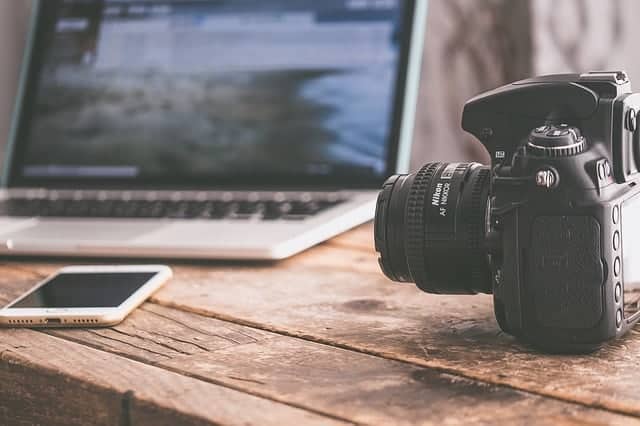
- Laptop – I have a MacBook Air but my friend travels with the MacBook Pro and loves it.
- Portable Hard-Drive – *pro tip* load it up with movies for those chill-out days and use it as a back up for photos whilst you’re away.
- Travel adapter (s) – I recommend buying one that does multiple countries.
- Powercube – perfect for plugging multiple devices and USBs at once.
- Noise cancelling headphones (I love my Sennheiser PXC550 s – read my full review here )
- Headtorch – we recommend the Black Diamond brand.
Also, if you are a bit of a bookworm and can’t decide on what book to pack. Why not invest in a Kindle ? It’s compact and lightweight, making it the perfect backpacker gadget!
Miscellaneous Backpacking Essentials
This is a little section for all those odd items that few people remember to pack but if you do, you will wonder how you ever survived without them. It’s possibly one of the most important backpacker gear guide sections in this list(!):
- Eye Mask & Earplugs (particularly good if you are staying in hostels with lots of snorers – and if that’s the case, a sleeping bag liner might be a good idea too!)
- Eco-Friendly Refillable Water bottle (check out our guide to the best water bottles for trave l here)
- Backpacking food (i.e Snacks or other food ideas!)
- Laundry Bag – only has to be a simple thing but it’s a good way to keep dirty clothes separate when you have to throw everything in the one bag.
- Sun Protection – hat, sunscreen, after-sun, etc.
- Day Bag/ Day Pack
- Travel locks
- Travel pillow
8 Bits of Backpacking Gear That You DON’T Need (Unless you camp!)
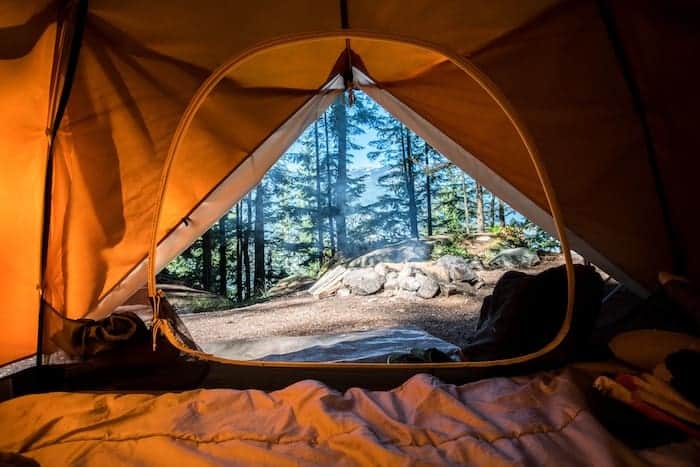
Essentially it would be an entirely different gear checklist – and for a typical backpacker adventure or backpacking trip i.e. southeast Asia, North America, Middle East, Coast Rica, etc 90% of the time you won’t need such involved pieces of gear.
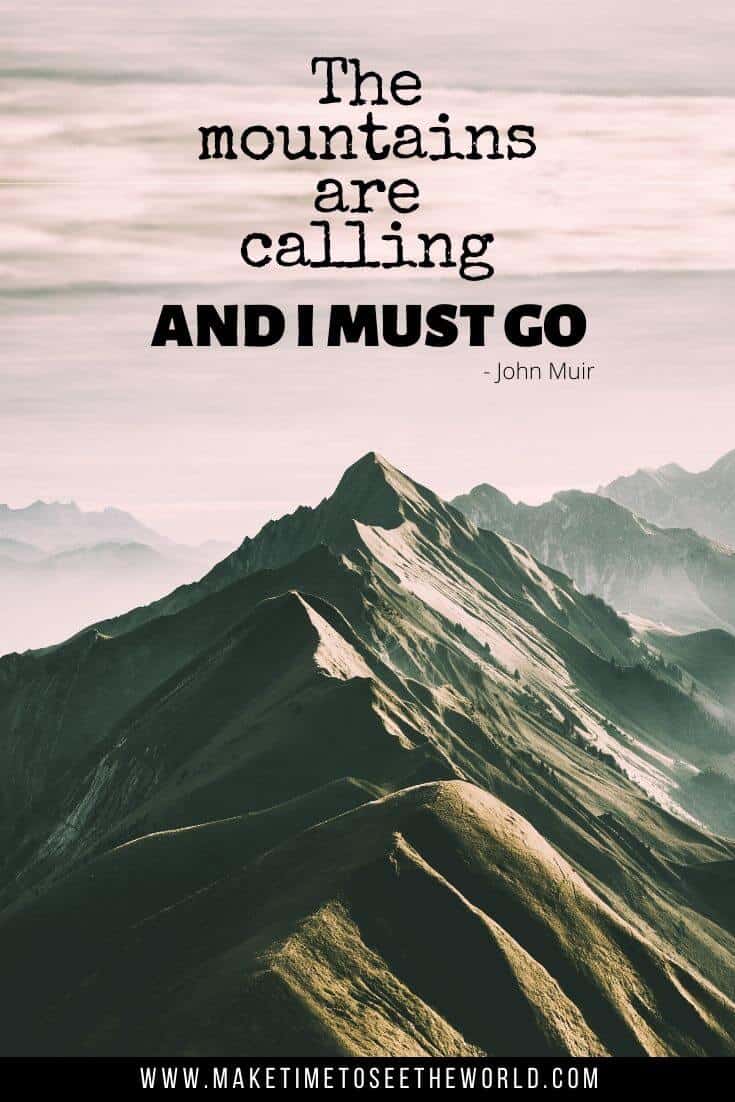
Just a little mountain quote from John Muir to get you excited for your adventure! Check out our full list of mountain quotes here!
Have we missed anything? We hope not! And that’s a wrap, folks. I hope you have found this Backpacking packing list super helpful for your backpacking trip and full of packing tips, backpacking gear items and top travel essentials to help you decide on your own backpacking essentials for your trip of a lifetime. See below for the free downloadable backpacking checklist packed with essential backpacking tips to help you with your trip planning!
And if you liked this post, please share on Facebook, tweet, pin or flip – I’d really appreciate it!

And if you liked this what to bring backpacking list – which is full of backpacking must haves, take a look at the other packing lists , gear guides, gear list and basic hiking gear guides in this series:
- The Ultimate Road Trip Packing List – keeping you and your car happy, entertained & healthy on the road
- The Ultimate Ski Trip Packing List – packed full of ski essentials to help you have the best time on the piste
- How to Pack your Carry On Like A Pro – full of travel tips to make the most of those pesky weight and space restrictions!
- The Ultimate Cruise Packing List – because when you only have to unpack once, you’re going to make sure you have everything you need!
Hi There! Thanks for reading my travel guide to The Ultimate List of Backpacking Essentials: Everything you need for the trip of a lifetime packed with ALL the essentials for backpacking! I just wanted to let you know that this post contains affiliate links, which means if you purchase something after clicking a link, I may get a small commission – which is at absolutely no cost to you . If you enjoyed this article and are going to be searching for some of the things I mention anyway, I would love it if you could click through from the links above & thank you in advance! Read my full Disclosure here .
And Thank you for reading the MakeTimeToSeeTheWorld travel blog posts.
Thursday 23rd of May 2019
Thanks for the info. US Marine hear, really great info. Might I suggest a portable camp stool. Btw I wasn't going to buy some things but if you get the cut, let's go!!
Saturday 8th of December 2018
I can't agree more with having a travel bag, Vicki! Always forget to carry it during my trips. I actually think having a portable camping hammock works well if you just want to lounge around.
- Search Please fill out this field.
- Manage Your Subscription
- Give a Gift Subscription
- Sweepstakes
- Travel Products
- Activity + Adventure
- Camping + Hiking
The 7 Best Backpacking Backpacks of 2024
From weekend trips to long-distance treks, these backpacking backpacks have you covered.
:max_bytes(150000):strip_icc():format(webp)/Kevin-Brouillard-Bio-Photo-e1e6e2d6ae6b4bdfa33d8b1b82bd2921.jpeg)
In This Article
Jump to a Section
- Our top picks
- Tips for Buying
- Why Trust T+L
We independently evaluate all recommended products and services. If you click on links we provide, we may receive compensation. Learn more .
Travel + Leisure / Brian Kopinski
I’ve been backpacking in various capacities for over a decade from off-the-grid wilderness treks to hostel hopping around Europe. Whether you’re planning to head out for a day trip , an overnight hike, or extended excursion, choosing the right backpacking backpack is essential to ensure a safe and enjoyable trip. Backpacking backpacks come in a range of designs, from ultralight models for speedy, minimalist hikers to more burly packs suited for lugging heavier loads (or even checking if you're flying).
Besides holding all your equipment, gear, and provisions, a quality pack should be comfortable to carry and fit your frame. When choosing the best backpacking pack for my trips, I consider performance, durability, value, and versatility for different durations and weather conditions. If you’re gearing up for your first backpacking trip or looking to level up with a new pack, check out my favorite options below.
Best Overall
Osprey kestrel 58 pack.
It’s a versatile, full-featured pack made with durable materials that will last for years to come.
This is quite a large and hefty pack that may be too heavy for lighter trips.
For an all-around performer that’s suitable for weekend and long-distance trips in varied climates, the Osprey Kestrel 58 is my top pick along with the women’s specific version: the Osprey Kyte 58L Pack . Osprey backpacks are well-known for their top-notch performance and lasting durability. My first Osprey Kestrel is over a decade old and accompanied me up all 12,244 feet of Indonesia's Mount Rinjani and to every corner of Cambodia during my two-year Peace Corps service. The current model incorporates a revamped back panel: the AirScape system. It offers adjustable torso lengths and breathability while delivering close contact and excellent weight distribution on the lower back.
The Kestrel’s use of 420-denier nylon in the pack body provides exceptional durability against wear and tear, even compared to other Osprey packs. I love that it’s equipped with a detachable rain cover, and how easy the cover is to pull over even fully loaded packs. There’s plenty of options for storage and organization, too. It has five external pockets, trekking pole holders, and daisy chains for adding more gear. I’m a big fan of packs with multiple access points, and the Kestrel offers easy entry from the top and front. To expand my storage options, I typically make use of the sleeping bag straps to hold dirty clothes on longer trips.
The Details: 420-denier nylon and 500-denier high-tenacity nylon | 4.7-4.9 pounds | Size S/M and L/XL | 58 liters | Waterproof
Best Lightweight
Gossamer gear mariposa 60 backpack.
Gossamer Gear
This ultralight pack offers a frame that moves with your gait and a choice of hip belt design for a tailored fit.
It’s water-resistant, not waterproof.
When every ounce counts, the Gossamer Gear Mariposa 60 is an excellent choice for lightening your load on the trail. With a 60-liter capacity, it delivers an impressive weight to storage ratio of roughly 0.54 ounces per liter. The main compartment is spacious, and there are seven exterior pockets for stashing water bottles and trail essentials. The pack is made with robic nylon, which helps save on weight, but doesn’t offer much for waterproofing. However, this can be resolved by adding Gossamer’s waterproof pack liner .
I love that the modular design allows the Gossamer to be configured for optimal weight and fit preferences (for example, the choice of a straight or curved hip belt). The Mariposa’s hip belt, back padding, and aluminum frame can be removed to make the pack even lighter, though this sacrifices comfort and ability to carry the pack fully loaded. There are also load lifters that work with the frame to relieve pressure on the shoulders, if desired.
The Details: Recycled nylon | 2.1 pounds | Size S-L | 60 liters
Best for Beginners
Rei co-op trailmade 60 pack.
It’s a highly adjustable pack with comfortable padding and intuitive organization that new and experienced hikers will appreciate.
The weight is middle of the road for a backpack this size.
The REI Co-op Trailmade 60 Pack is a user-friendly introduction to backpacking. Dialing in the right fit is essential when backpacking, and REI’s adjustable design makes this a seamless process. REI’s Trailmade collection is focused on more inclusive sizing options and affordability for new hikers and backpackers as well. To that end, the Trailmade 60 Pack is designed with an adjustable back length and a range of hip belt sizes. Both the men’s and women’s packs can fit waists and hips between 32 and 58 inches and the torso length is easily tweaked with a Velcro strap. I appreciate that adjustment directions (and packing tips) are printed on the underside of the top lid for even easier set up. The top-loading compartment is easy to use, and the option to configure a separate compartment for a sleeping bag (or dirty clothes) comes in handy on multi-day trips. I’m also a big fan of how accessible the water bottle holders are while wearing the pack.
The Details: Recycled nylon | 3.2-3.7 pounds | 60 liters
Best Organization
Deuter aircontact core 65+10l backpack.
Backcountry
It has multiple access points and numerous exterior and interior pockets.
It only comes in one size.
Having quick and easy access to essential gear saves time and hassle on the trail; not to mention, it makes setting up camp after an arduous day that much easier. The Deuter Aircontact Core Pack 65 + 10 gives backpackers a wealth of storage and functionality (do note that the women’s version of the Aircontact Core is designed as a 60 + 10 backpack). I love that gear can be packed and accessed from the top, front, and bottom of the bag. There’s a total of six exterior pockets, including zippered hip belt pockets, mesh side pockets, front stash pocket, and a zippered top pocket. The pack also features an interior pocket for valuables, trekking pole holders, and hydration system compatibility. While 65 liters of capacity is sufficient for many treks, I appreciate the ease of expanding the collar on the main compartment for an additional 10 liters of storage if needed. Though it only comes in one size, the VariSlide system allows for easy and exact adjustments to your back length for a secure fit. The hip belts and shoulder straps are supportive and adjustable, too, to ensure the pack stays in place
The Details: 235-denier polyamide and 500-denier textured polyamide | 4.9 pounds | One size | Up to 75 liters
Best Ventilation
Gregory katmai 55 pack.
The pack offers excellent air flow and ventilation for staying comfortable on the trail.
The sturdy frame and full set of features add some weight compared to ultralight models.
It’s easy to work up a sweat while backpacking — the Gregory Katmai 55 Pack offers top-notch breathability and ventilation when things heat up. The pack is equipped with Gregory’s FreeFloat 360 suspension system — a highly ventilated back panel that conforms to the shape of the lower back while allowing optimal air flow between you and the pack. I appreciate that the ventilated back panel is also treated with Polygiene Stays Fresh Technology to diminish odor-causing bacteria.
I also love that the pack offers inclusive sizing. The S/M fits waists/hips from 25 to 48 inches and torso lengths from 15 to 19 inches, while the M/L goes up to 53 inches for the waist/hips and 22 inches for torso length. The Katmai is a men’s specific pack, but the Gregory Kalmia 50 Pack is a similar model specifically designed for women.
The Details: 210-denier nylon and 420-denier nylon | 4.6 pounds | Size S/M and M/L | 55 liters | Water-repellent
Best for Heavier Loads
Osprey aether 55 pack.
The customizable fit and suspension system aid in hauling considerably more gear than models of comparable weight and capacity.
It’s on the heavier side if you don’t intend to make use of its hauling capabilities.
Whether planning for a longer trek or carrying gear for others, having the option to haul more can be a major plus. The Osprey Aether 55 Pack (or Osprey Ariel 55 Pack for women) boasts an impressive load range of up to 60 pounds (when fully expanded). To handle heftier loads comfortably, the pack employs a close-to-body carry design. This is accomplished with Osprey’s AirScape injection-molded back panel that fits snug to the body, plus adjustable hip belt and torso length and shoulder straps that can be fine-tuned on the trail as needed. As an avid hiker, I appreciate that much of the weight sits on the hip belt and lumbar area to avoid strain in the shoulders.
Multiple access points and numerous loops and pockets make it easy to keep things organized while piling on lots of gear and provisions as well. When fully loaded, the twin compression straps come in handy for balancing weight and keeping gear in place.
The Details: 420HD nylon pack cloth and 210-denier nylon Diamond | 5 pounds | Size S/M, L/XL | 55 liters
Most Comfortable
Rei co-op flash air 50 pack.
It’s ultra lightweight and adjustable so you can get a tailor-made fit.
The thin materials may not be as durable as other options.
For a lightweight backpack that doesn’t offload the pack weight onto your shoulders, we love the Flash Air 50 Pack for both men and women. The pack weighs less than two pounds, making this a great option for thru-hikers, weekend adventurers, and overnight travelers alike. While this pack is quite minimalistic with few pockets, it does have external pouches large enough to hold your water bottle and other essentials.
We love the light nylon fabric, but it is a bit thin and could snag if caught on branches. We also recommend investing in a raincover if you’re heading off on a longer adventure. But overall, the hip belt and ventilated back panel make this pack an overall comfortable option regardless of your hiking destination and style.
The Details: Ripstop nylon | 1.88 pounds for medium | Size S-L | 50 liters for medium
Tips for Buying a Backpacking Backpack
Be sure to find a proper fit.
Features aside, the best backpack is one that fits you well. Your torso length — a measurement that’s likely not top of mind — is a key determining factor in finding a proper fitting backpack . Thankfully, torso lengths are listed with any reputable backpacking backpack. Your torso length is the distance from where your shoulders and neck meet (the C7 vertebra to get technical) to the point of the lower back that’s aligned with your hip bones.
The fit along the hips and waist is also critical and, thankfully, easier to measure. Simply wrap a tape measure just above where you’d wear a belt to get your hip measurements. While at-home measurements can give a rough idea to narrow your search, trying on a pack is critical before embarking on a trek. Check that the hip belt sits on top of the hips, as this is where most of the pack weight should rest. Shoulder straps should be snug but only carrying a modest amount of weight. If a pack is sitting on the hips correctly and not touching the shoulders, shorten the torso length or change pack size.
Note that many packs offer some level of adjustability for torso length and hip belts. Extra features like load lifters and sternum straps can enhance the fit but be cautious about over-tightening these to avoid transferring too much weight onto the upper body.
Consider overall weight
The trip duration, weather conditions, and necessary gear will have some bearing on how much you need to pack, but a general rule of thumb is that a backpacking backpack should not exceed 20 percent of your weight when fully packed. To strategize your packing, start with the actual weight of the backpack plus truly essential equipment. Carefully planning out how much water, snacks, and food you should bring is best to avoid unnecessary weight. Typically, food amounts to 1.5-2.5 pounds per day per person, and this weight lessens as the trip goes on.
It can take some trial and error to figure out what gear and equipment is essential for your backpacking style and preferences. After each trip, consider which items you used frequently versus sparingly or not at all to fine-tune your backpacking packing list.
Think about breathability
A breathable and well-ventilated backpack is important for comfort and reducing sweat on the trail. If your backpacking trip has limited or no access to potable water (such as deserts and arid environments), cutting down on perspiration can make a big difference. Assess the ventilation in the back panel of any backpack when comparing options.
A good size for a hiking pack depends on your needs, but 10-30 liters is fairly standard for day trip packs. For a weekend backpacking trip or thru-hike, consider leveling up to 30-50 liters.
Most backpacking backpacks use an internal frame system. An external frame may come in handy if carrying larger gear that can’t fit within the backpack, while frameless models are popular with ultralight backpackers carrying only the essentials.
Pack denser and heavier items toward the bottom and middle of the backpack for optimal weight distribution with smaller and lighter items on top. Anything you’ll want quick access to on the trail can go in exterior pockets or the top of the backpack.
Why Trust Travel + Leisure
Kevin Brouillard specializes in outdoor gear and apparel. His work has also been published in TripSavvy, Jetsetter, and Oyster, and he served in the Peace Corps in Cambodia for two years. Kevin used his backpacking and camping experience to curate this list of the best backpacking backpacks.
Love a great deal? Sign up for our T+L Recommends newsletter and we’ll send you our favorite travel products each week.
:max_bytes(150000):strip_icc():format(webp)/TaylorFoxHeadshot-7375be27aedf4b0ea0e0189a4befe7d0.jpeg)
2-FOR-1 GA TICKETS WITH OUTSIDE+
Don’t miss Thundercat, Fleet Foxes, and more at the Outside Festival.
GET TICKETS
BEST WEEK EVER
Try out unlimited access with 7 days of Outside+ for free.
Start Your Free Trial
Powered by Outside
5 Dream Hiking Trips You Can Take For Cheap This Summer
Break trail (not the bank) at these budget-friendly life-list hiking destinations..
Heading out the door? Read this article on the new Outside+ app available now on iOS devices for members! >","name":"in-content-cta","type":"link"}}'>Download the app .
While the act of hiking itself may not be pricey, everything surrounding a hike-centric vacation sure is—from booking flights to buying a backpacking permit to reserving accommodations on the bookends of your trip. But if you plan your adventure with airfare deals, exchange rates, and budget-friendly travel hacks top of mind you can avoid a potential blow to your wallet.
We researched flights from the central hub of Denver to affordable hiking destinations across the globe. We also did some digging for local travel hacks to make your adventures at these destinations more thrifty. Here’s where to travel in 2024 if you’re vying to go on a low-cost hiking adventure that’s worth every cent.
San José, Costa Rica
Flights from Denver International Airport: Starting at $394 round-trip
Exchange Rate (as of time of publication): 1 USD = 503.17 CRC
The best things in life are free—like hiking. And there are plenty of trails to explore in and around the capital city of San José, Costa Rica. During peak summer travel months, you can’t beat under $400 flights from Denver that drop you at the foothills of a dense tropical cloud forest covering the Cordillera de Talamanca mountain range. A favorable exchange rate for the Costa Rican colón also means your spending money will go further.
Parque Eólico Santa Ana; Parque Nacional Tapantí – Macizo de la Muerte; Braulio Carrillo National Park
Hike local at the lush Eolico del Valle Central Park, a 45-minute drive from the city center. You can get to the park by public bus for under $2 one way, departing from Costado Sur Parque Beneméritos De La Patria. Don’t miss hiking the Pico Blanco por Ventoleras trail (5.6-mile loop) that will challenge you with over 2,300 feet of elevation gain but reward you with panoramic valley views.
For more rugged hiking, head to Braulio Carrillo National Park —one of Costa Rica’s largest national parks. The mix of high-altitude cloud forest and lowland tropical rainforest caters to all hiking styles—from the Cacho de Venado trail (3.6-mile loop) up the Barva Volcano to the jungle-engulfed Zurqui Trail (7 miles out and back). In a climate prone to rainfall, you’ll drool over the picturesque views of gushing waterfalls while ducking for protection under the enormous palmito leaves, known as the “poor man’s umbrella.”
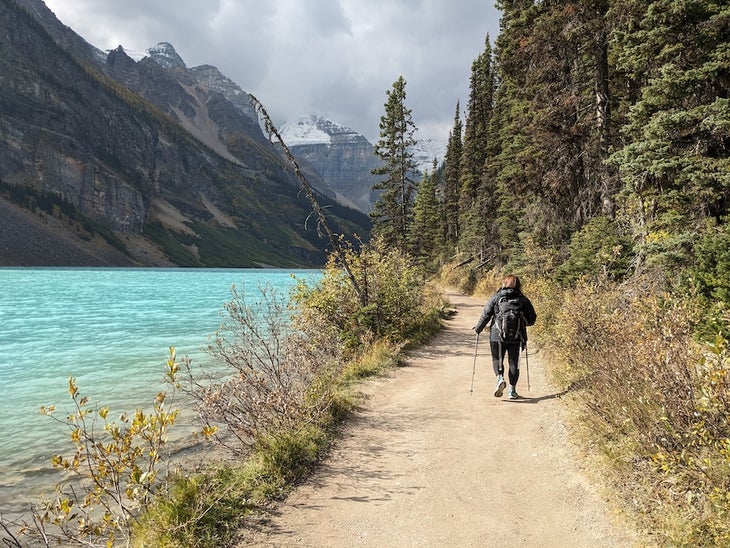
Calgary, Canada
Flights from Denver International Airport: Starting at $340 round-trip
Exchange Rate: 1 USD = 1.37 CAD
Most folks flock to the Canadian Rockies to immerse themselves in the beauty of Banff National Park. But the journey comes with a hefty price tag, especially if you plan to stay a night or two in the heart of town or near Lake Louise before or after your time in the backcountry. Opt to start your journey to the trailhead with a stay in Calgary instead. The mountain-adjacent metropolis offers a less expensive option for dayhikers willing to make a short commute to the trailhead with all the perks an urban outdoor hub has to offer: affordable public transit, free festivals, and access to an abundance of parks and green space.
Where to Hike
Bragg Creek Provincial Park; Spray Valley Provincial Park; Banff National Park
Between the foothills of Banff National Park and the vastness of the Canadian Prairies, nature surrounds Calgary on all sides. Dayhikers can explore the eastern edge of Kananaskis Country in Bragg Creek Provincial Park on Telephone Trail (9.3-mile loop) or Elbow Trail (7-mile out and back), or wander deeper into remote wilderness in Spray Valley Provincial Park along the Tent Ridge Trail (6.3-mile loop). National Park purists or Banff-bound thru-hikers can also catch a $10 shuttle via On-It Transit from Calgary to Banff.
San Juan, Puerto Rico
Flights from Denver International Airport: Starting at $219 round-trip
Exchange Rate: USD
Soak in the summer sun on the trail without spending a fortune. Flights to San Juan from Denver start at just over $200 in June and July. You can start your days on the trail early to beat the humid mid-day heat and end your afternoons relaxing at the beach. Camping is limited in this region of Puerto Rico but you can save money with a hostel stay in town at Santurcia Hostel ($79 per night) or the beachside Casa Coral Luquillo ($92 per night) in Luquillo, a small beach town an hour east of San Juan. You can also splurge a little and stay on the edge of El Yunque National Forest at Rainforest Inn ($234 per night) with full bed and breakfast amenities and easy access to the trails.
El Yunque National Forest; Bosque Estatal de Carite
Take a short 40-mile drive west of San Juan to a dayhiker’s paradise: El Yunque National Forest . The lush rainforest landscape is full of hidden waterfalls, cool swimming holes, and foliage as far as the eye can see. Popular spots for dayhikes include the El Yunque Trail (5.4-mile out and back) to the top of El Yunque Peak and the Tradewinds Trail (4.6-mile out and back), each showcasing the region’s misty cloud forests, footpaths overflowing with flowering foliage, and moss-covered terrain. Travel a bit further to Bosque Estatal de Carite , or Carite State Forest. The one-hour trip south of San Juan is worth it for a short but stunning 1-mile rainforest hike that leads to El Charco Azul, a radiant blue, 40-foot-wide freshwater swimming hole.
Flights from Denver International Airport: Starting at $439 round-trip
Exchange Rate: 1 USD = 3.70 SOL
Hikers typically head to Cusco, Peru, to make the iconic pilgrimage to Machu Picchu to hike the classic Inca Trail. But you can cut the cost of your flight to Peru in half by opting instead for the capital city of Lima, which lies 1,100 miles west. Characterized by its oceanside hikes that resemble the coastlines of California, you’ll also savor Peruvian culture in Lima with affordable eats in town. Pro tip: Ask for the “Menu del dia” (translates to “menu of the day”) to keep costs down. This style of meal typically includes a drink, soup, entreé, and a side for only 15 soles (or $4).
Reserva Paisajistica Nor Yauyos-Cochas and Zona Reservada Cordillera Huayhuash
Escape the city for dayhikes and camping overnights in the trail-rich towns of Huancaya and Vilca to the east. Use the money you saved on a flight for a car—your best option for getting to the trailhead in nearby forest areas and nature reserves. You’ll need to drive around 7 hours through the Andes to get there but the route is beyond beautiful.
Free camping is abundant in Reserva Paisajistica Nor Yauyos-Cochas, also called the Nor Yauyos-Cochas Reserve. This reserve is known for waterfalls that cascade into turquoise lagoons surrounded by a backdrop of eucalyptus-covered mountains topped with snow-capped peaks. Here you’ll find spots for primitive camping in Huancaya on the banks of the Cañete River, or you can sleep with creature comforts at Huancaya Glamping . A five-hour farther east drive into the Andes, you can camp within the eucalyptus forests surrounding Vilca on the edge of the San Cristobal and Cantagallo hills.
Head north of Lima to Zona Reservada Cordillera Huayhuash to experience some of the most remote mountains of South America in the Peruvian Amazon. Backpackers can take on the famed Cordillera Huayhuash Circuit, a high-altitude mountain pass flanked by dramatic mountain faces and piercing glacial lakes the entire route.
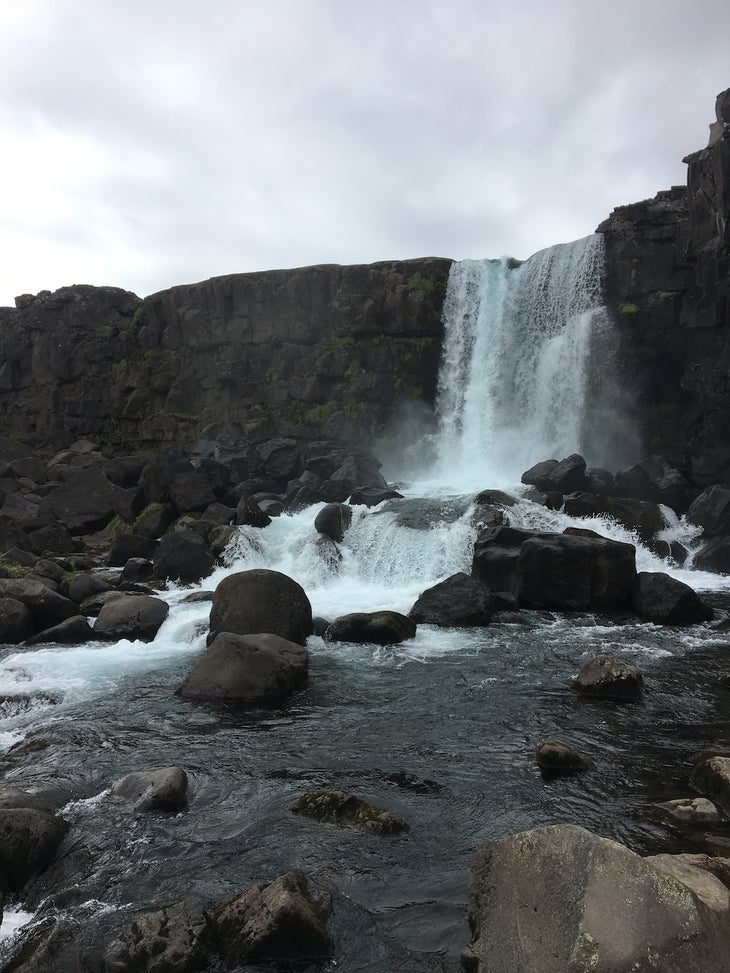
Reykjavík, Iceland
Flights from Denver International Airport: Starting at $670 round-trip
Exchange Rate: 1 USD = 141.77 ISK
Iceland certainly isn’t the cheapest place you can travel. But if you plan your adventure with budget hacks in mind—like using public transit and backpacking instead of hotel hopping—you can lock in a relatively affordable trip. From Denver, you should be able to land airfare to Reykjavík for under $1,000 during the peak summer months of June and July. You can also take the Highland Bus or Strætó bus to nearby towns and popular dayhiking trails, including the iconic mountainous Thórsmörk area three hours southeast of Reykjavík.
Reykjanesfólkvangur Reserve and Thingvellir National Park
Skip the Blue Lagoon for dayhikes in the Reykjanesfólkvangur Reserve on the popular Búrfellsgjá Trail (3.4-mile out and back) and the cliffside Krýsuvíkurfoss Trail (3-mile out and back). The 30-minute day trip journey to the trailheads will cut down on the cost of travel across the country to more remote natural areas but offers equally as stunning views. Búrfell Mountain, a basalt tuya volcano famous in this southeast corner of Iceland, is a hallmark of the reserve. You can also journey to Hveragerði south of the Reykjadalur Valley for dayhiking and camping via the Strætó bus. Soak in a Reykjadalur Hot Spring Thermal River and camp at Reykjamörk Hveragerði Campsite for a cheaper stay. About 45 minutes northeast of Reykjavík you can also explore the “Heart of Iceland”—Thingvellir National Park—or make the journey farther east to backpack the Laugavegur Trek (34-mile point to point). This region of the Icelandic Highlands is arguably one of the most stunning for its hot spring-studded landscape (prime for soaking in) and is surrounded by multicolored rhyolite mountain ranges and vast basalt lava fields. Plan far enough in advance to book one or some of the famous Laugavegur and Fimmvörðuháls on-trail huts .
Popular on Backpacker
Related content from the outside network, what’s it like to go on a 200-person hike better than you think., how to pack for backcountry skiing, the original yosemite firefall, hiker charges mountain lion.

IMAGES
VIDEO
COMMENTS
A good micro-fibre travel towers is essential travel gear on any ultimate backpacking gear list. The Matador micro-fibre towel range are made by travellers for travellers. They are super light, and most importantly dry very quickly and are perfect for all types of backpacking trips. Check Best Price.
This is a comprehensive packing checklist and packing advice for budget backpacking and light travel for adventurers (travel or hiking) — including backpacking essentials, electronics & accessories, adventure gear, toiletries, clothing, useful things and admin. Carrying all backpacking essentials on a wilderness trail in Canada.
I created The Savvy Backpacker to be the most comprehensive resource for planning your trip to Europe. Join me to learn more about the best travel backpacks, train travel in Europe, curated packing lists, European city travel guides, cheap data plans, itinerary planning, and money-saving strategies to help you plan a trip to Europe on a budget.
Gear. Best Backpacking Tent: MSR Freelite 2 Tent: 2-Person 3-Season. Best Sleeping Bag: Therm-a-rest Hyperion 20F/-6C Ultralight Down Mummy Sleeping Bag. Best Sleeping Pad: Therm-a-rest NeoAir ...
The length of your bottoms will be determined by the season you're backpacking in. Winter calls for longer, thicker wear on the legs, plus good underlayer thermals if it's going to be snowy or ...
BACKPACKING FOOD - Good food is really important for any backpacking trip, so it's well worth the effort to put together a simple meal plan before your trip. Keeping food weight down is a critical backpacking skill that usually takes experience to master. A good place to start is our Guide to Lightweight Backpacking Food.Most seasoned backpackers opt for lightweight, calorically-dense ...
Nothing more. This is a complete backpacking checklist that you can download as a PDF. It encompasses everything you need to think of to prepare for an long-distance hike. Includes trip preparation (resupply points, insurance, emergency precautions) and essential gear items (food, clothing, navigation and much more).
Our detailed checklist below covers everything from critical backpacking equipment (tent, pack, sleeping bag, etc.) to kitchen gear, footwear and clothing, health and hygiene products, and personal items and extras. For more information on each product category, many of the headings link to our detailed product round-ups, which are the result ...
2 x T Shirts. 1 x Polo Shirt. 1 x Fleece Top / Zipper (perfect for layering underneath your waterproof when in cold climates) 1 x Berghaus Waterproof Jacket (Combining a waterproof jacket with a fleece top has covered me for most situations on our travels.
Backpack. Typically a 50- to 80-liter backpack. Rain cover or waterproof pack liner. Waterproof compression sacks or storage sacks (optional) For three-season backpacking trips that take a weekend or longer to complete, you should carry a pack between 50 and 80 liters in size.
Take the essentials but remember you're away to travel and make memories. Backpacking is a time to switch off and soak in the moment. These are essential backpacking gear if you need to have technology on the go: Phone (and charger) Laptop (and charger), if you're also working while traveling. Headphones.
Backpacking Packing List - Electronics Checklist. 1. A Laptop. If you work on the road or take online classes, good quality, light, and a fast laptop is an essential item for you. But if you don't, then an iPad or a tablet would be fine for watching movies, staying in contact with others, and reading books. 2.
The West Coast Trail, Canada. One of the more difficult trails in Canada, the West Coast Trail will take you through 75km of rainforest, beaches, mud, rivers, and up more than 100 ladders. Expect to take five to seven days to finish this trek around the southwestern edge of Vancouver Island. The work is worth the views - and bragging rights!
Pack a reusable water bottle (with an in-built filter if necessary) like the LifeStraw Go. Look for packaging-free or refillable toiletries. Bring lightweight bamboo straws and cutlery like this travel cutlery set that comes in a neat roll with a brush for cleaning.
T his backpacking packing list is meant to serve you as a loose outline for long-term budget travel. You'll need to customize it here and there for the geography, climate, and your own desires. Also, this packing list is for backpacking travel…not for walking the Appalachian Trail.The old mantra of packing light is a cliché, and you have heard it so many times before, but really — DO ...
5. Mosquito-Repellent Wristbands. Mosquitos are a relentless nuisance, especially for campers and backpackers. Mosquito-borne illnesses still exist in many parts of the world, and it's better to be safe than sorry. We use these deet-free wristbands that are non-toxic, safe for kids, and use citronella to deter pests.
They are very light and breathable, but also have a semi-good grip, which makes them great for the occasional hike. • 1 Rain Jacket: Please do not pack an umbrella as one gust of wind will send it flying or will break it. Rather invest in a rain jacket. They are easy to roll-up and barely take up any space in your bag.
Check Fairview Prices. A more expensive, premium quality option is The Backpacker from Salkan. This larger 55-litre pack includes a detachable 20-litre day pack and is one of the most beautiful packs we've ever tested. However, it does come at a much higher price point.
Always keep important stuff at hand. Keep documents in a travel purse, bum bag or any smaller bag that is on you at all times. Pack other things you might need quickly (hand sanitizer, tissues etc.) in the front pocket of the backpack. Pack versatile travel clothes that can be combined in almost any way.
Muscle relief cream. Diarrhea relief tablets. Mosquito repellent and bite relief spray ( bugs love me and so I never leave home without these!) Glucose or other sugar to treat hypoglycemia (essential items for backpacking if planning a trip in extreme conditions) Oral rehydration salts (essential if backpacking in extreme conditions) A half ...
The Katmai is a men's specific pack, but the Gregory Kalmia 50 Pack is a similar model specifically designed for women. The Details: 210-denier nylon and 420-denier nylon | 4.6 pounds | Size S/M ...
While the act of hiking itself may not be pricey, everything surrounding a hike-centric vacation sure is—from booking flights to buying a backpacking permit to reserving accommodations on the bookends of your trip. But if you plan your adventure with airfare deals, exchange rates, and budget-friendly travel hacks top of mind you can avoid a potential blow to your wallet.
This is a great value policy offering £5,000 in cancellation cover, £2 million medical and repatriation cover, and £2,000 for baggage. The excess is reasonable at £75 per person per section ...